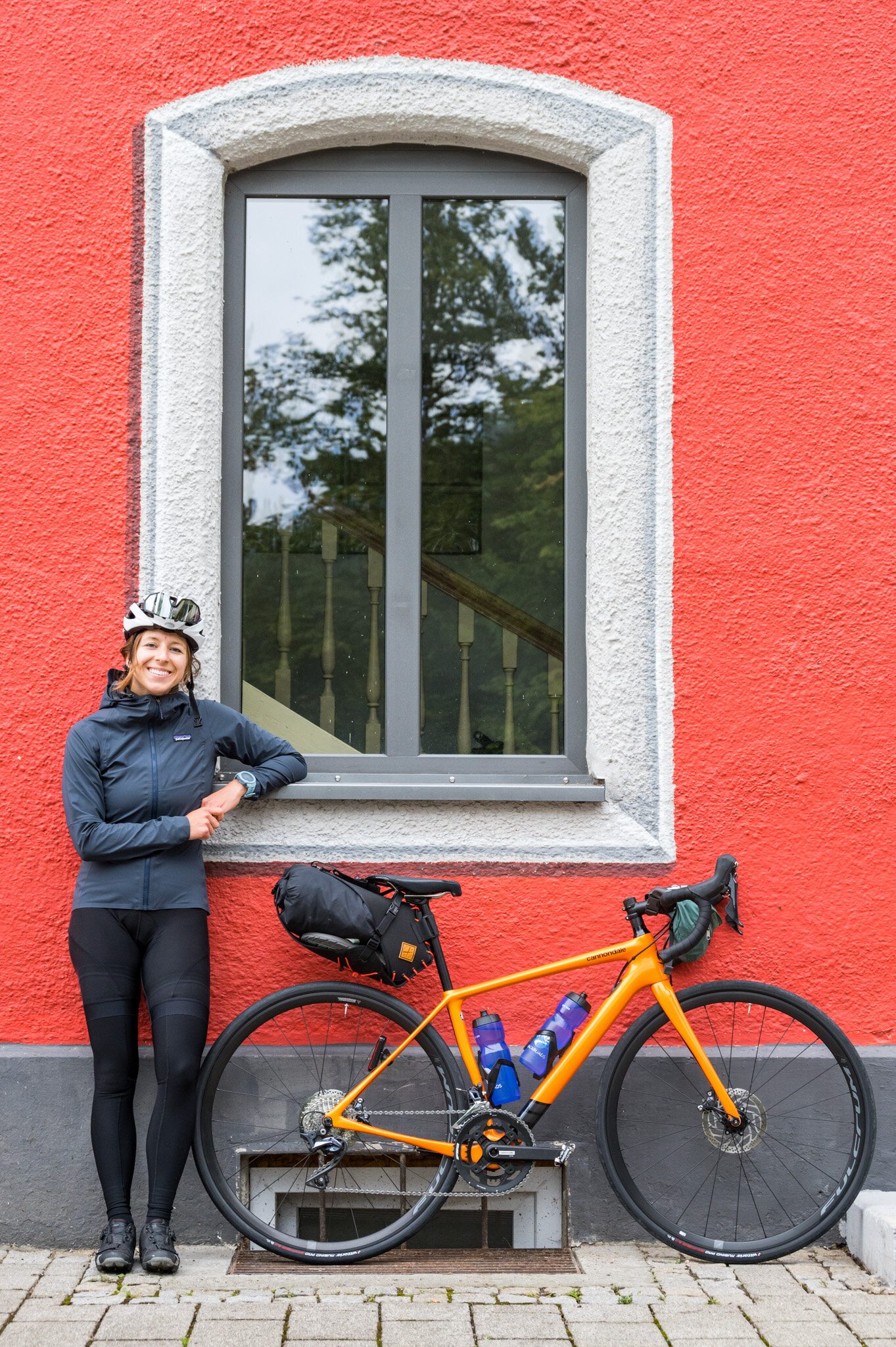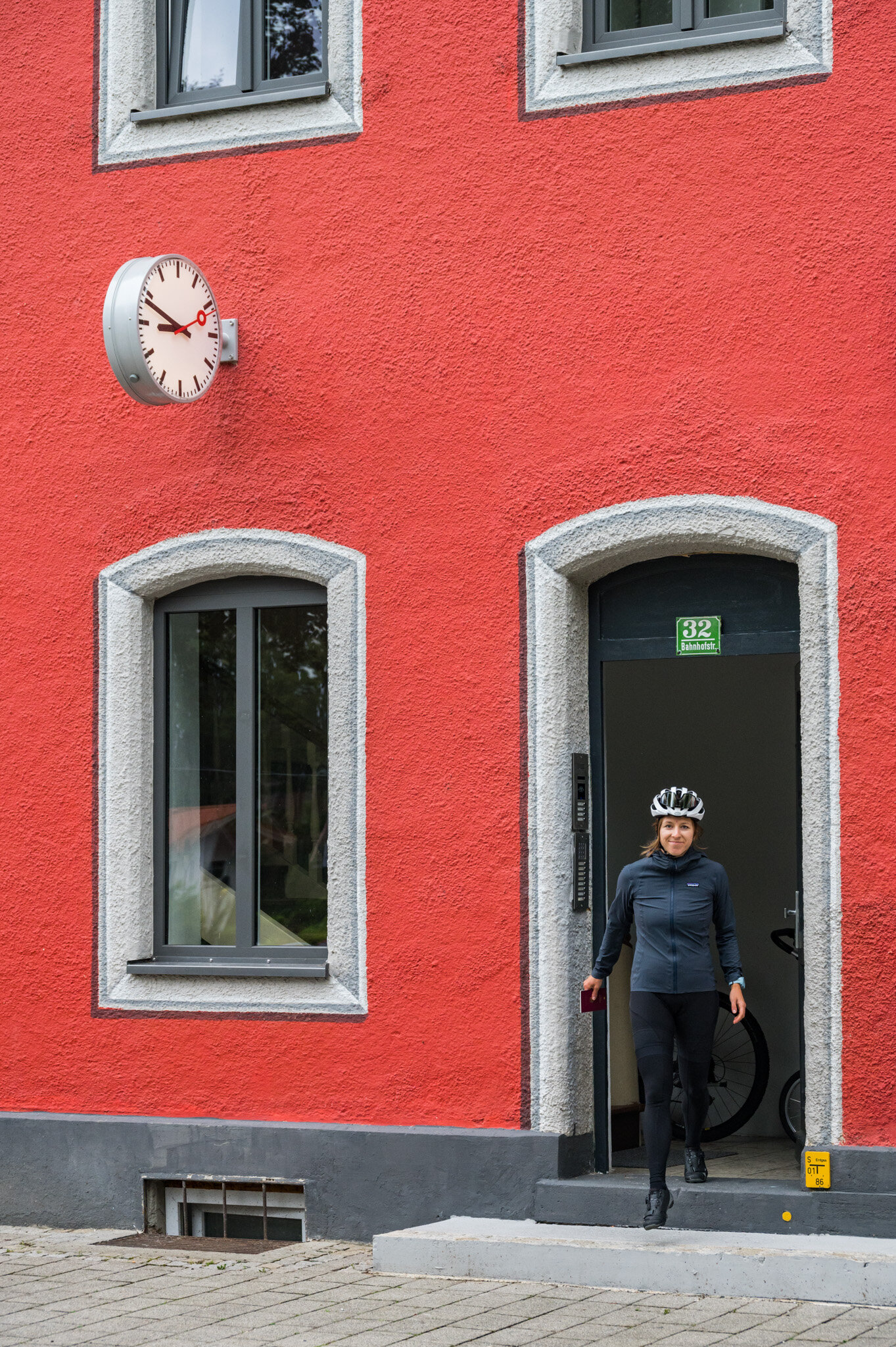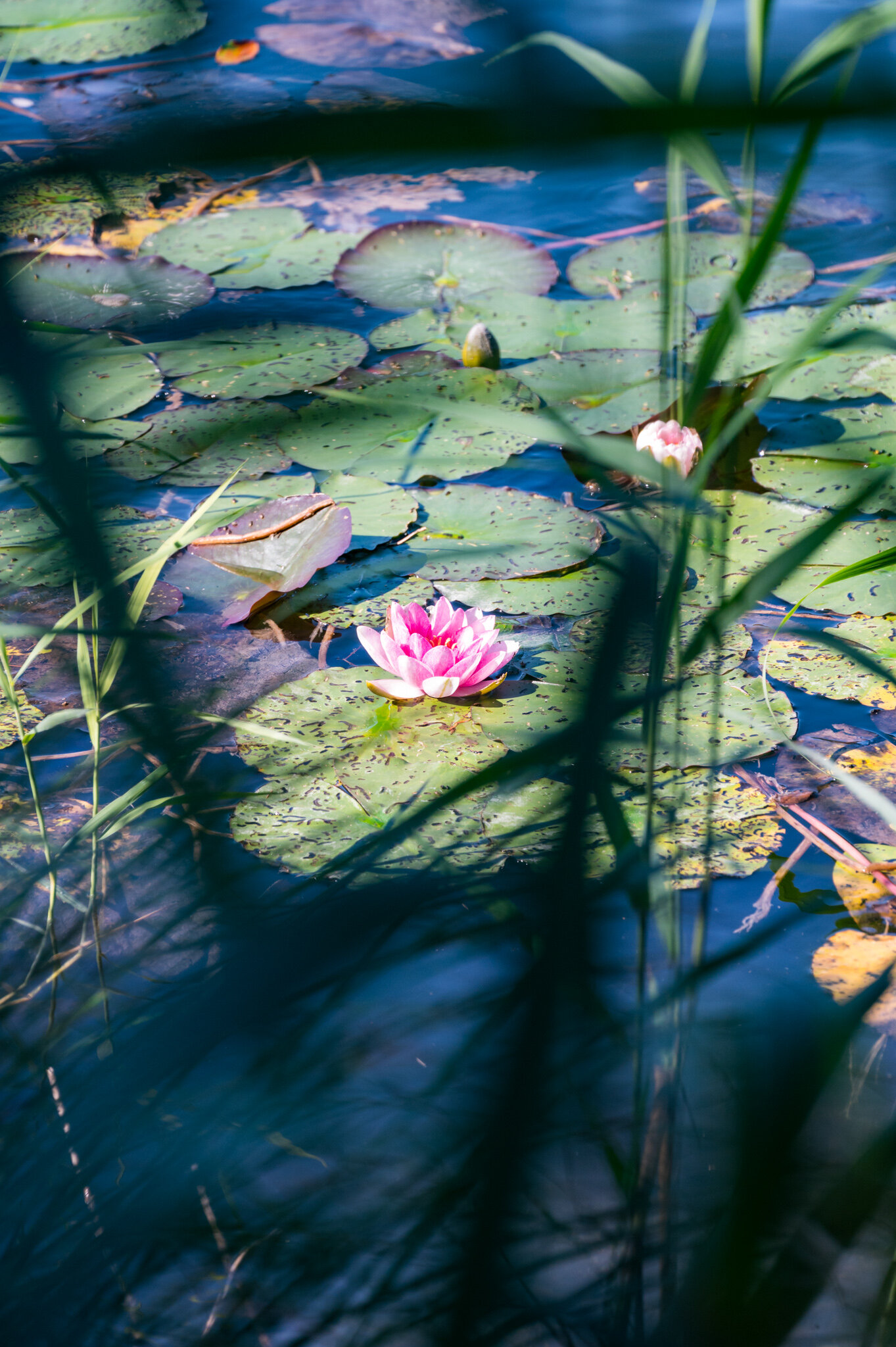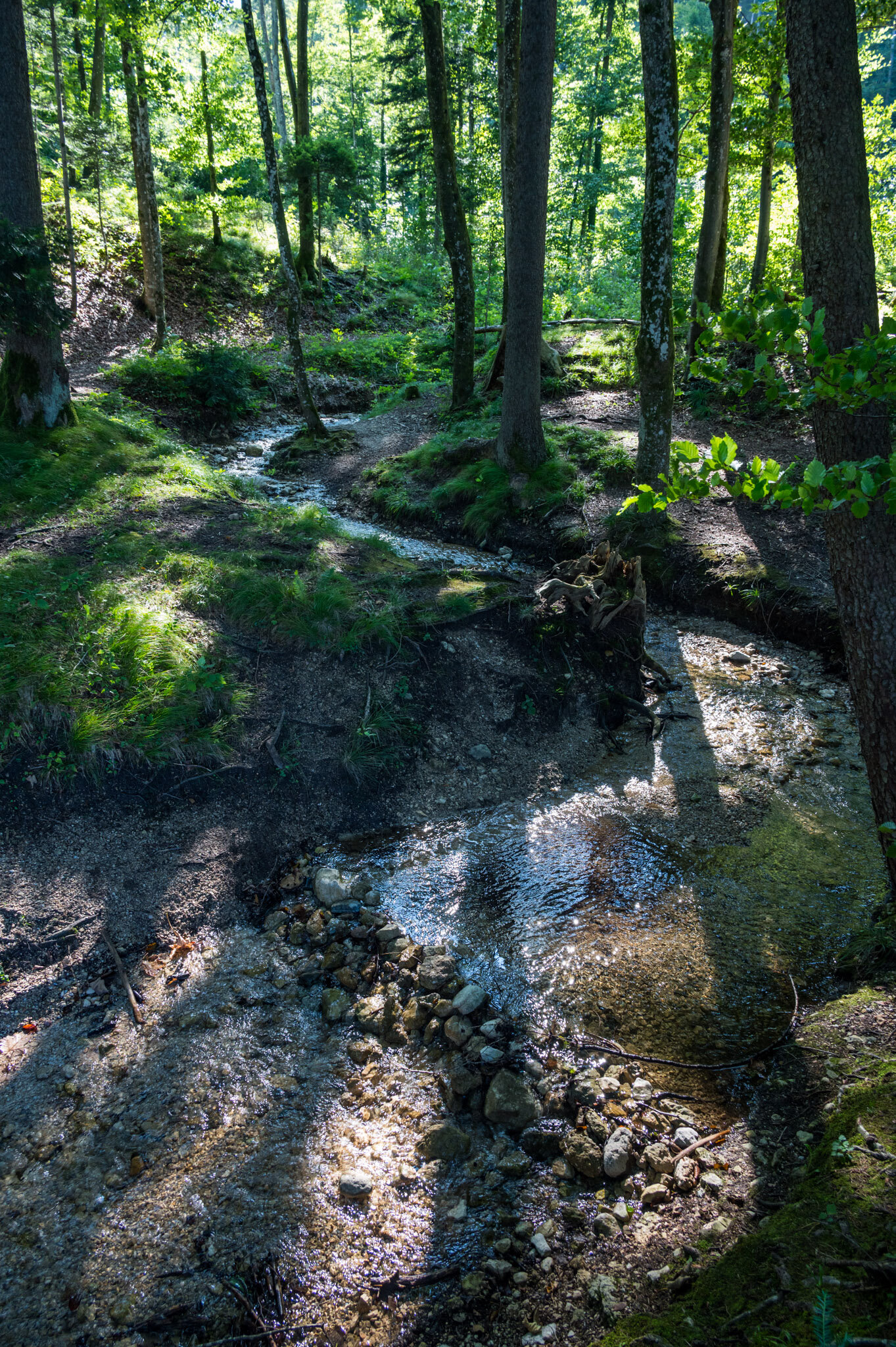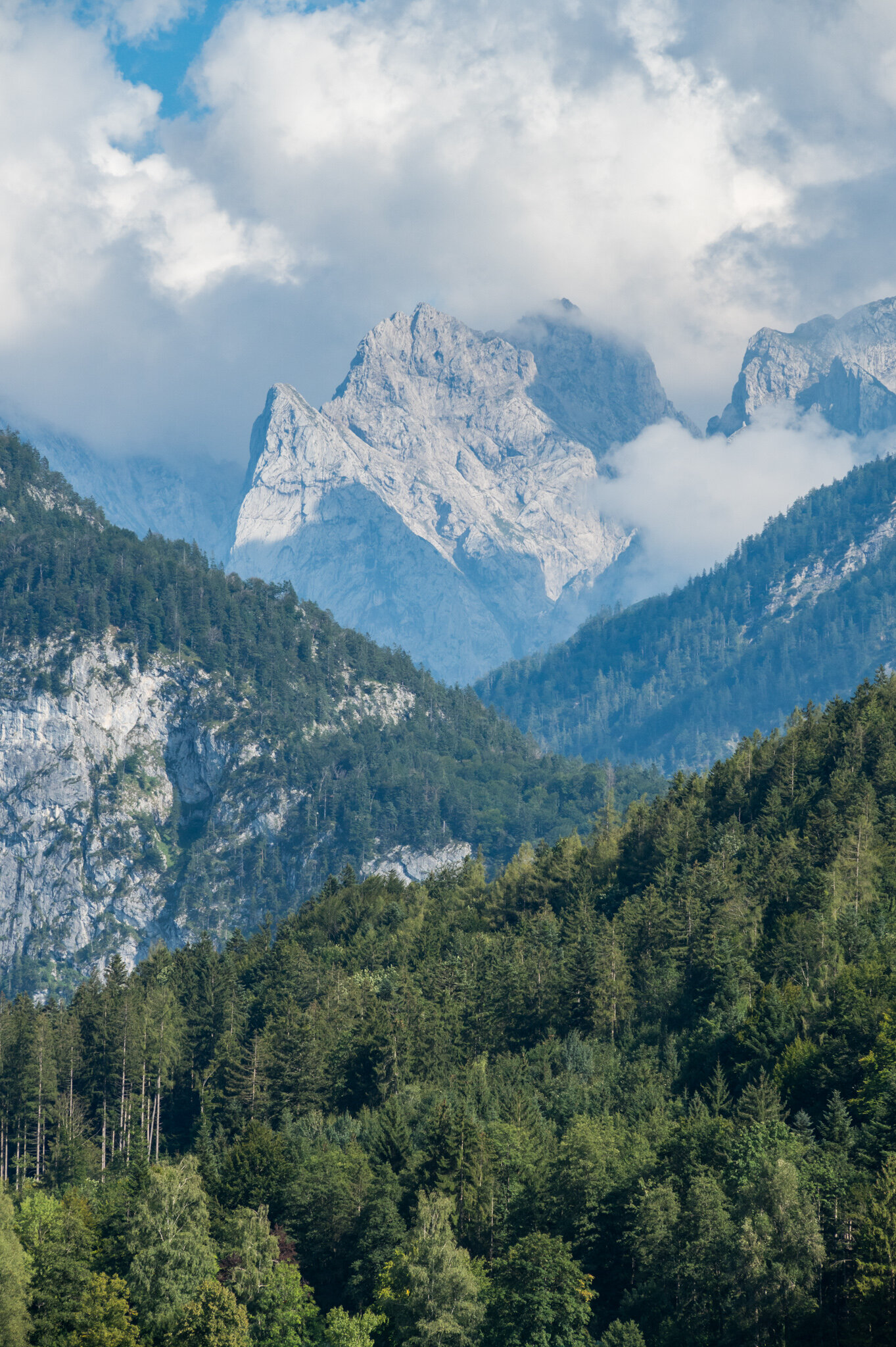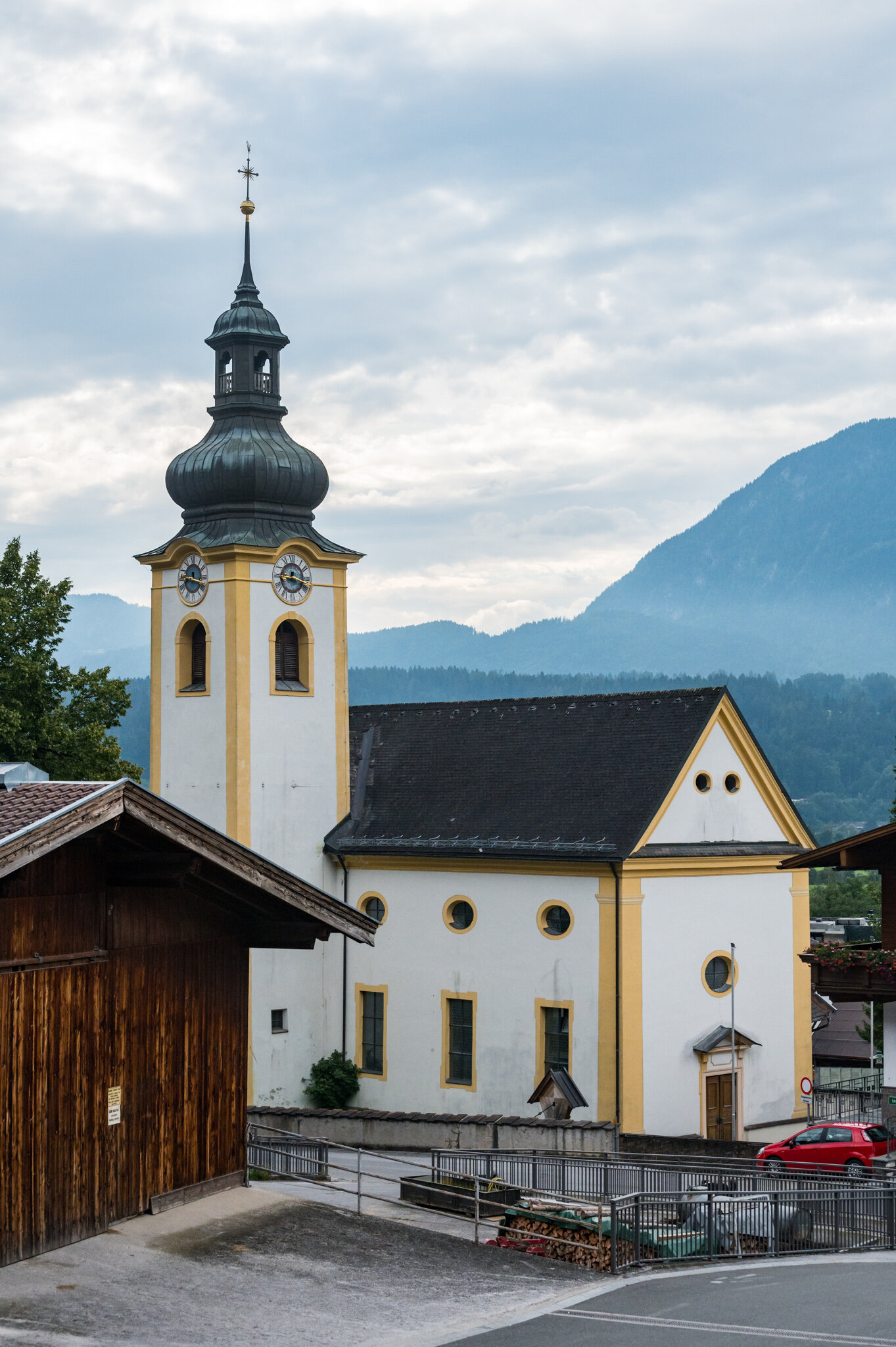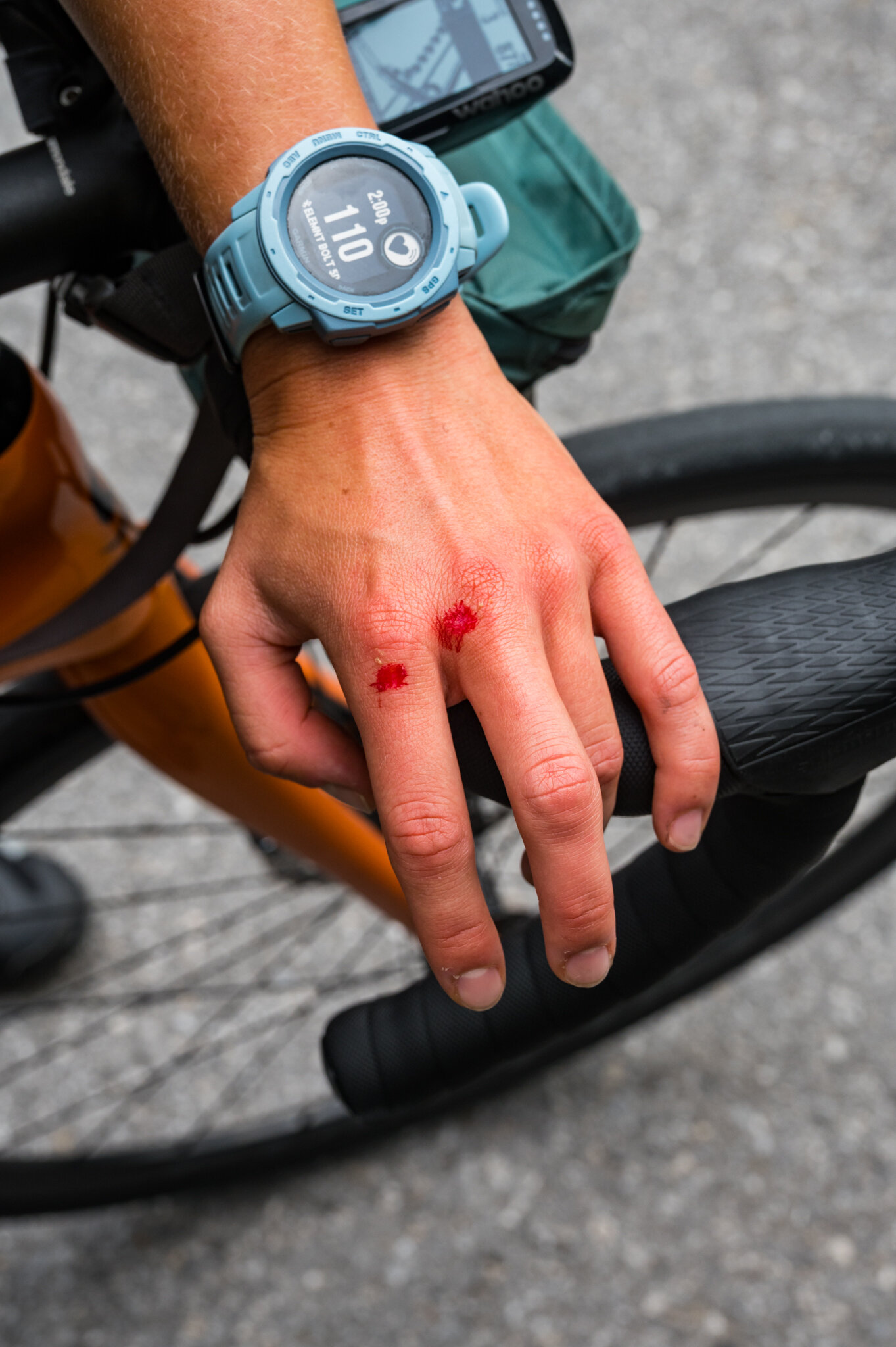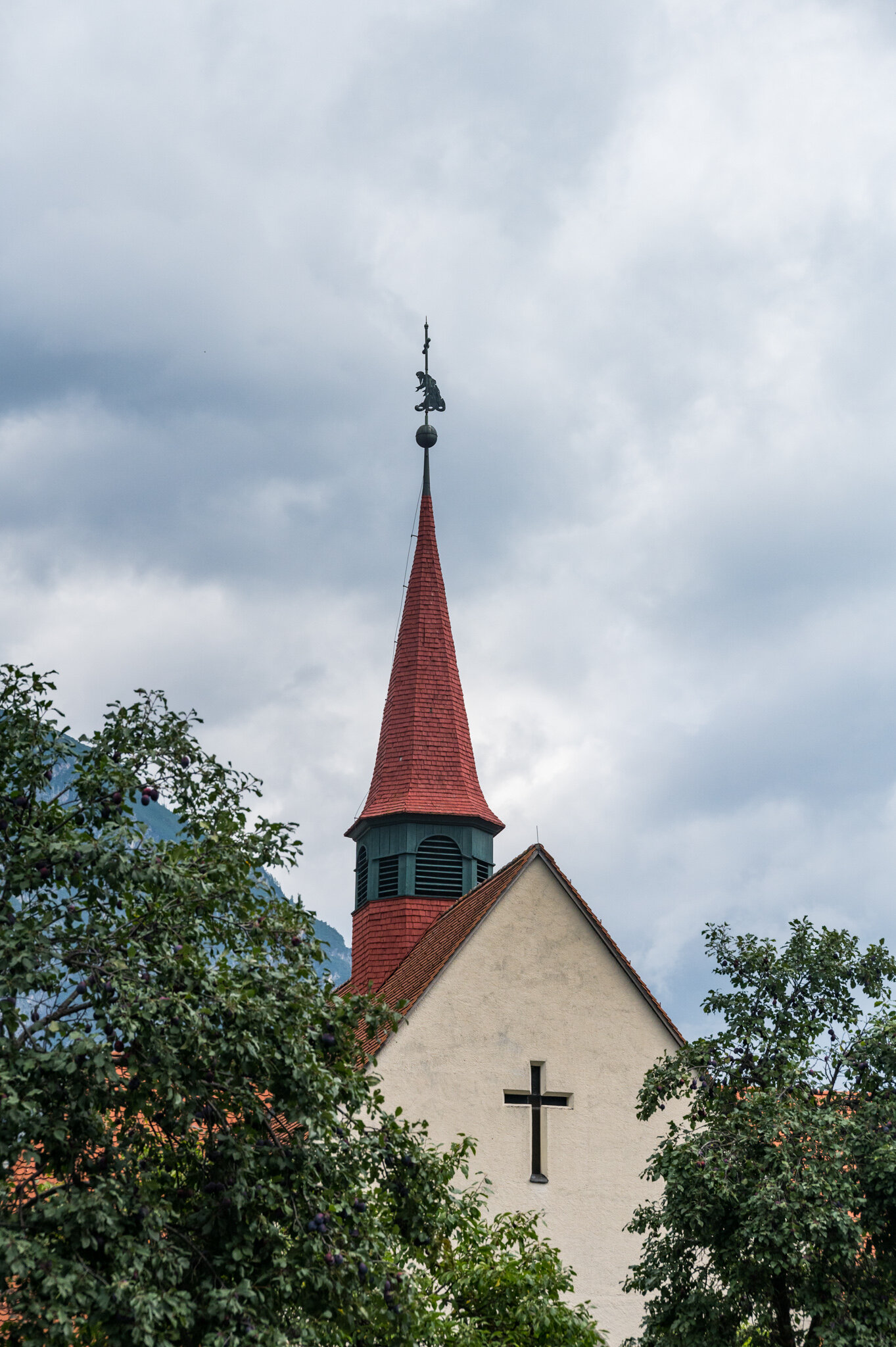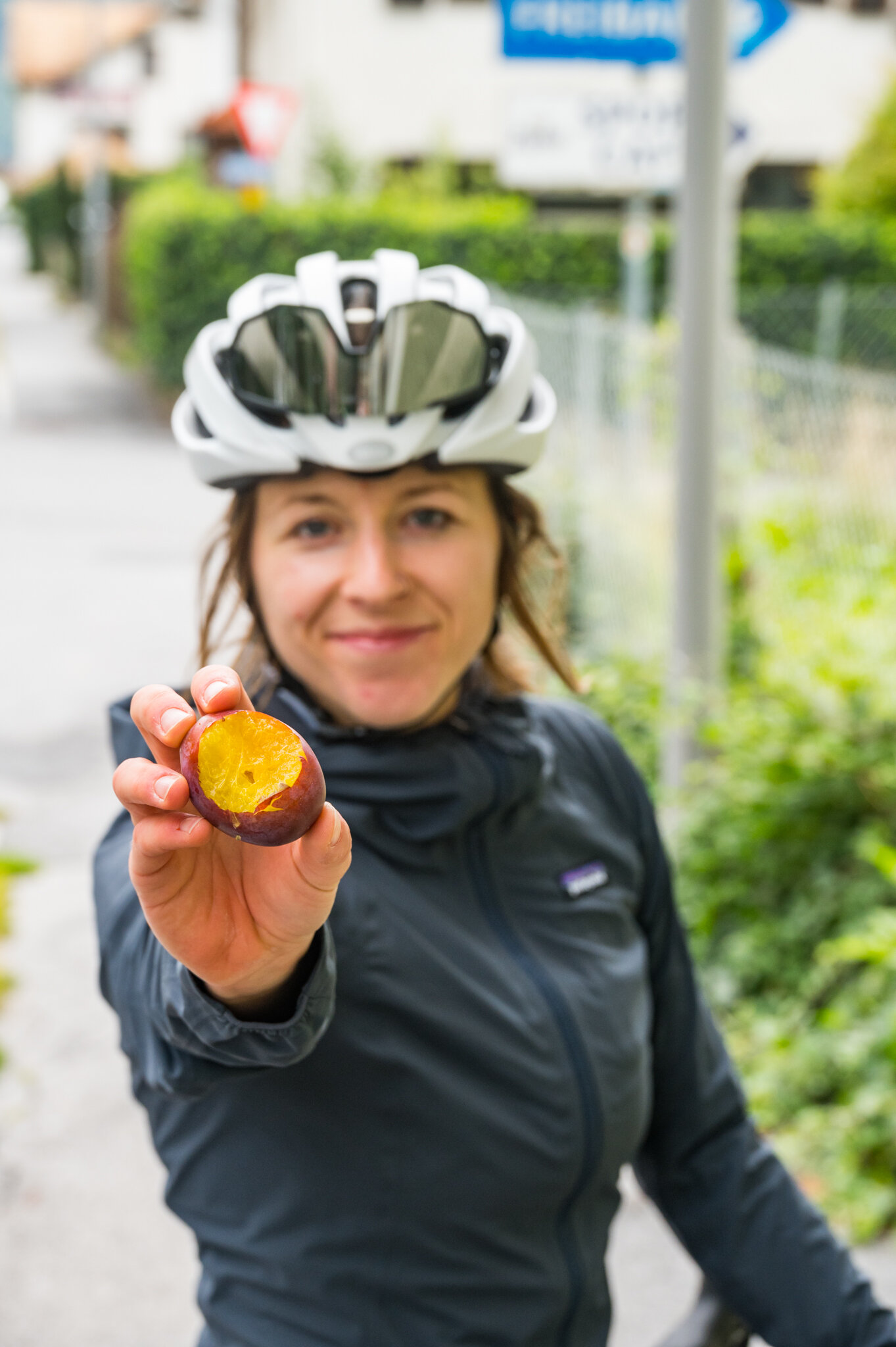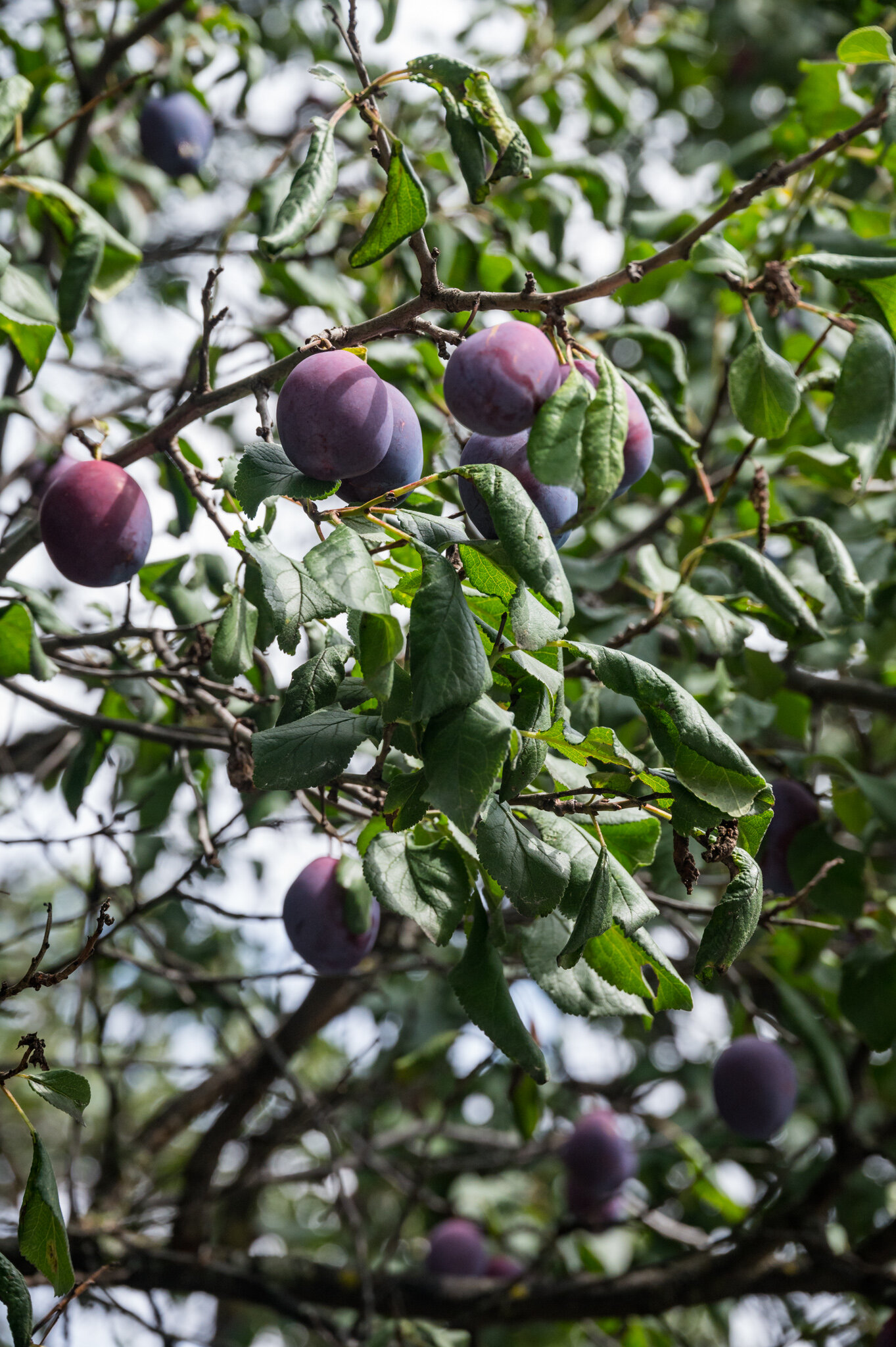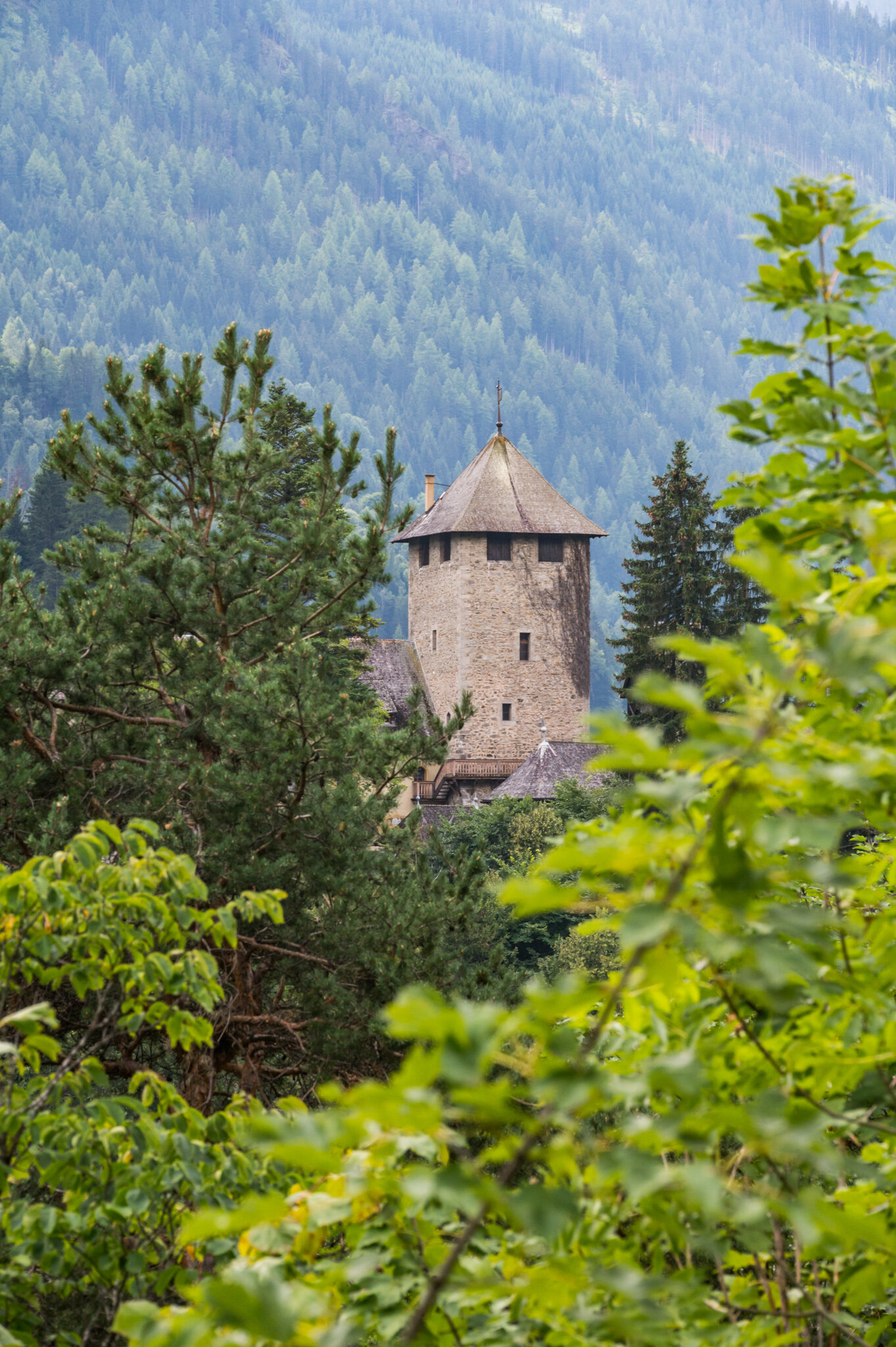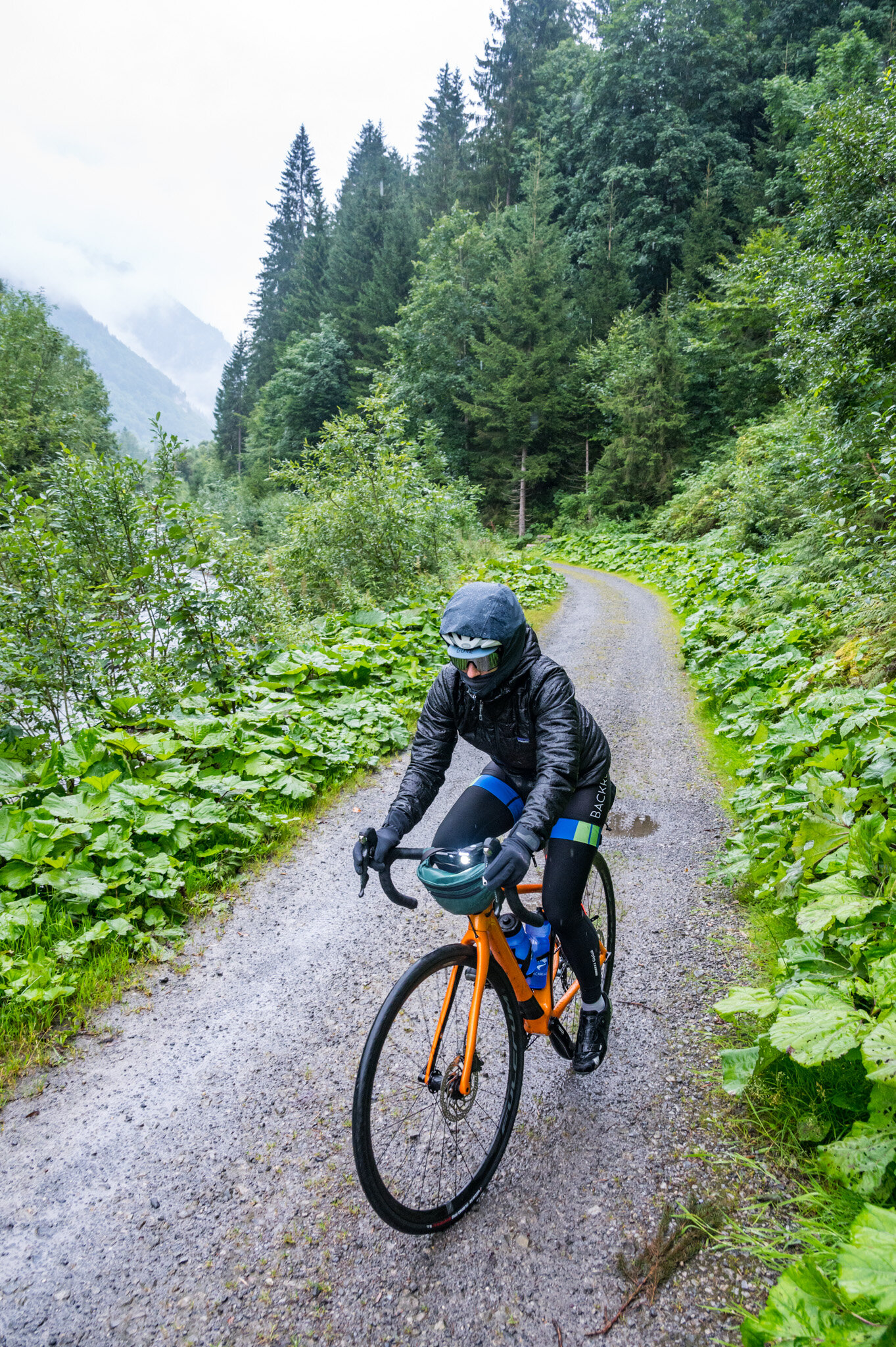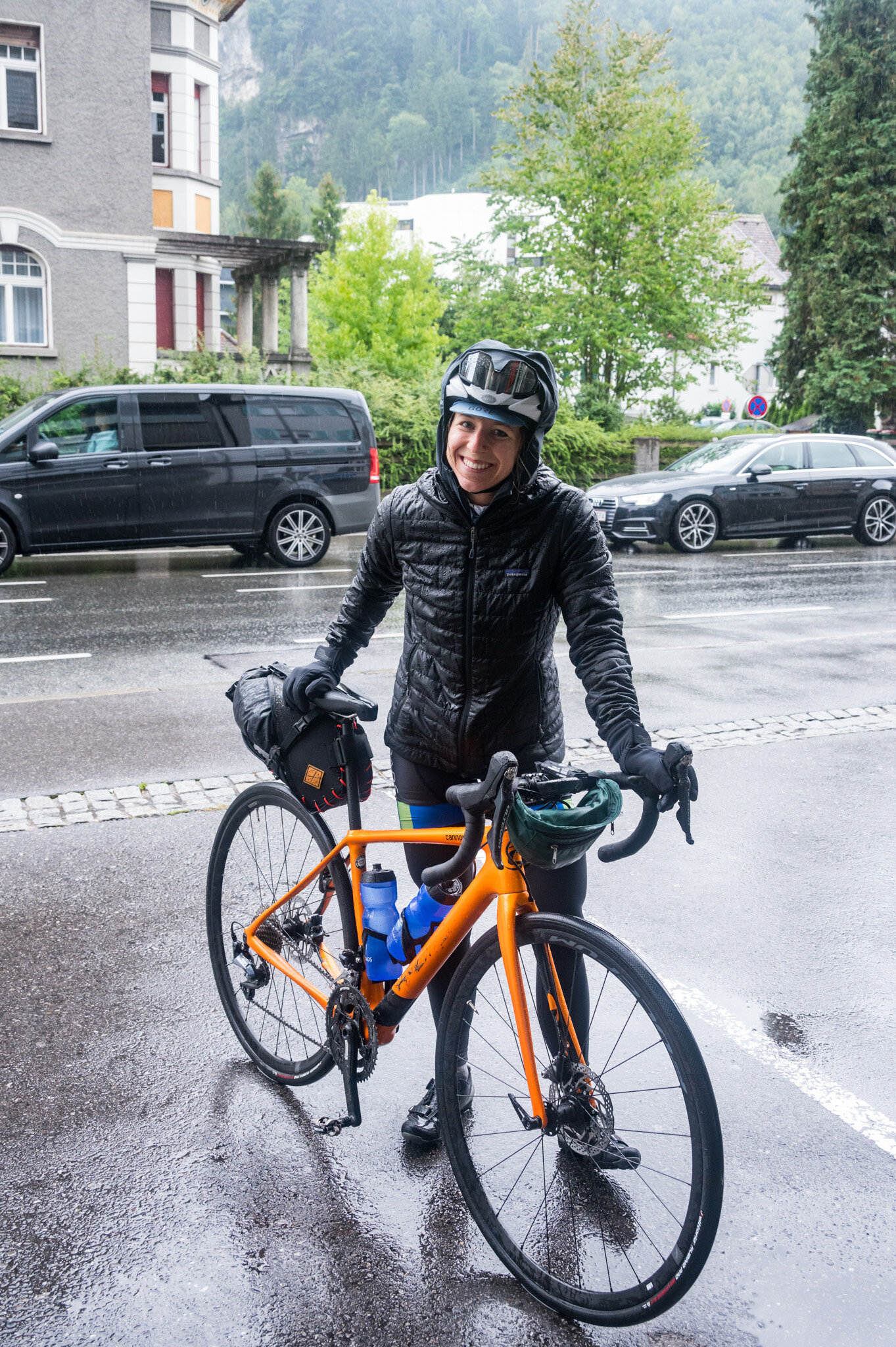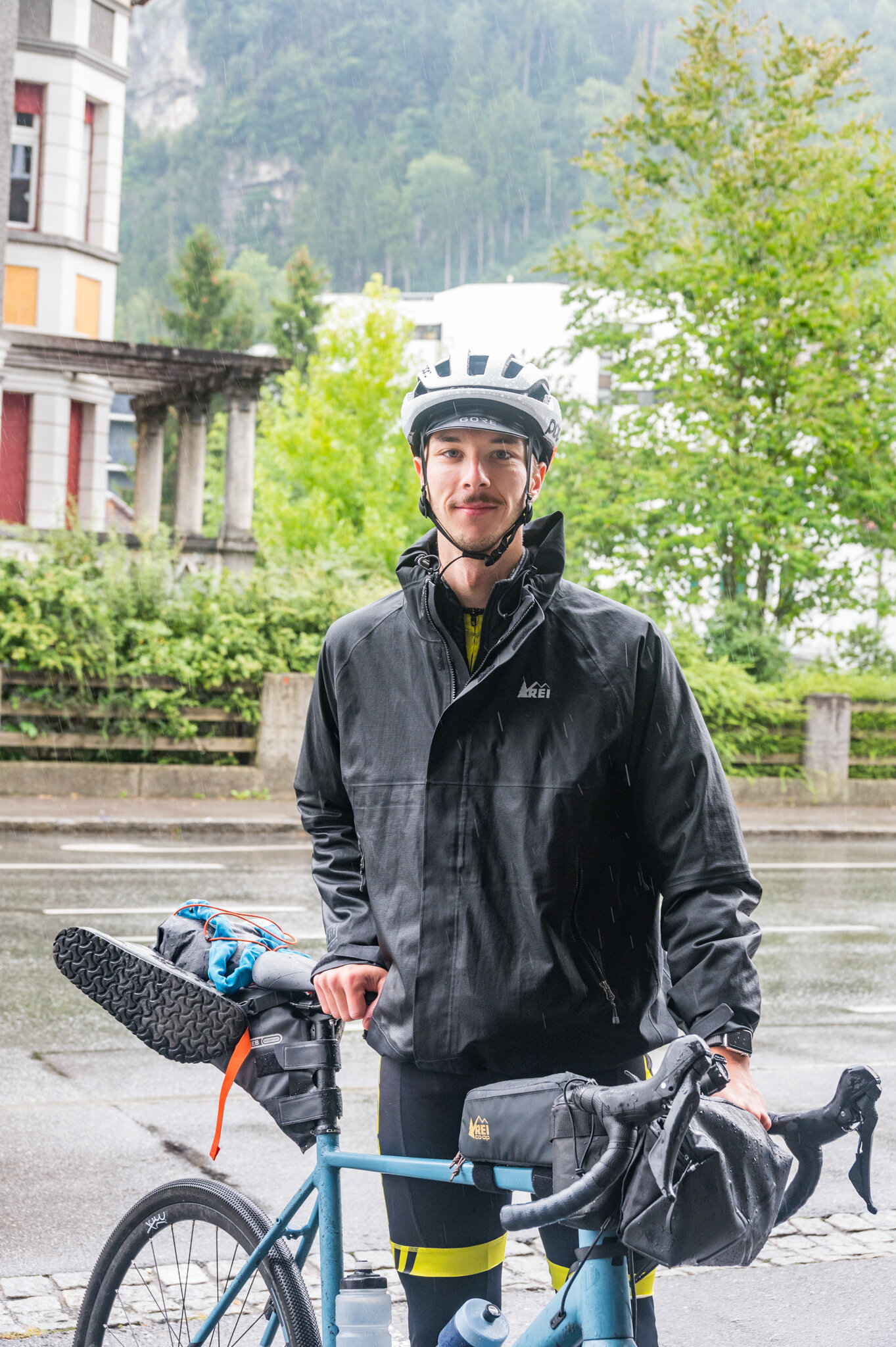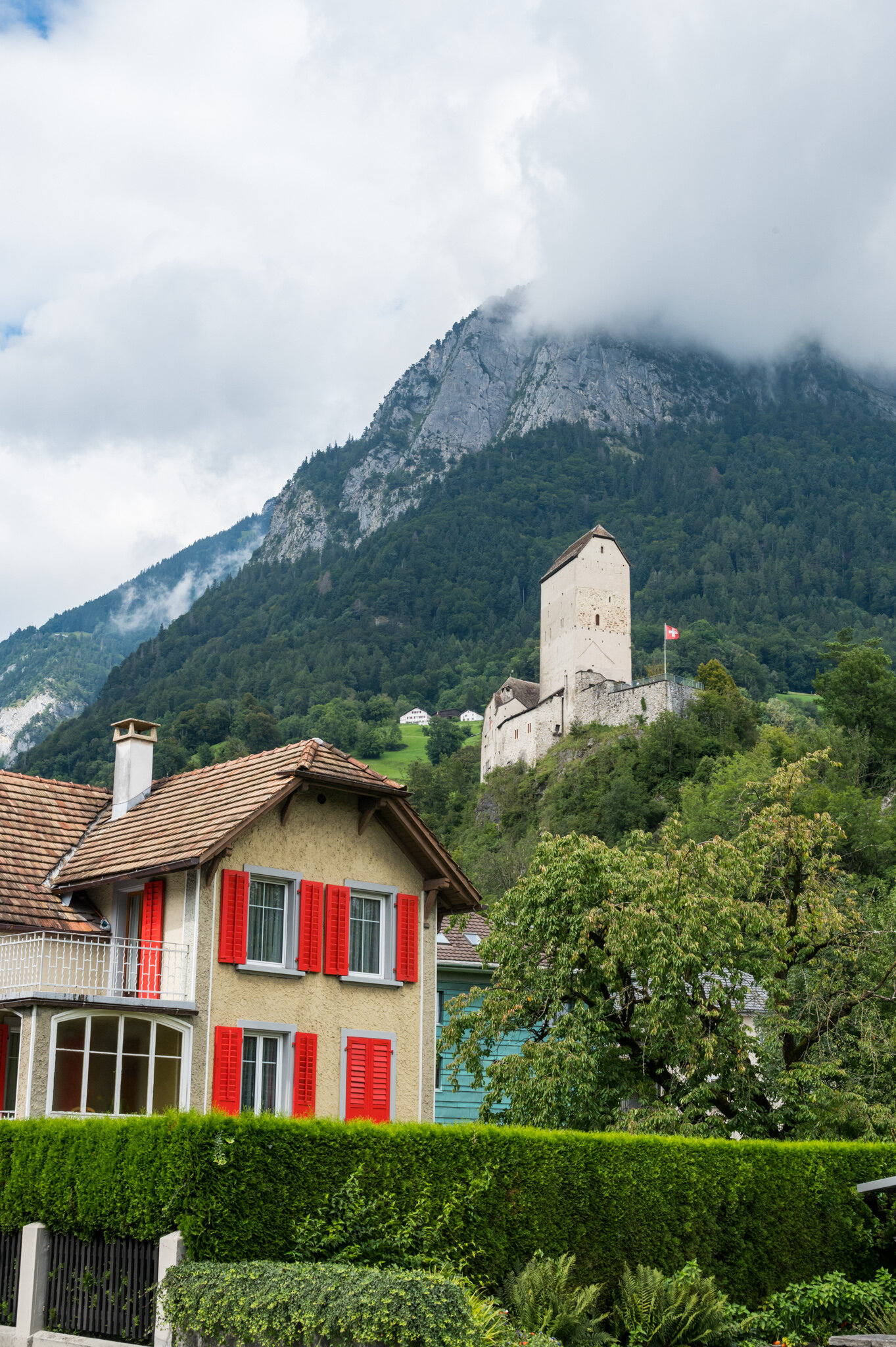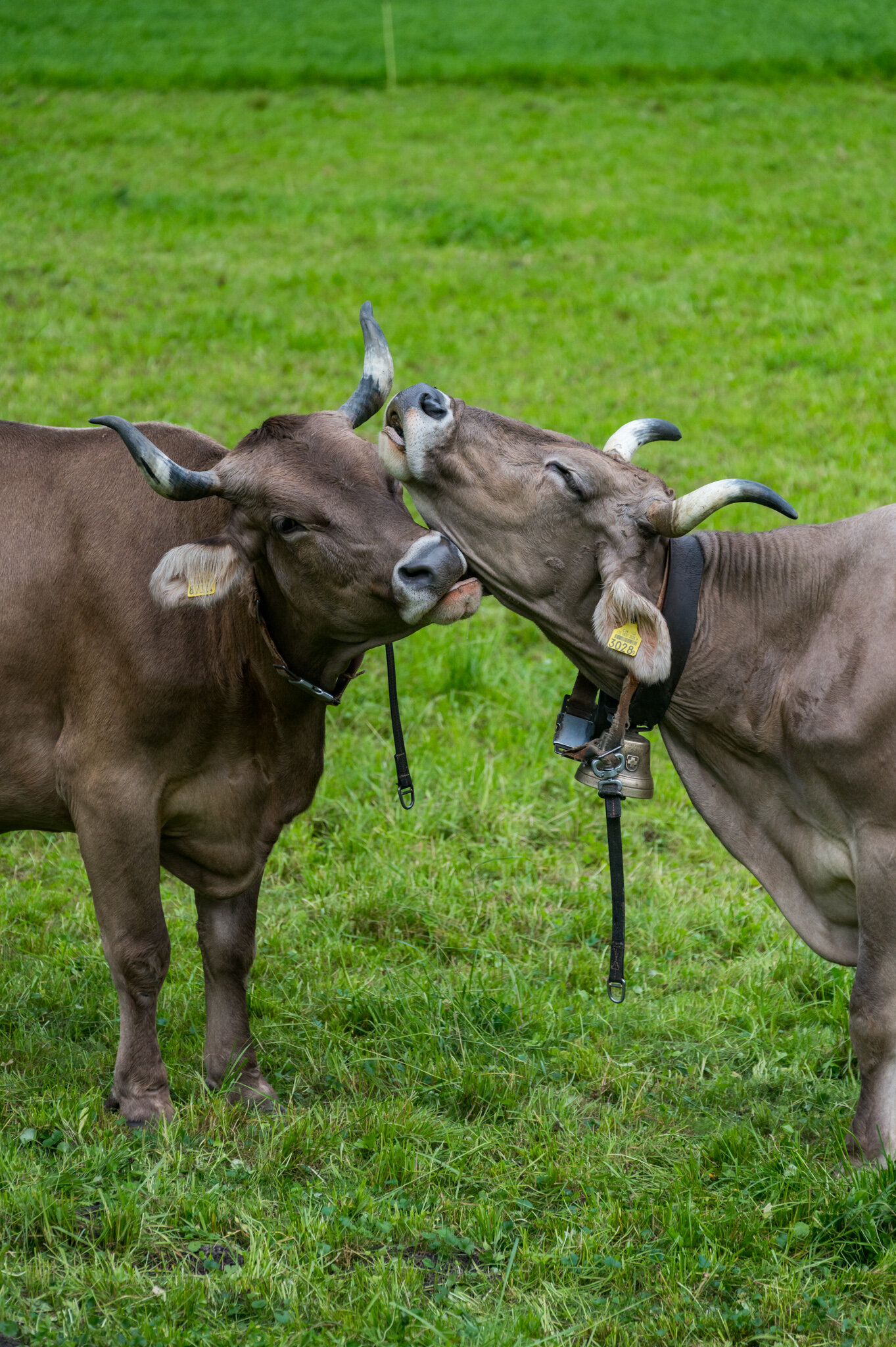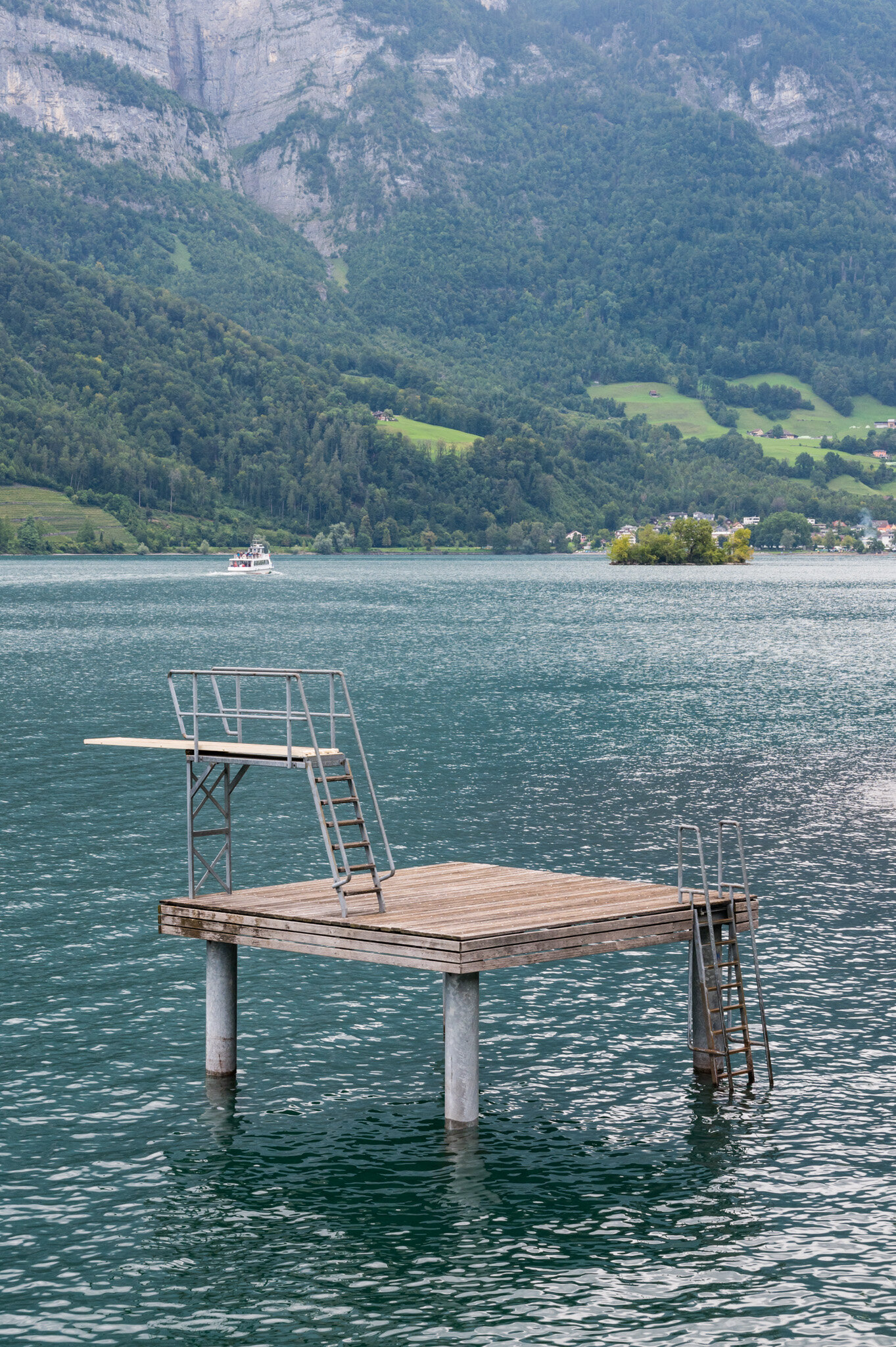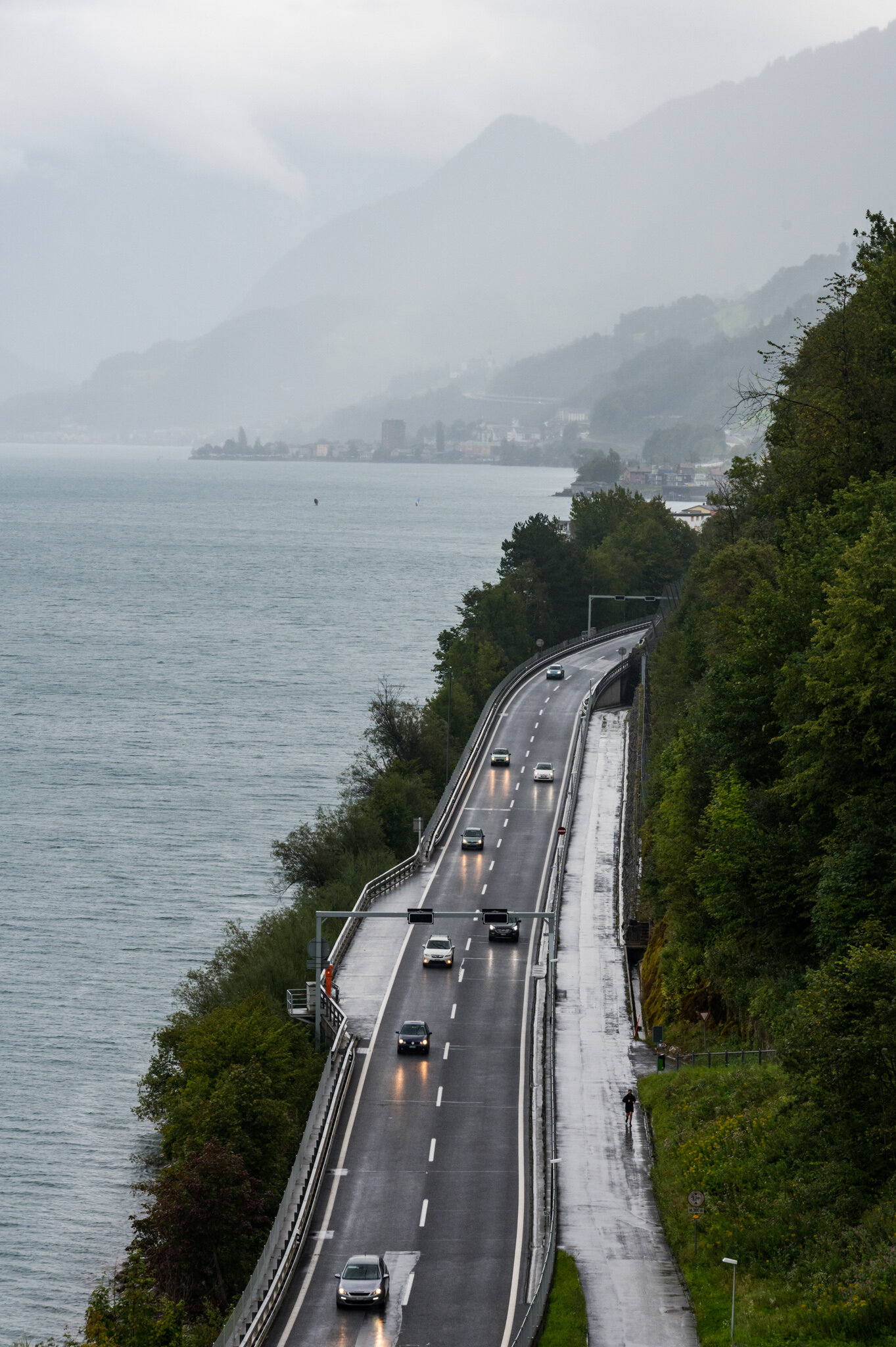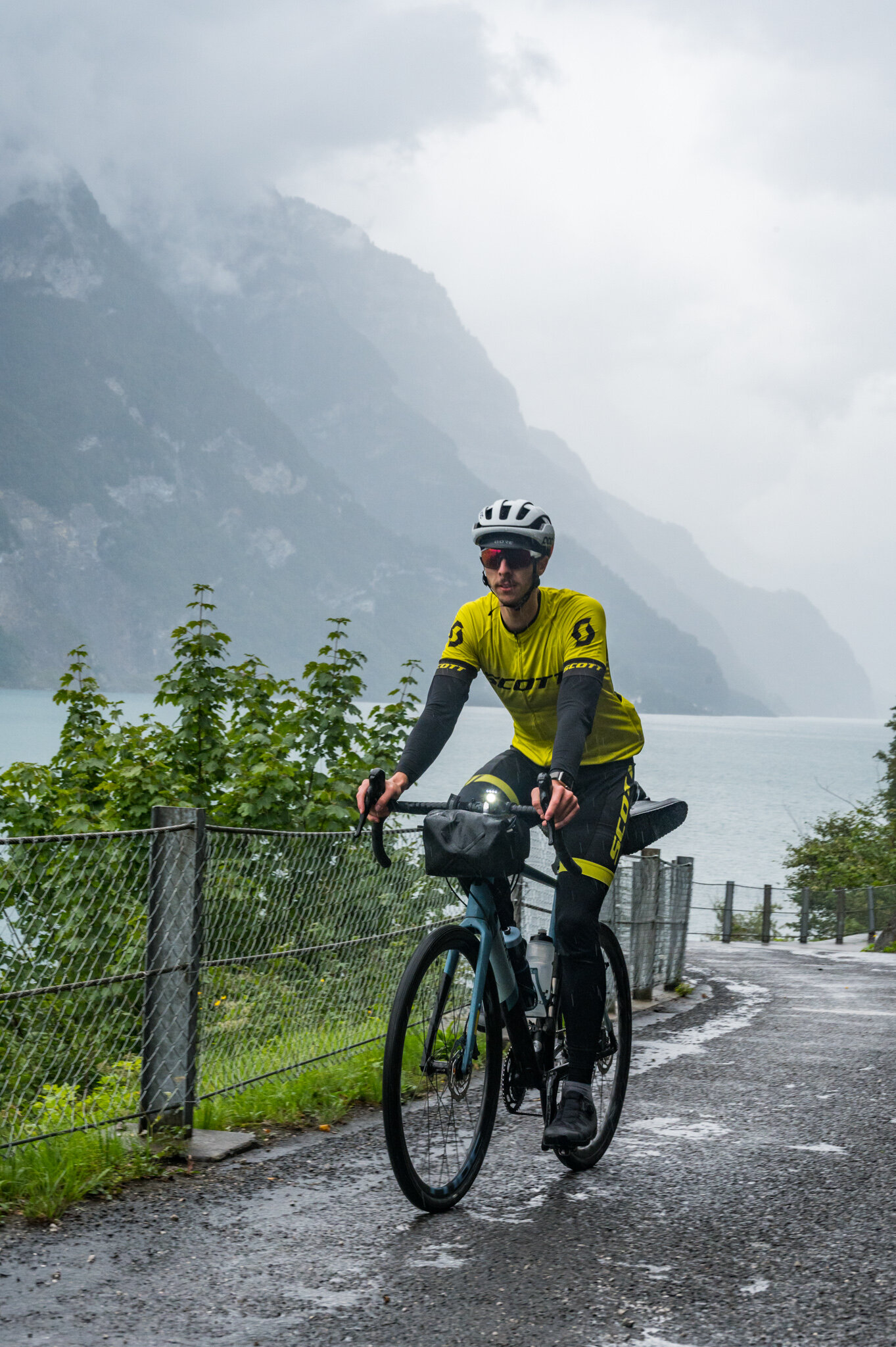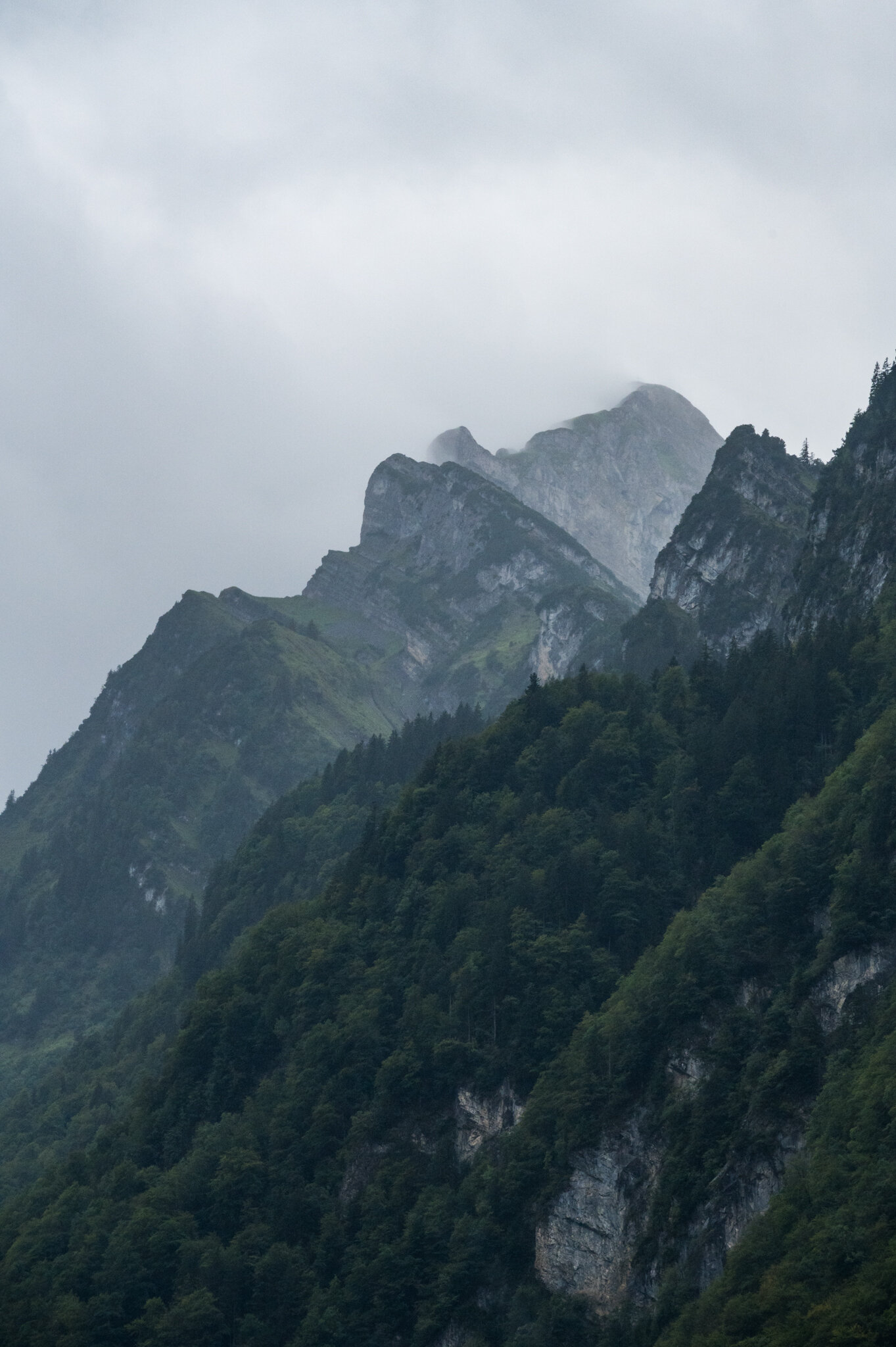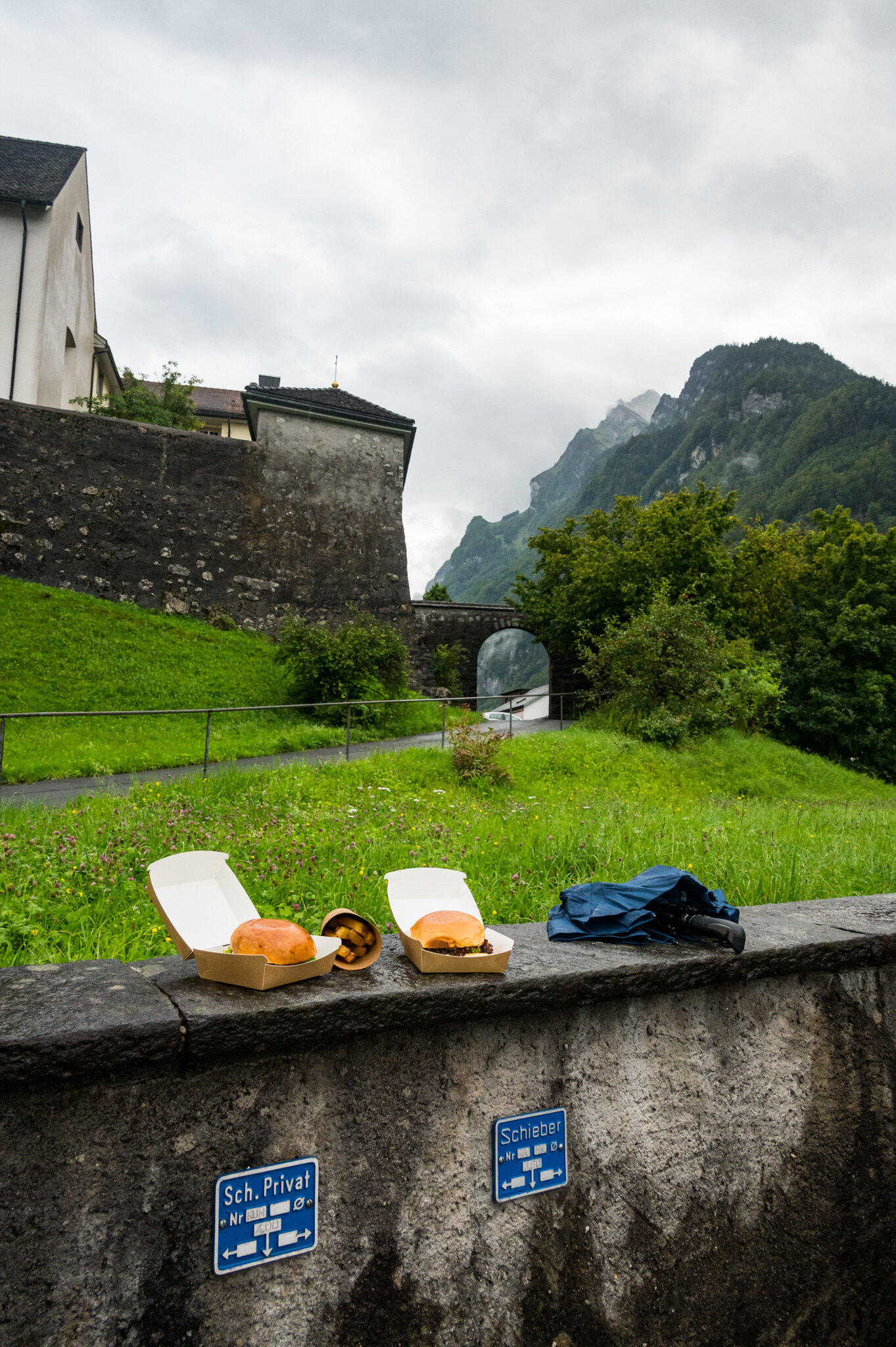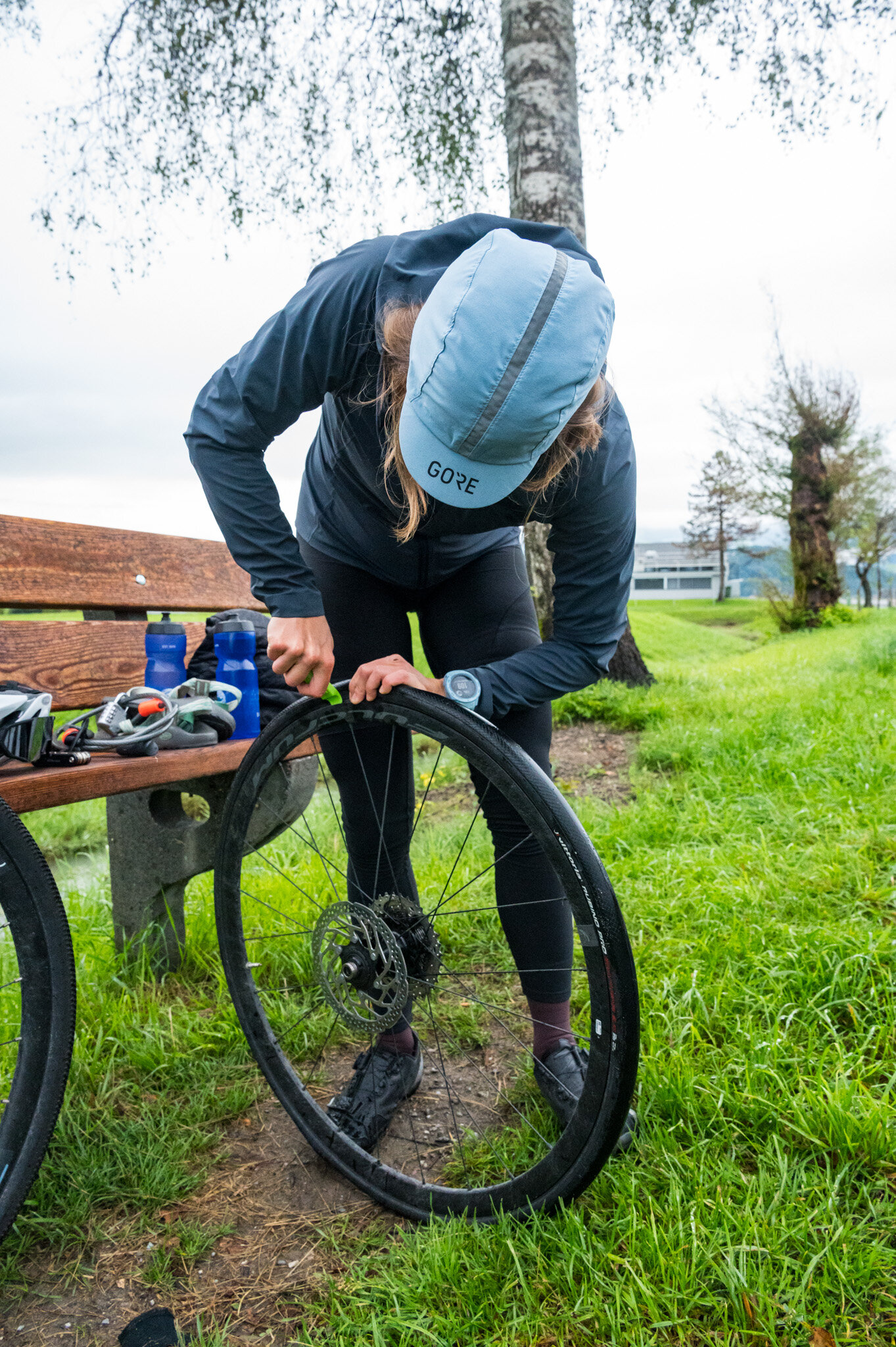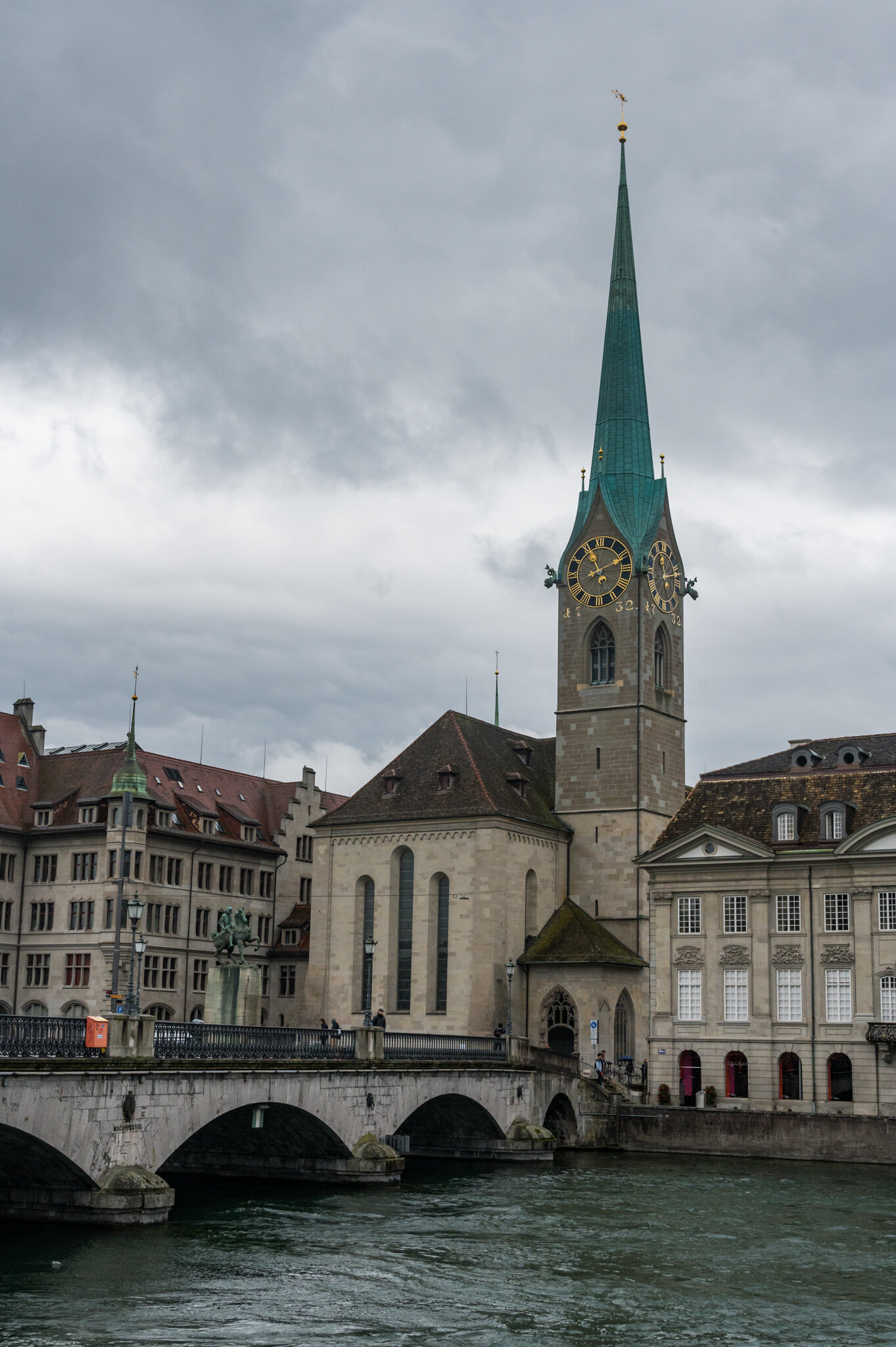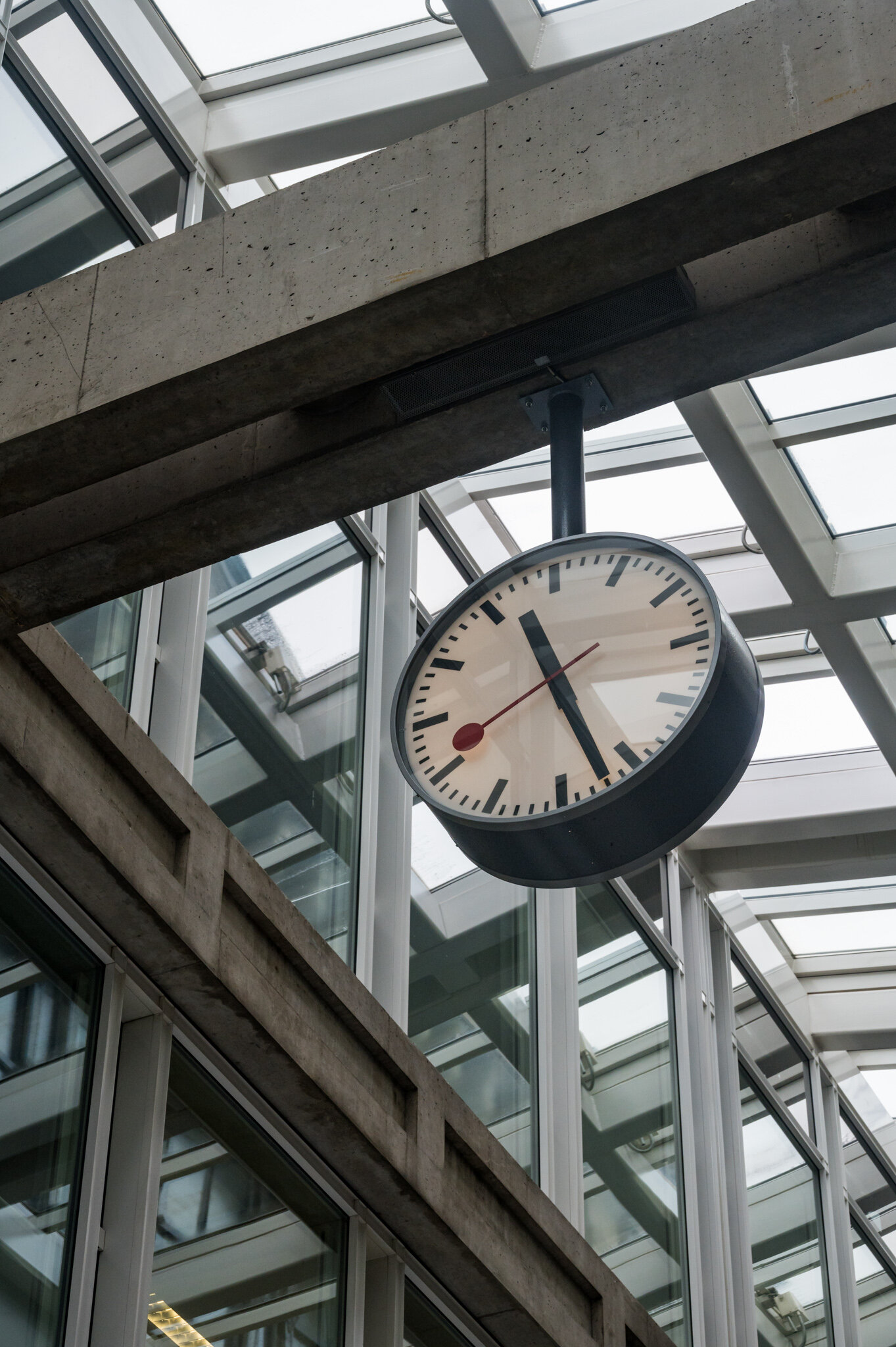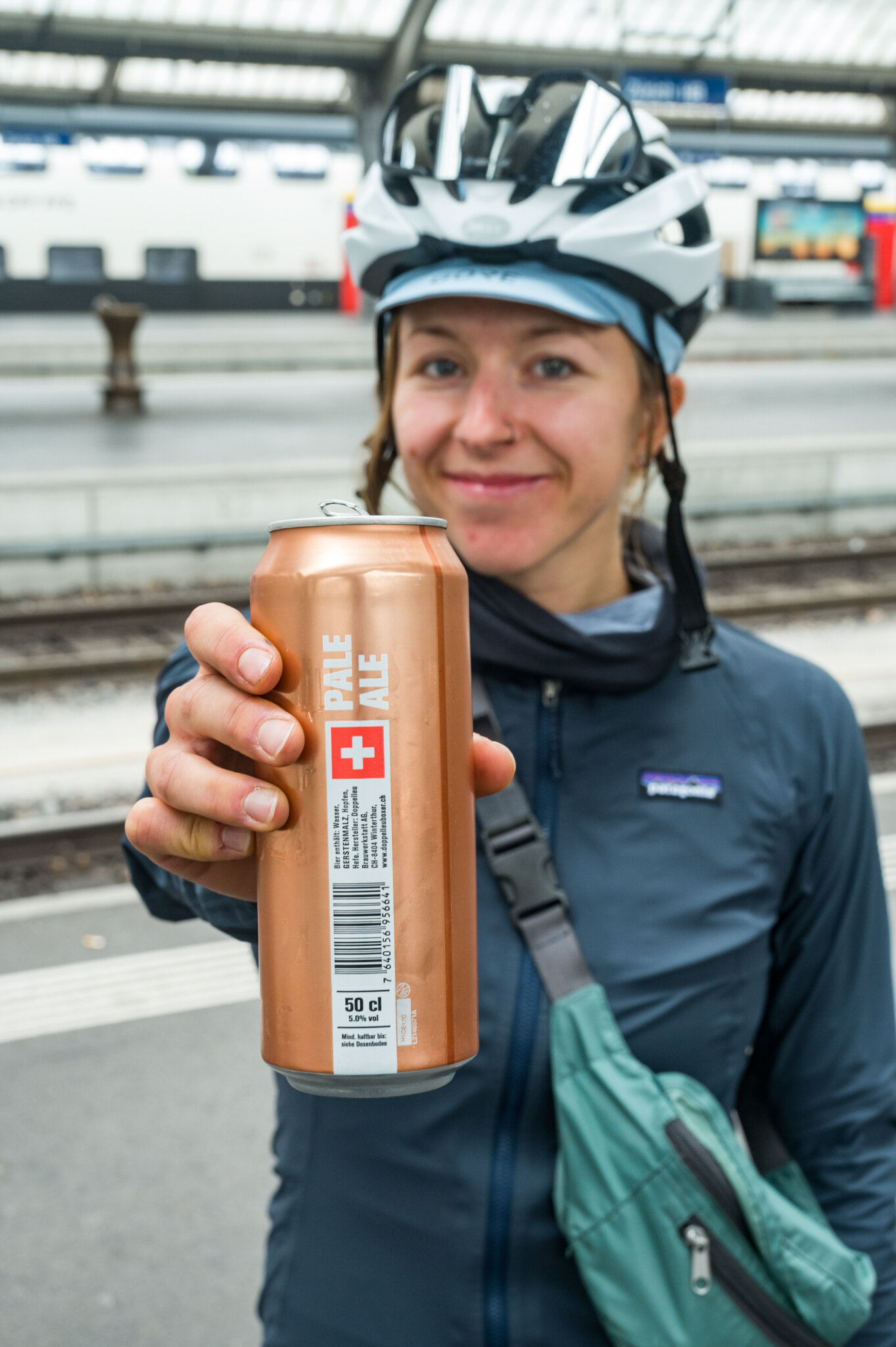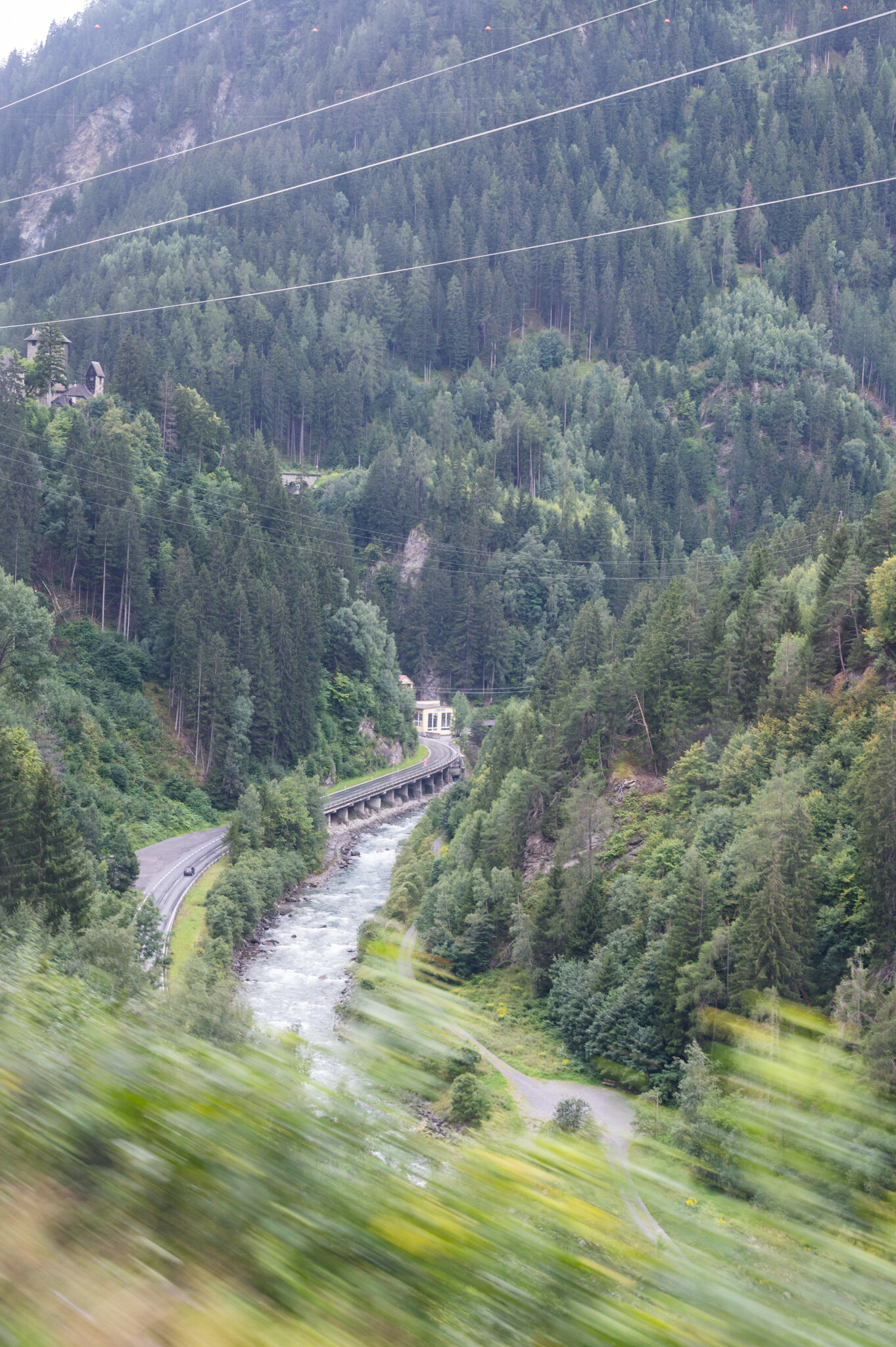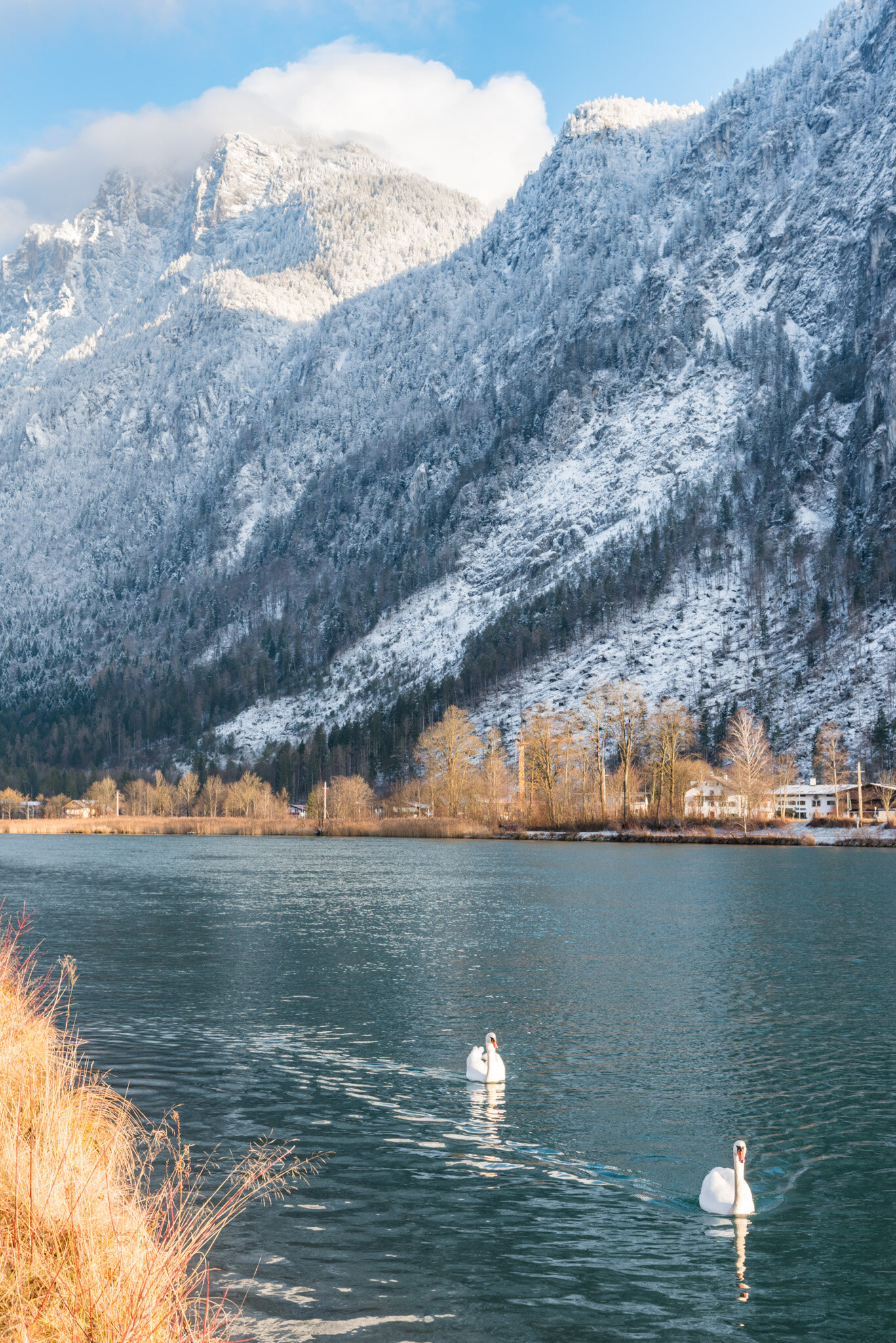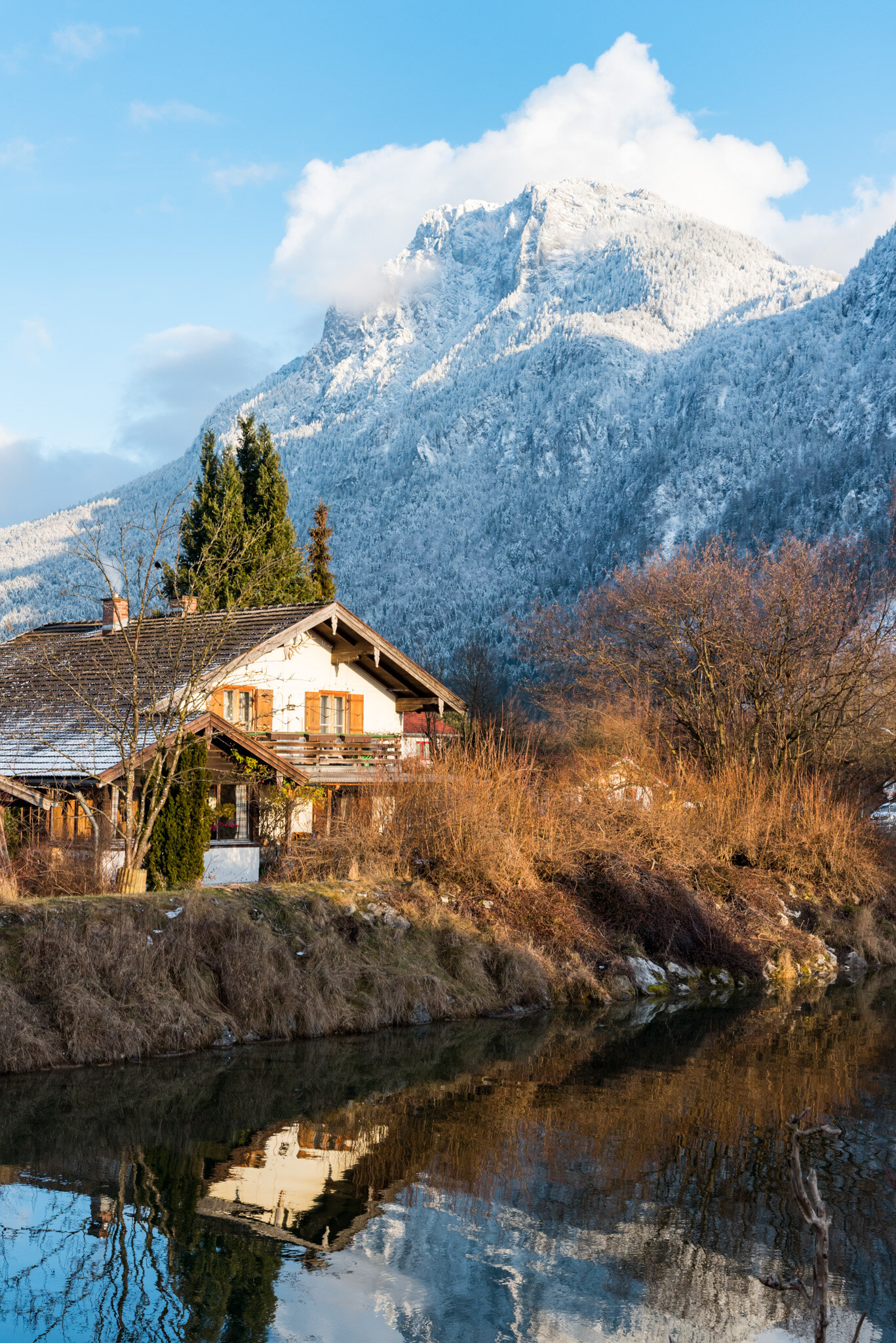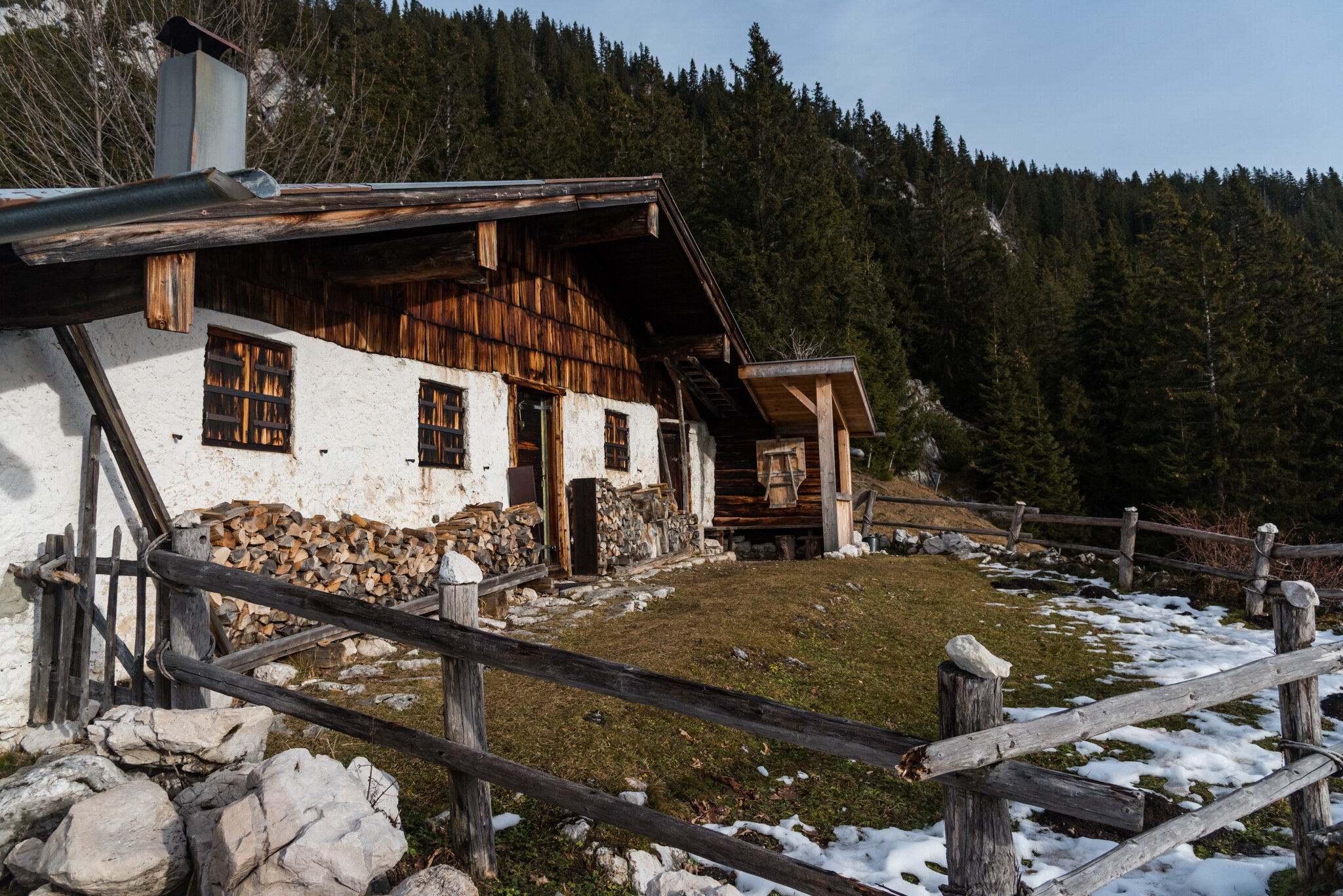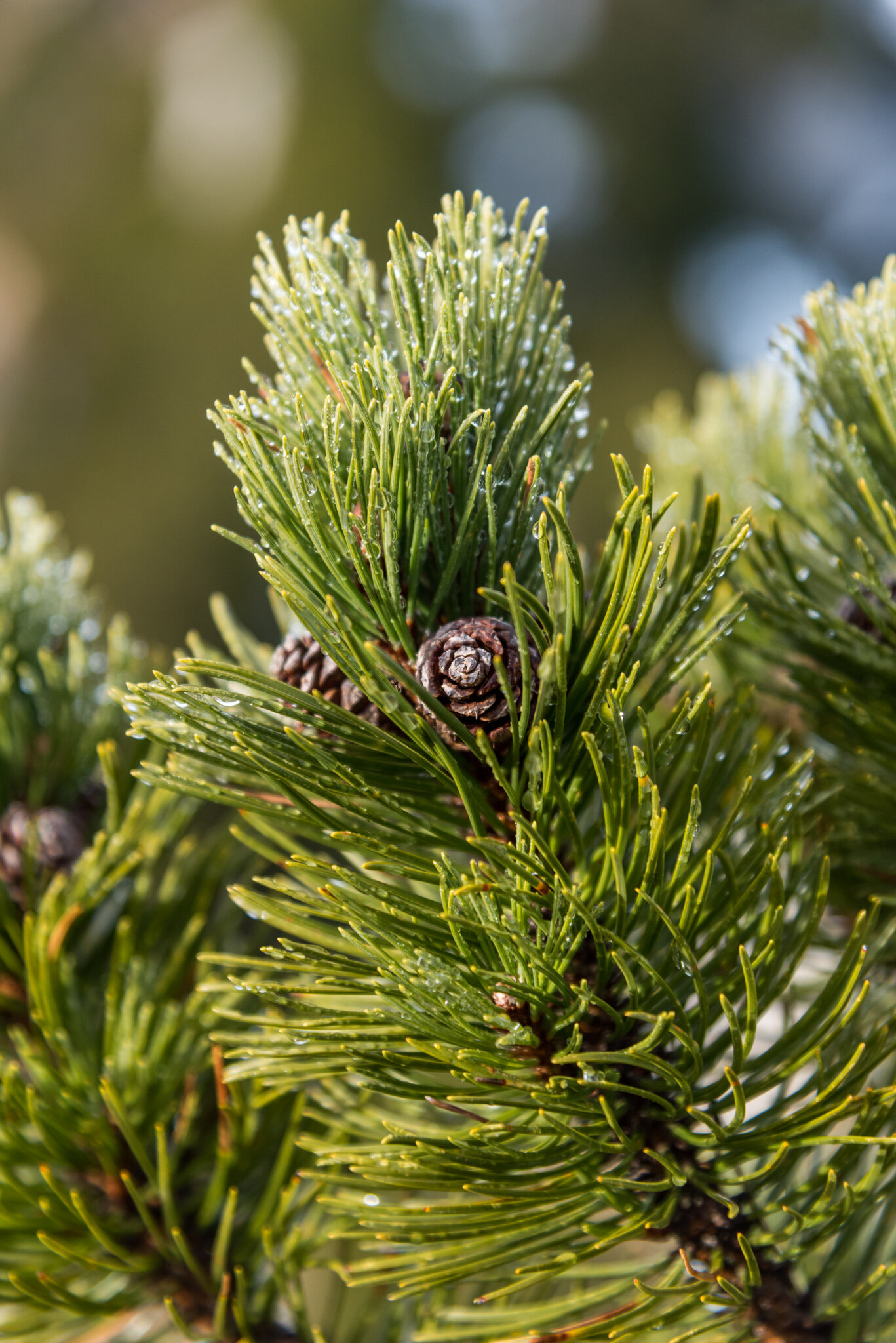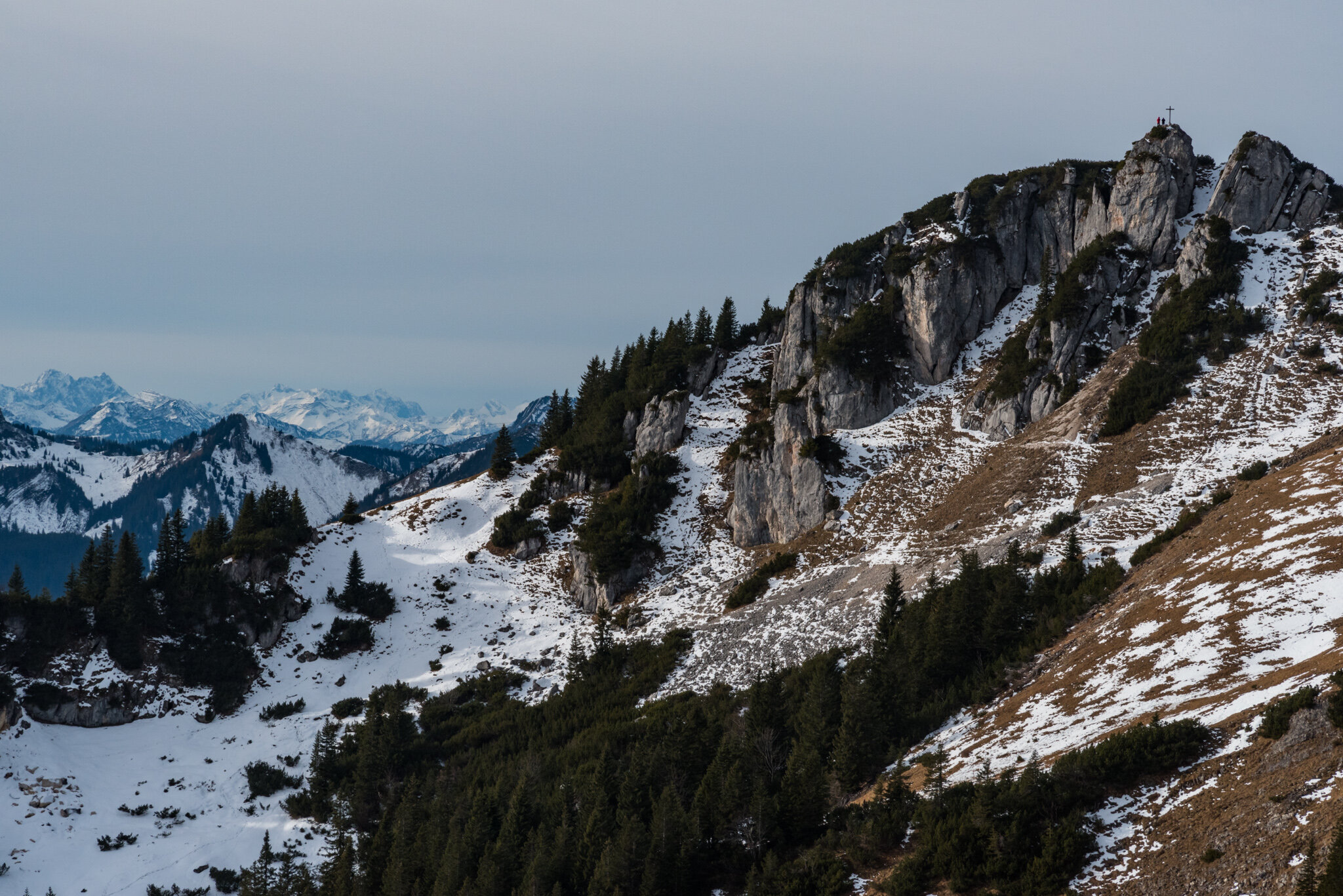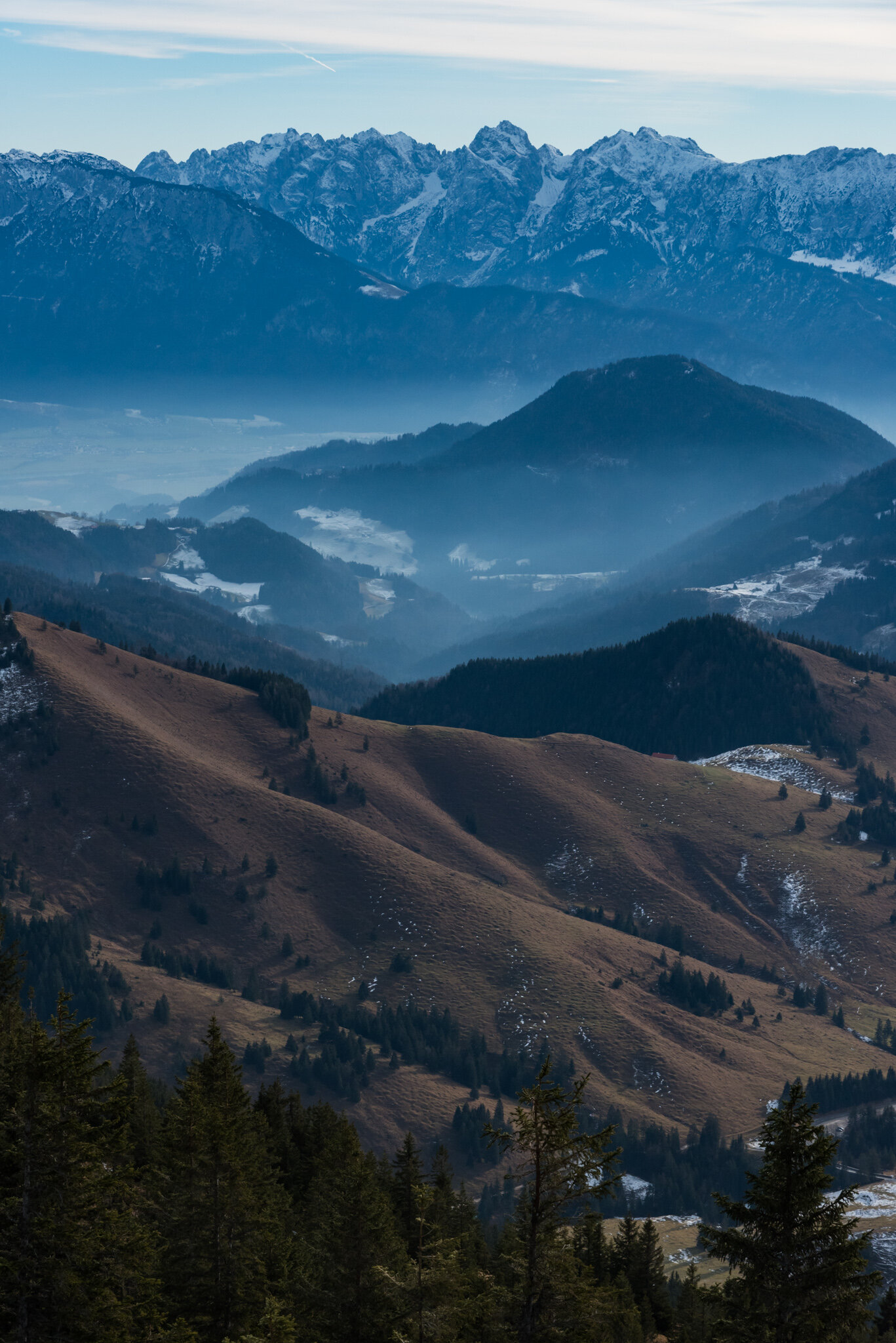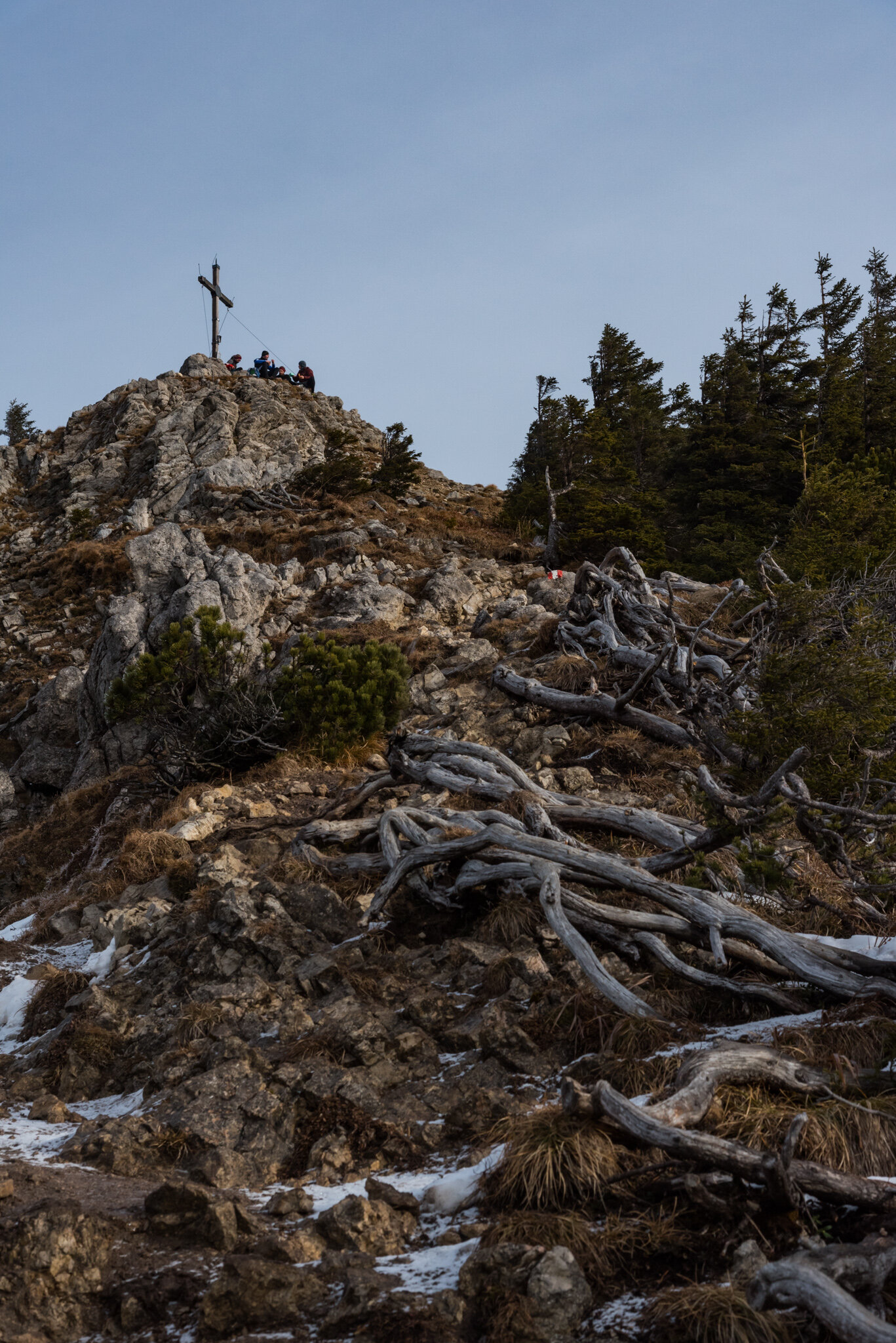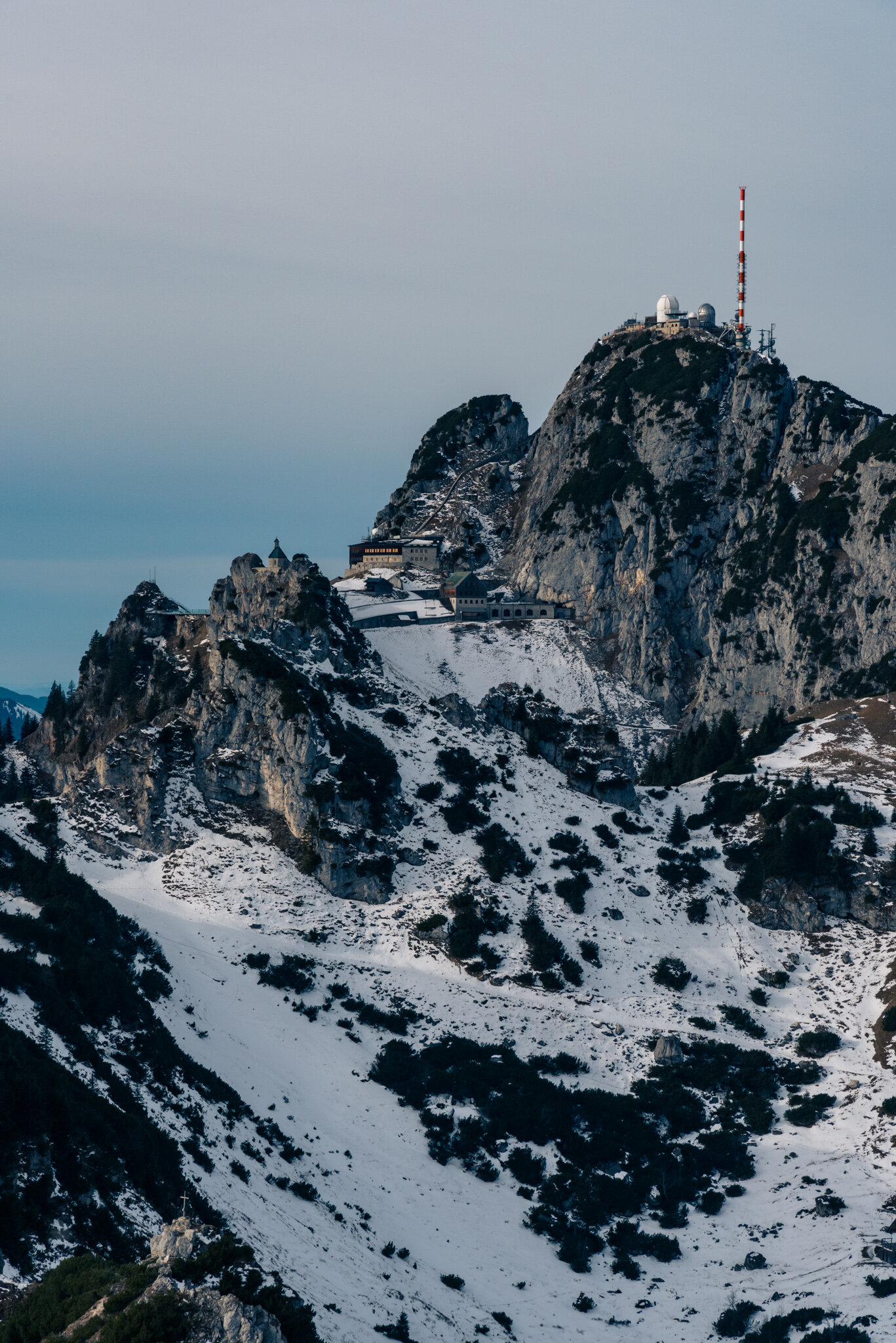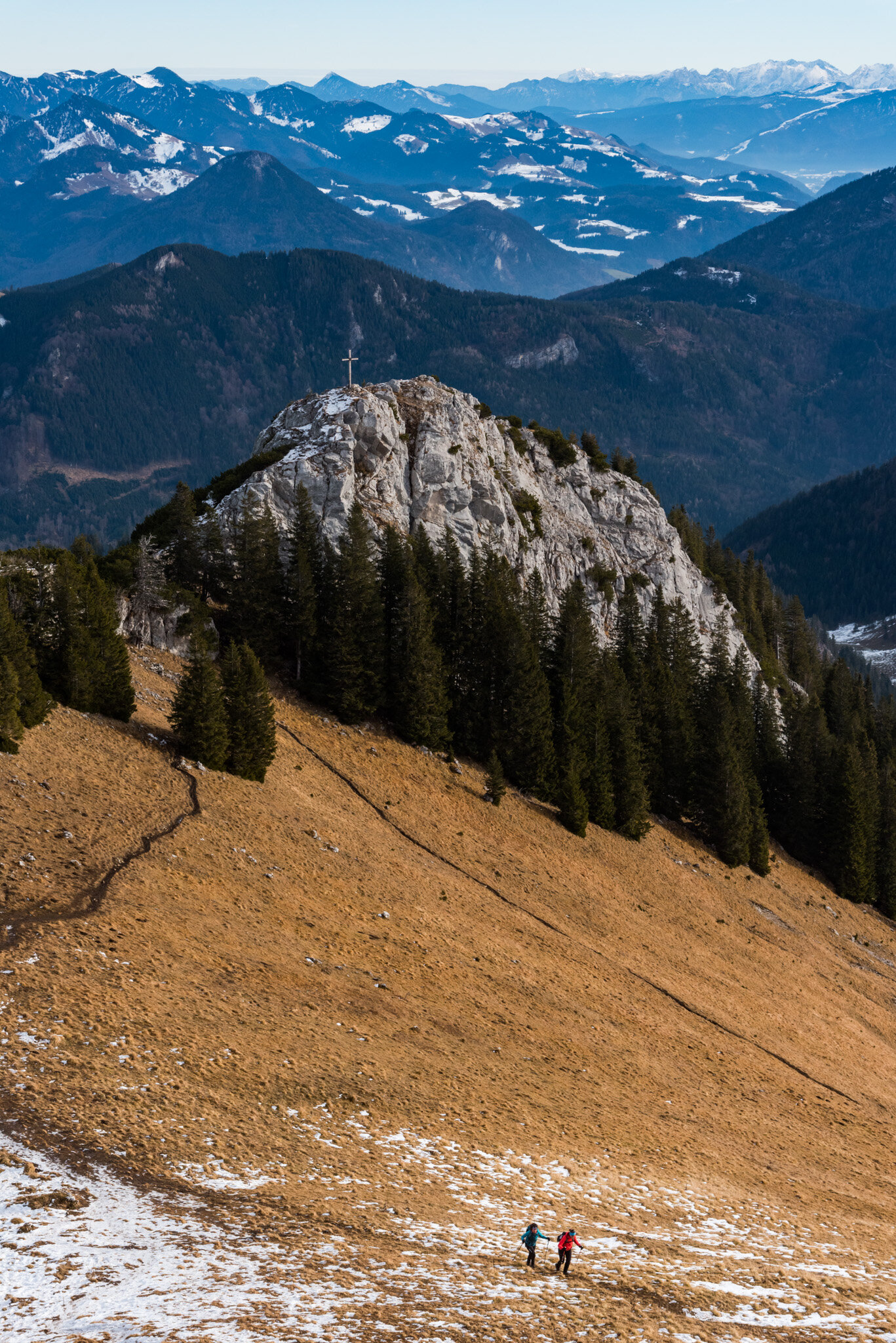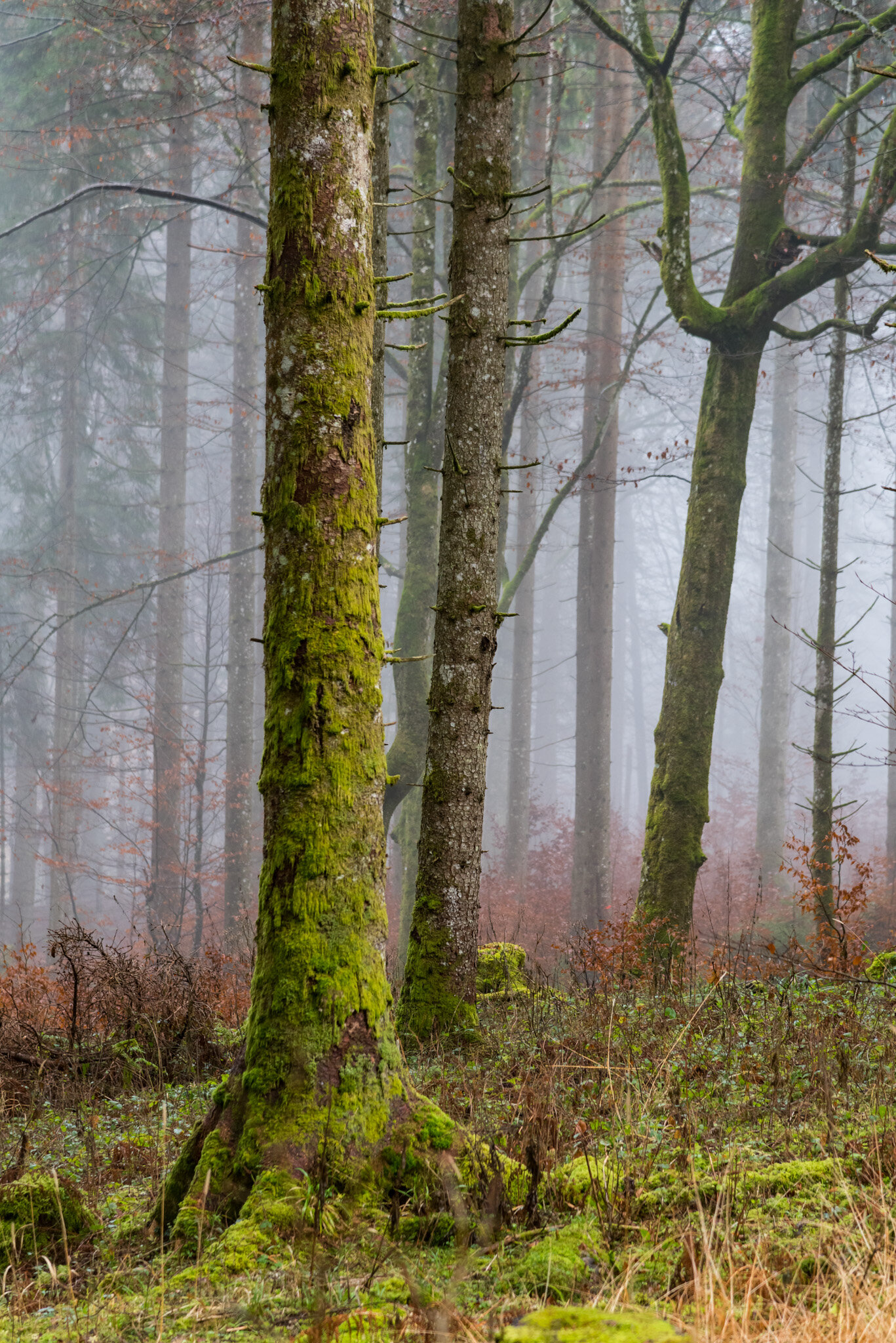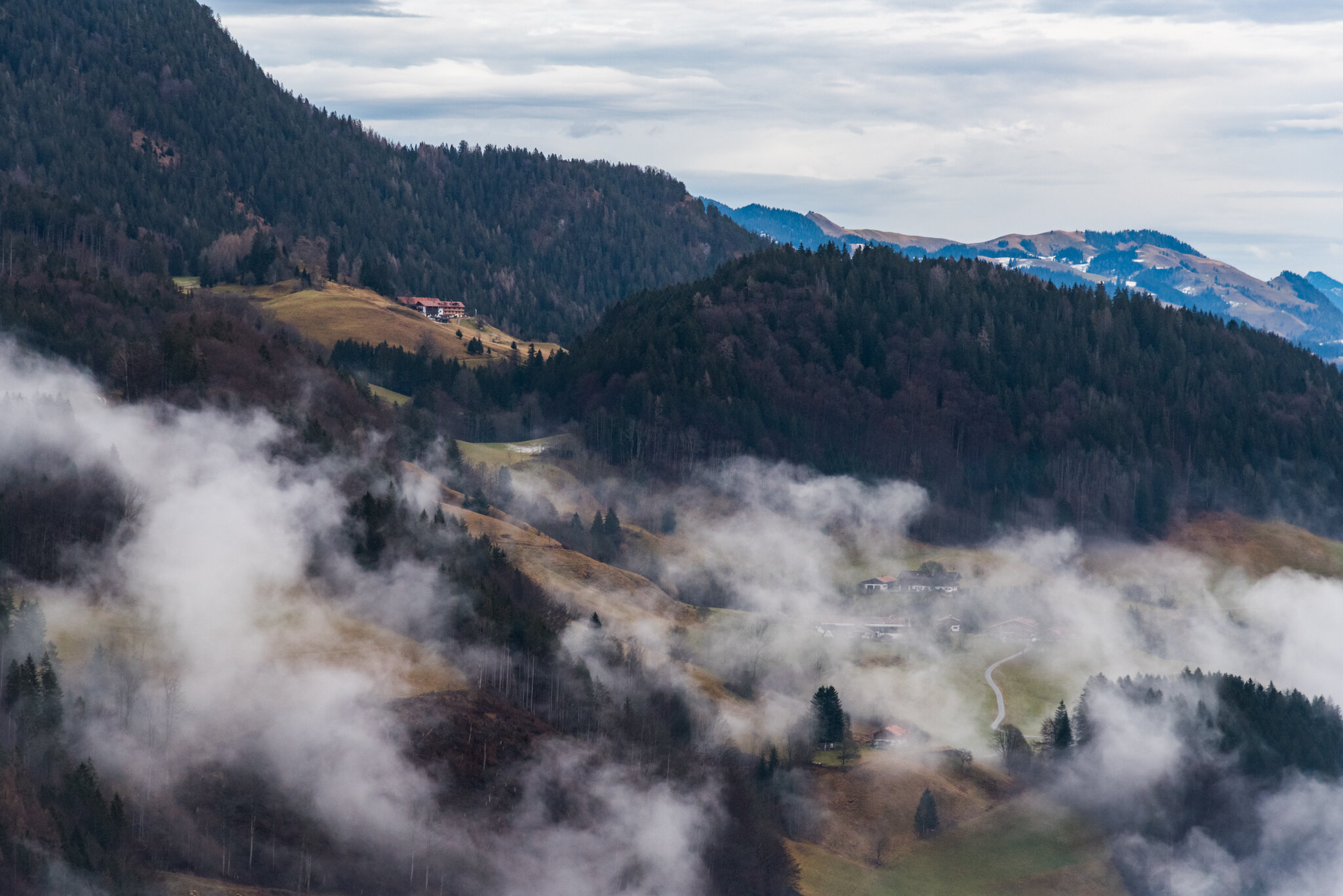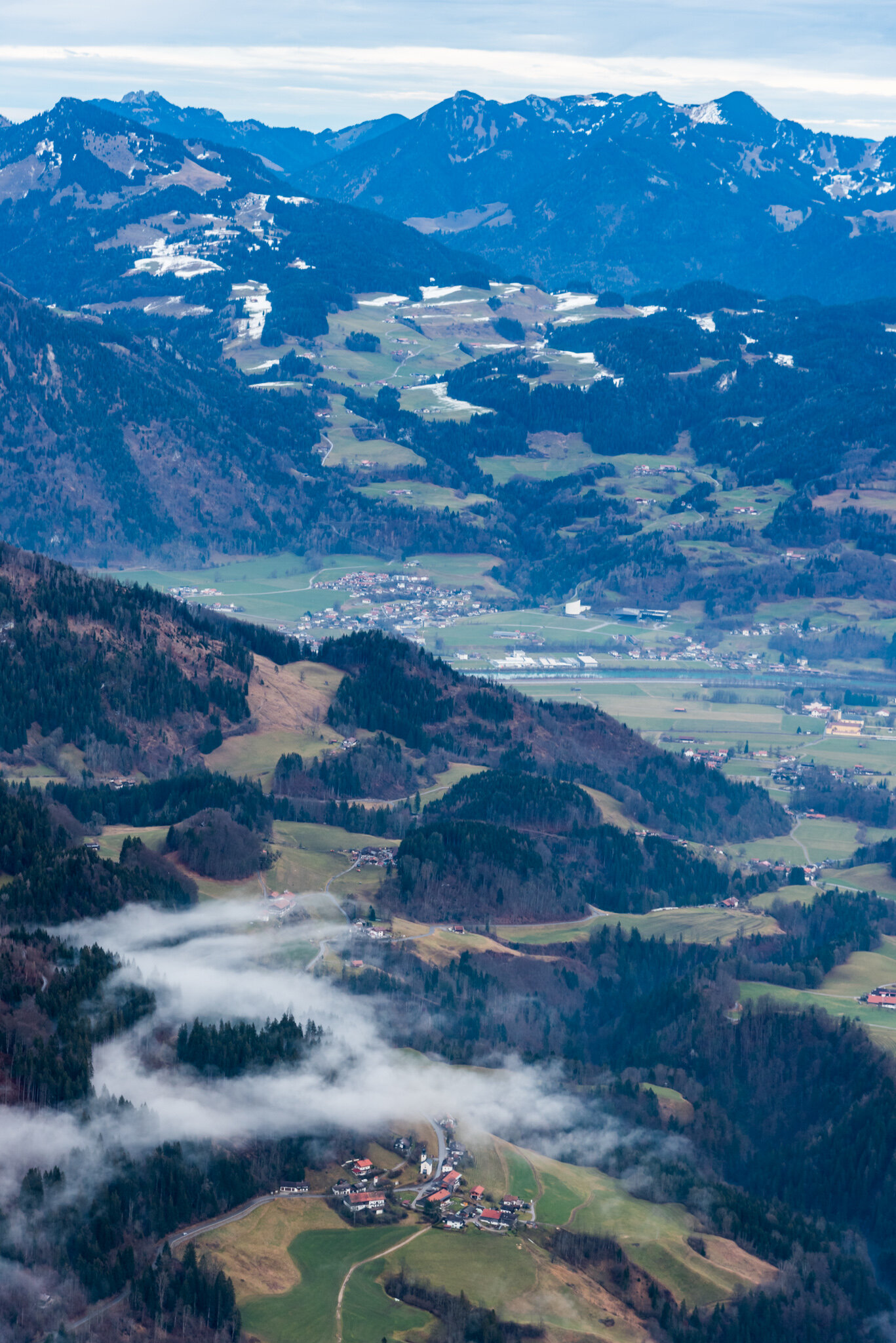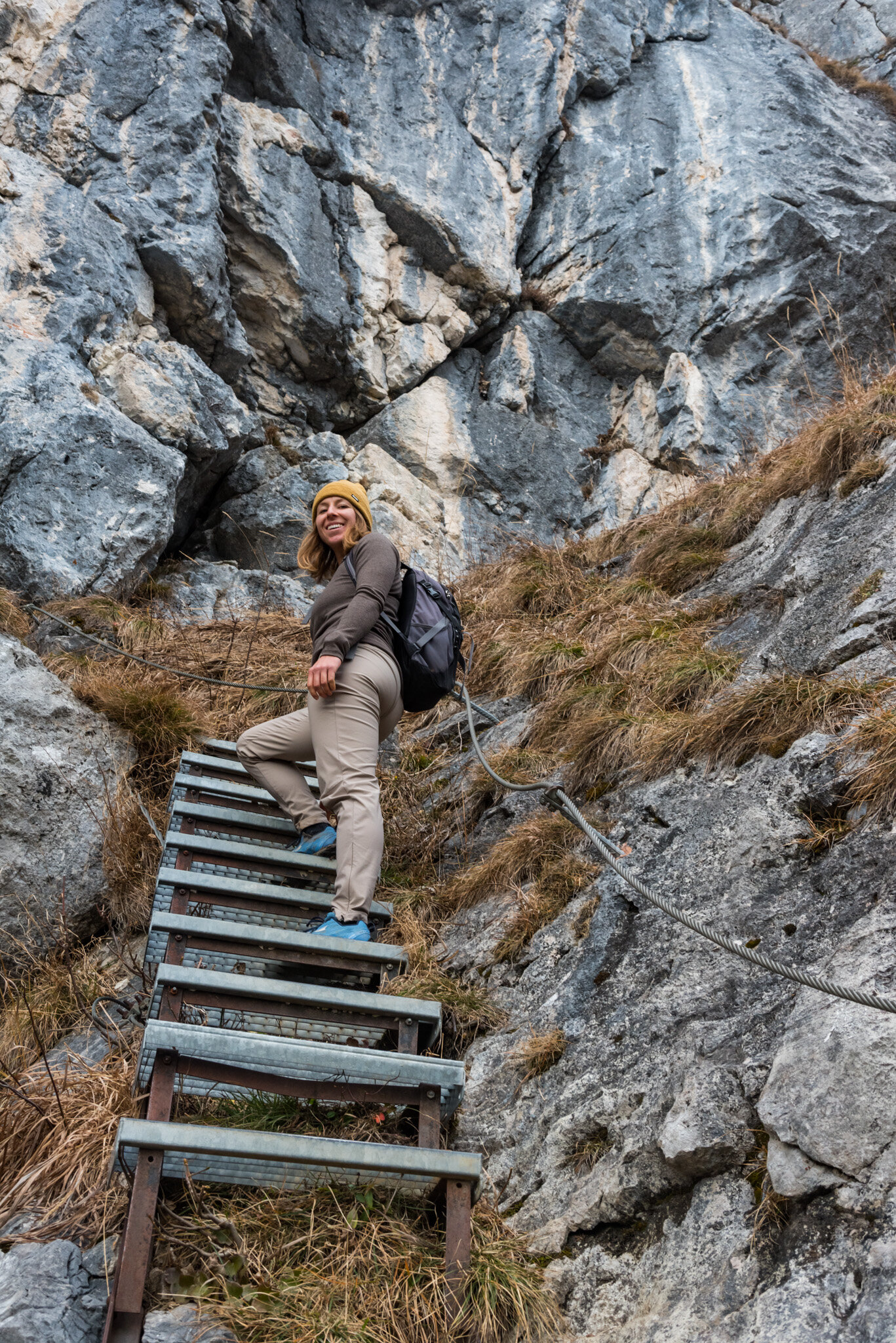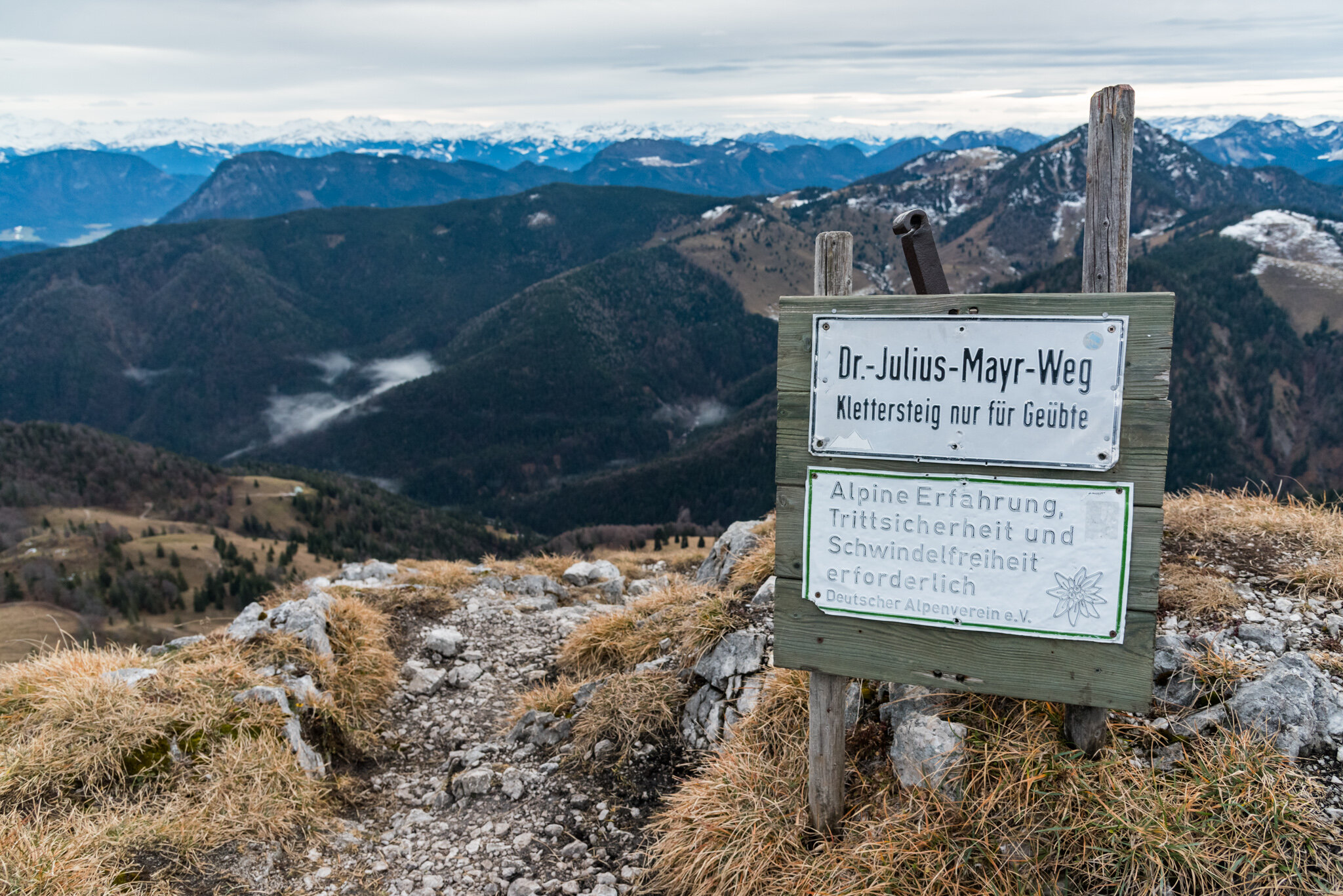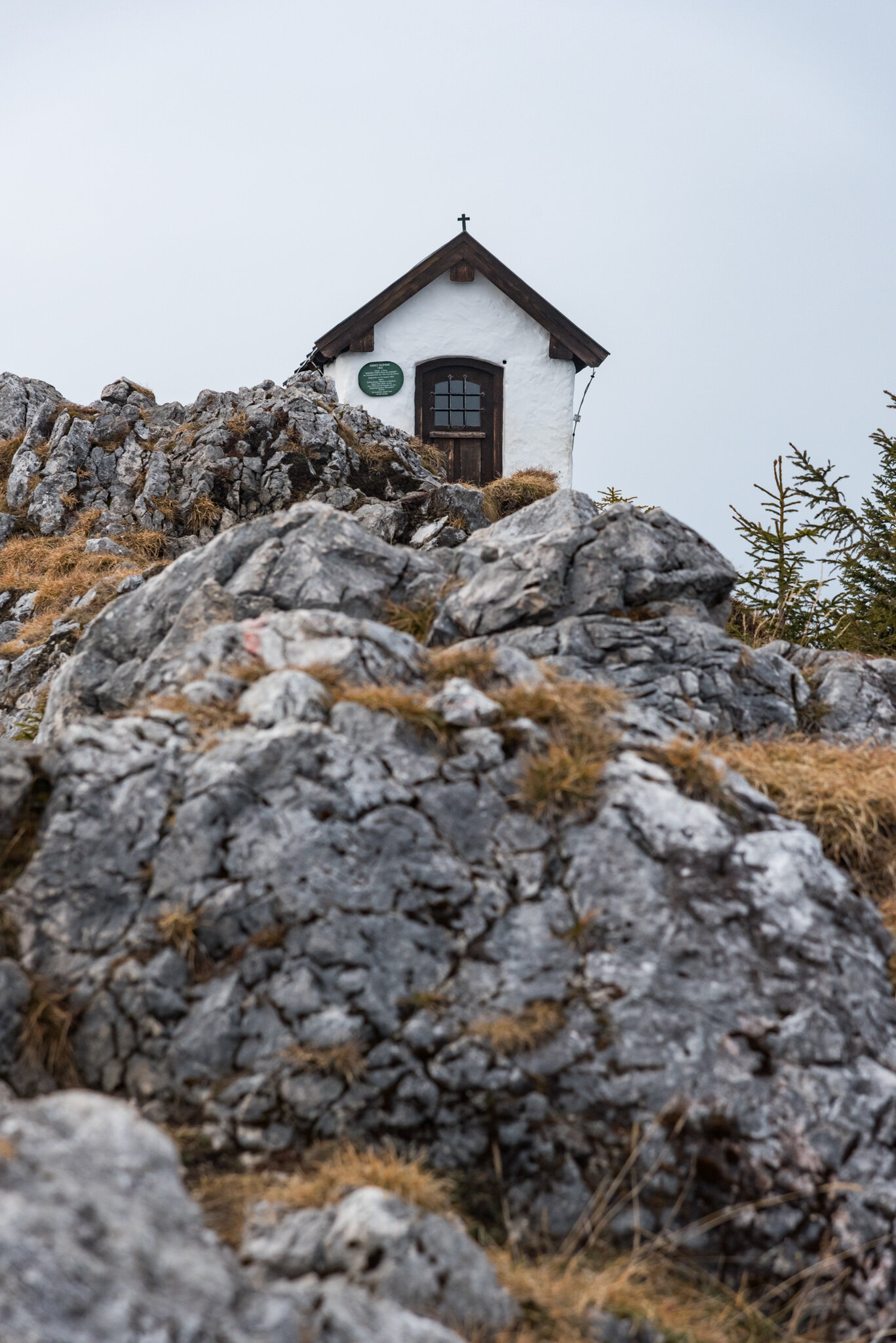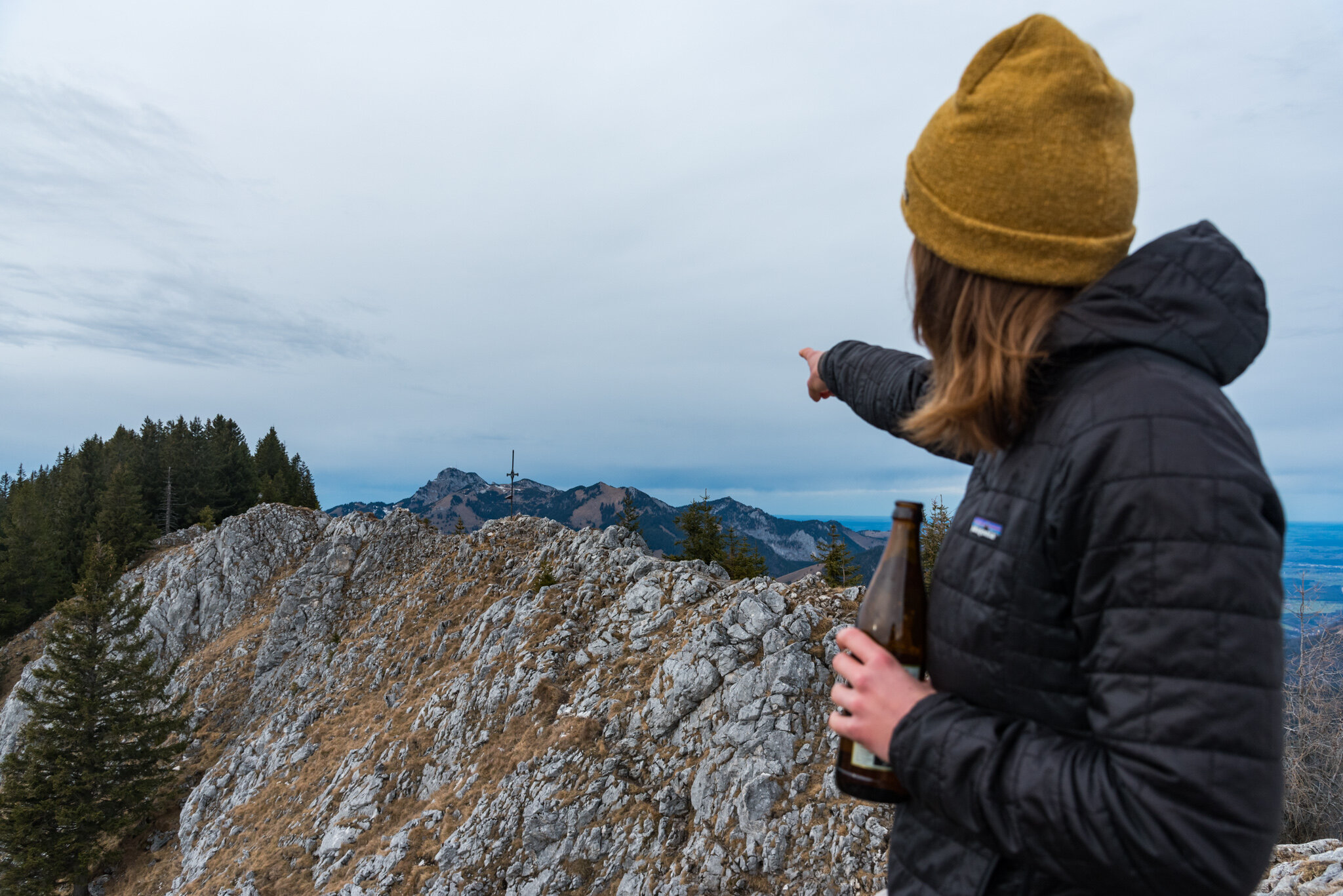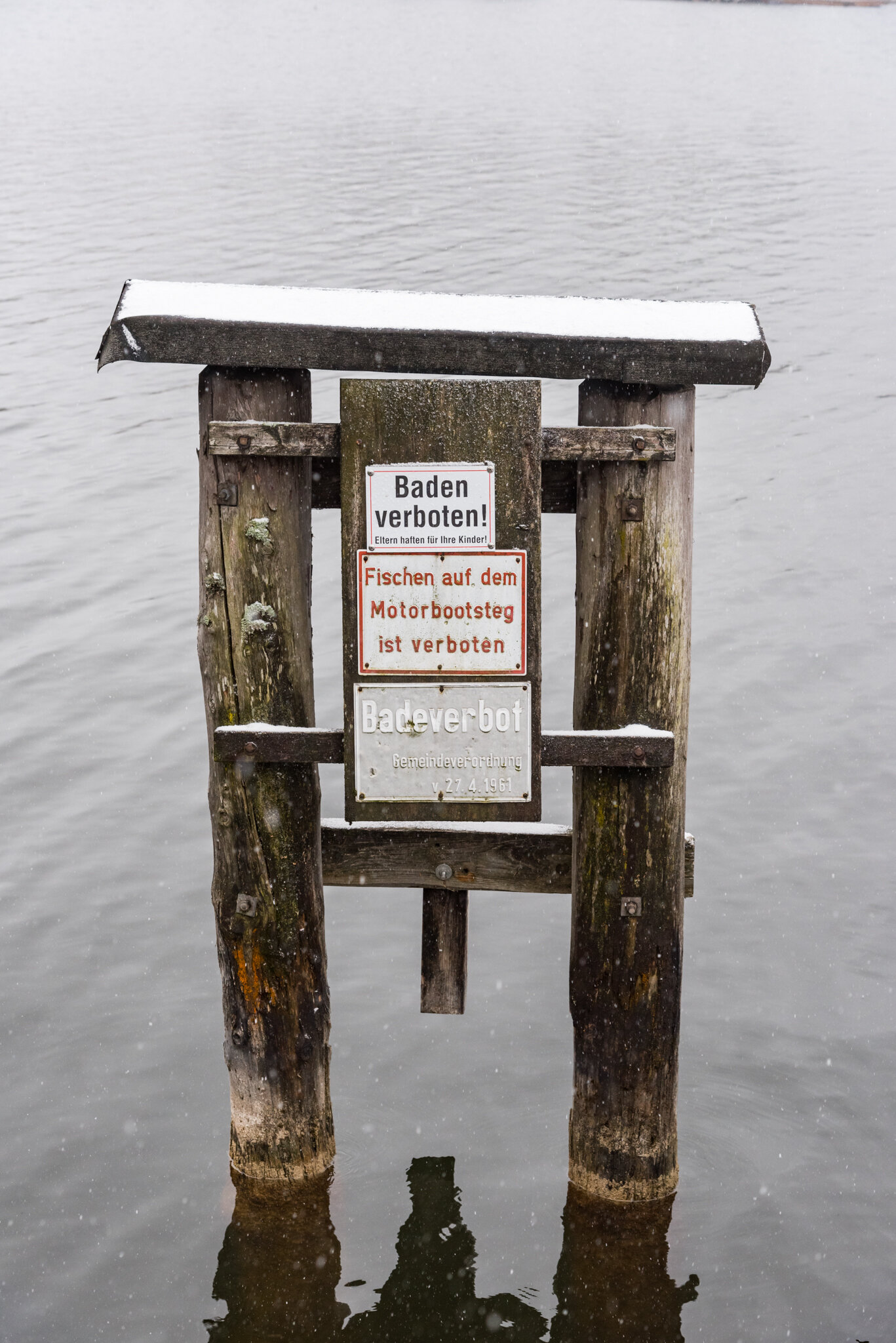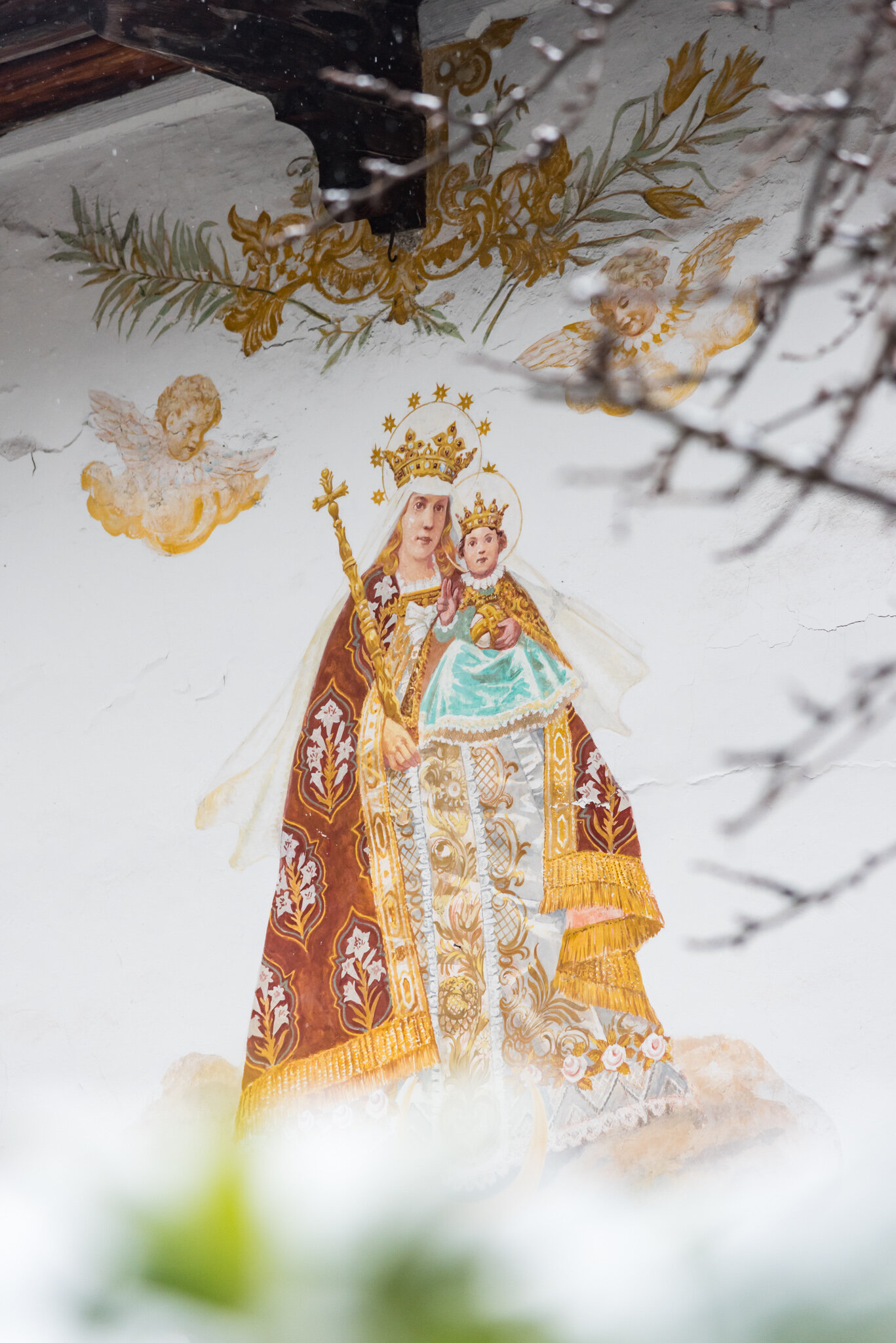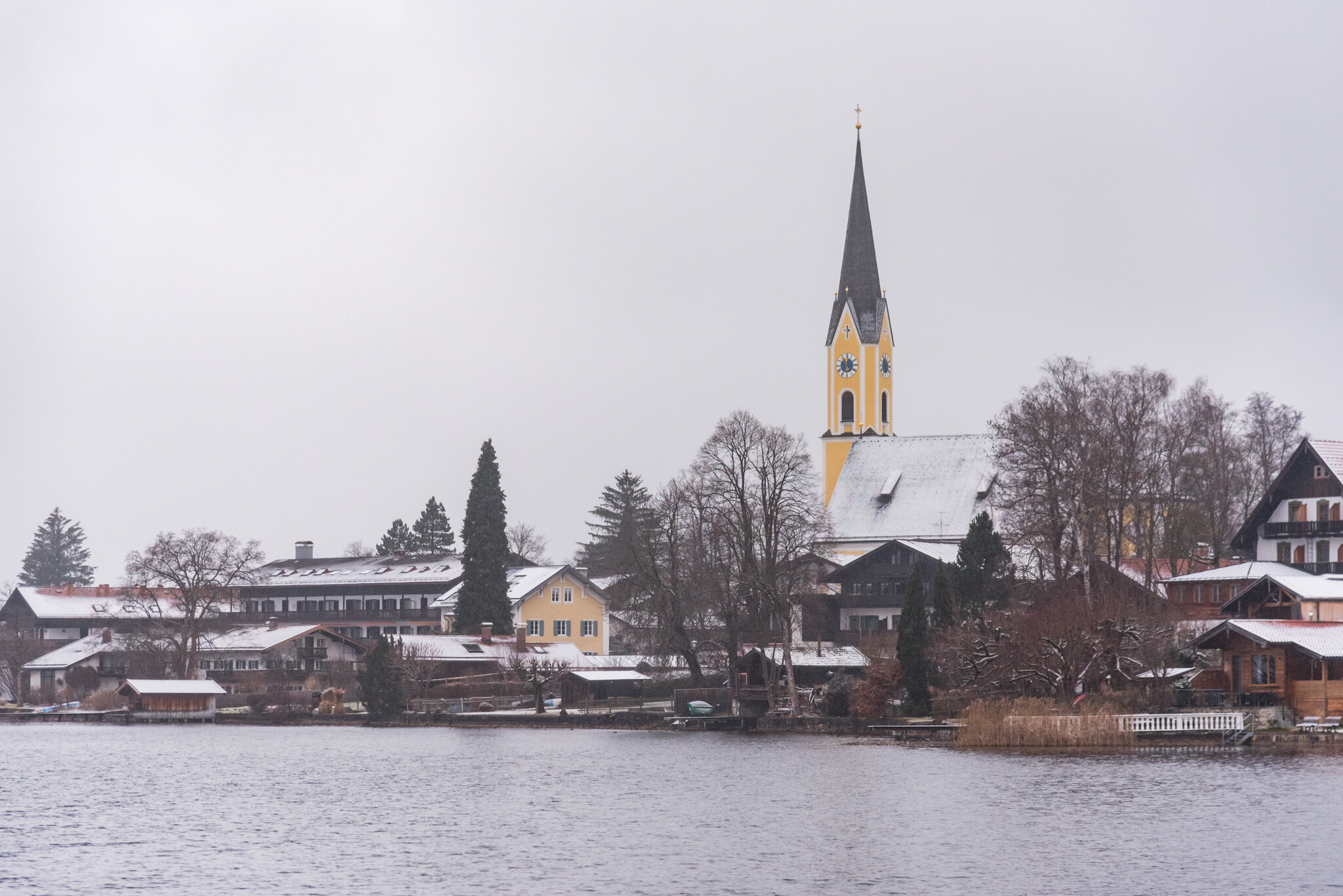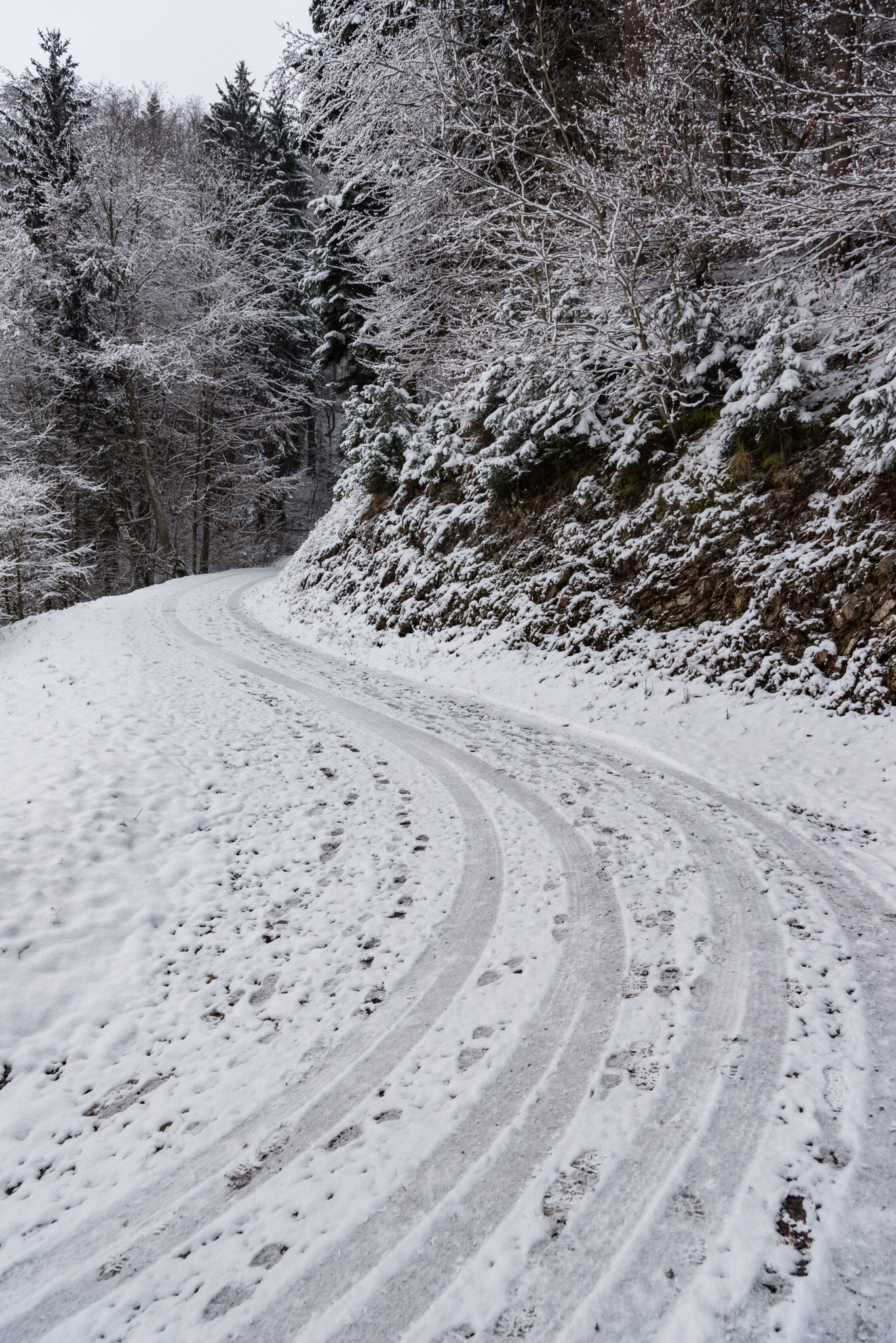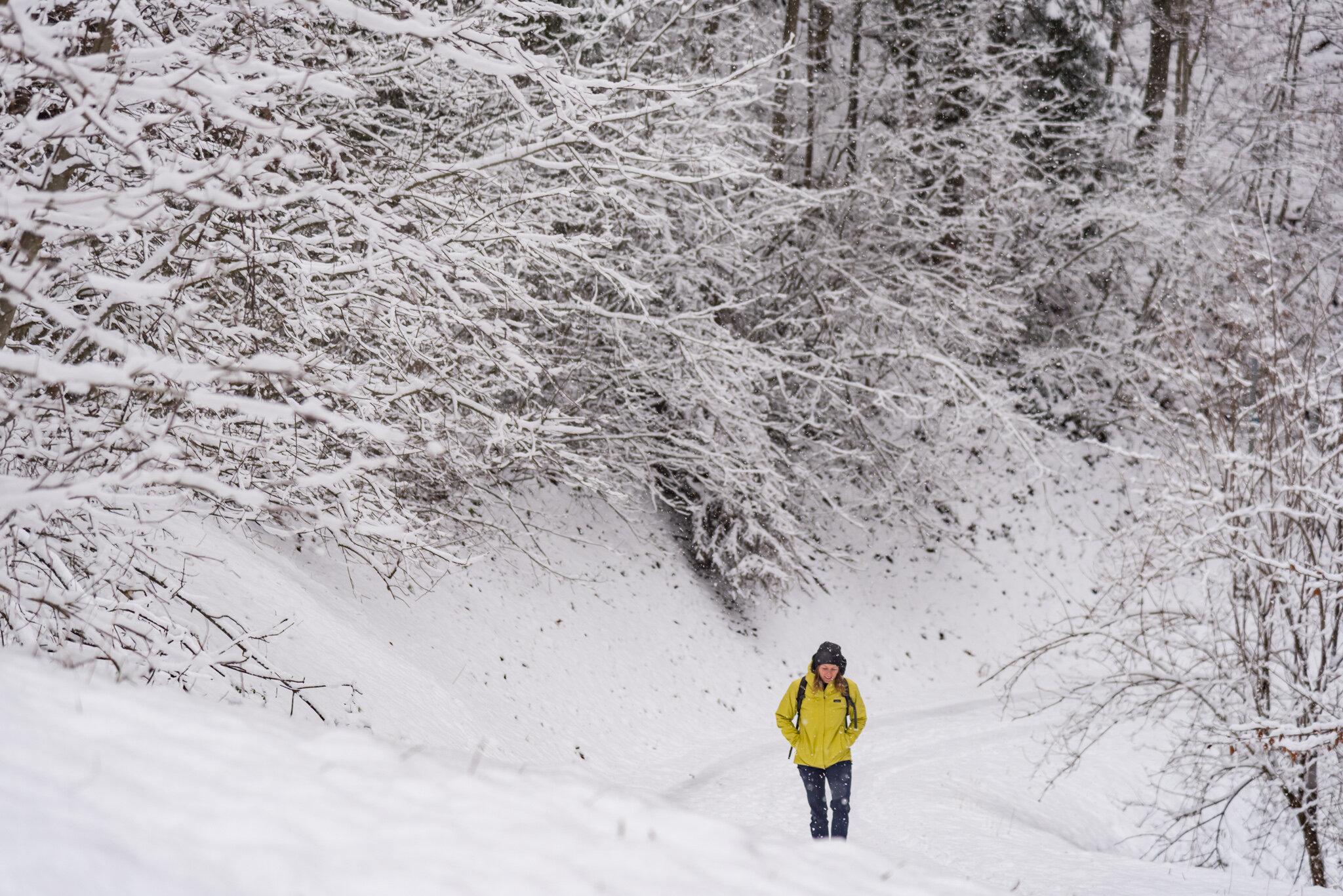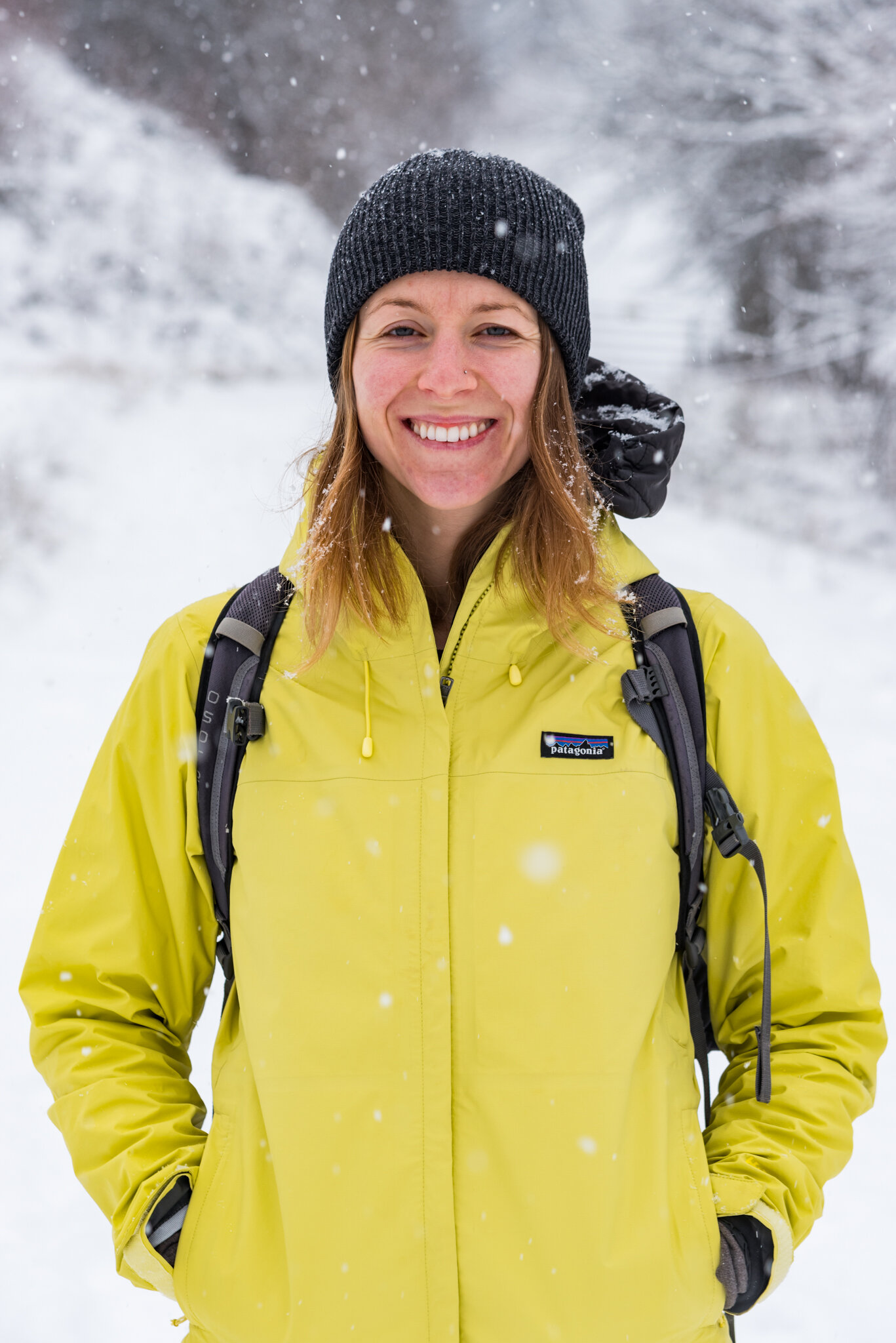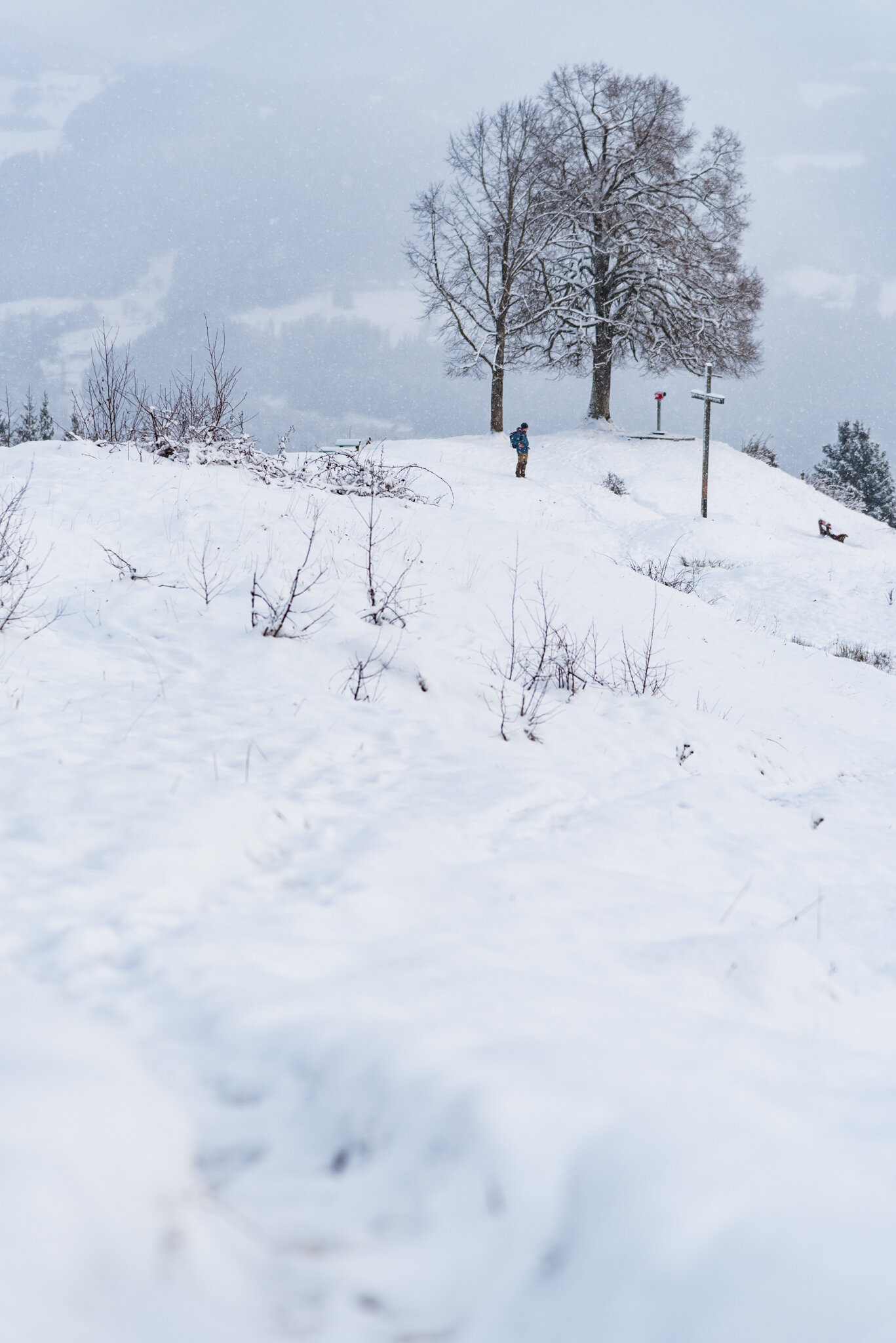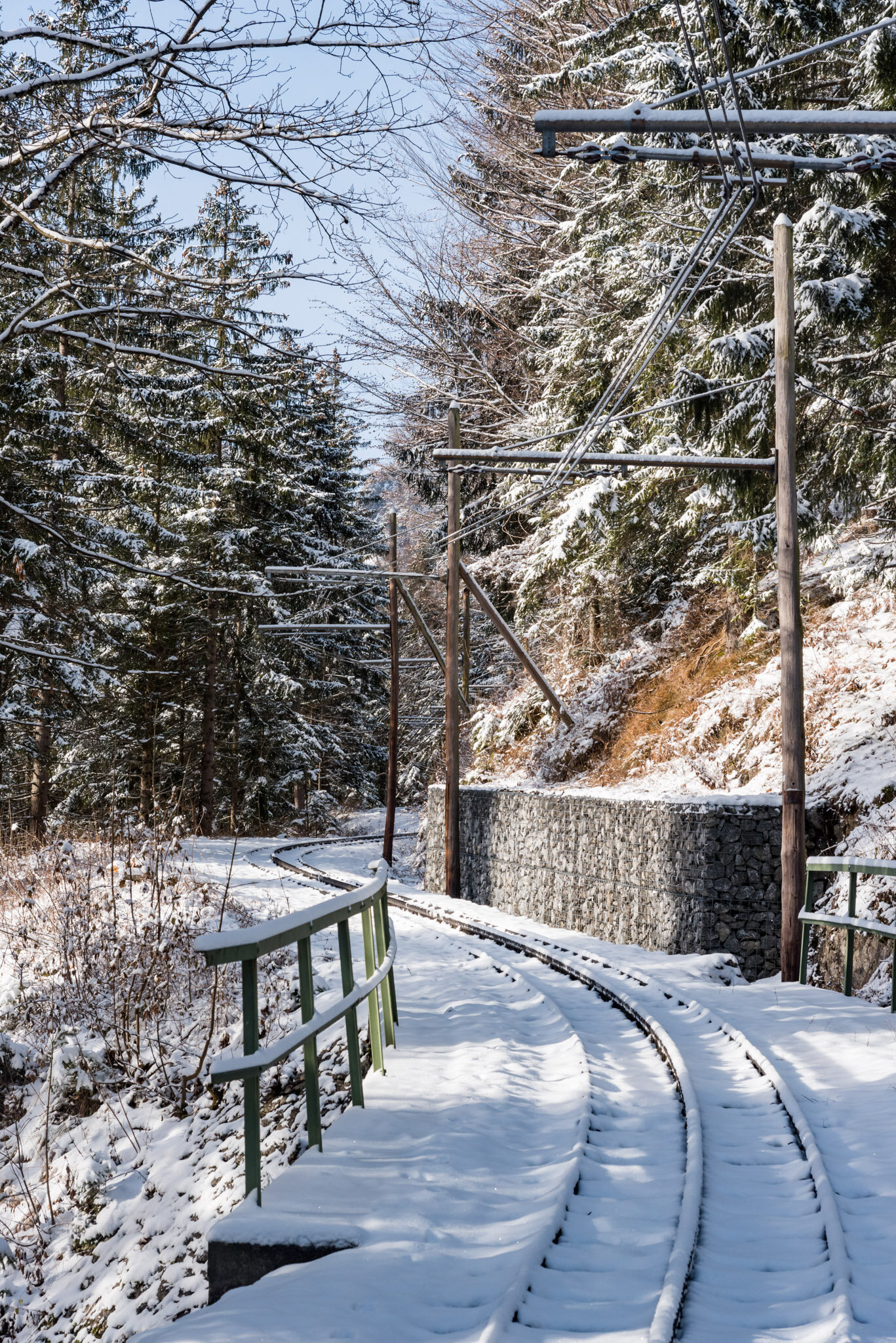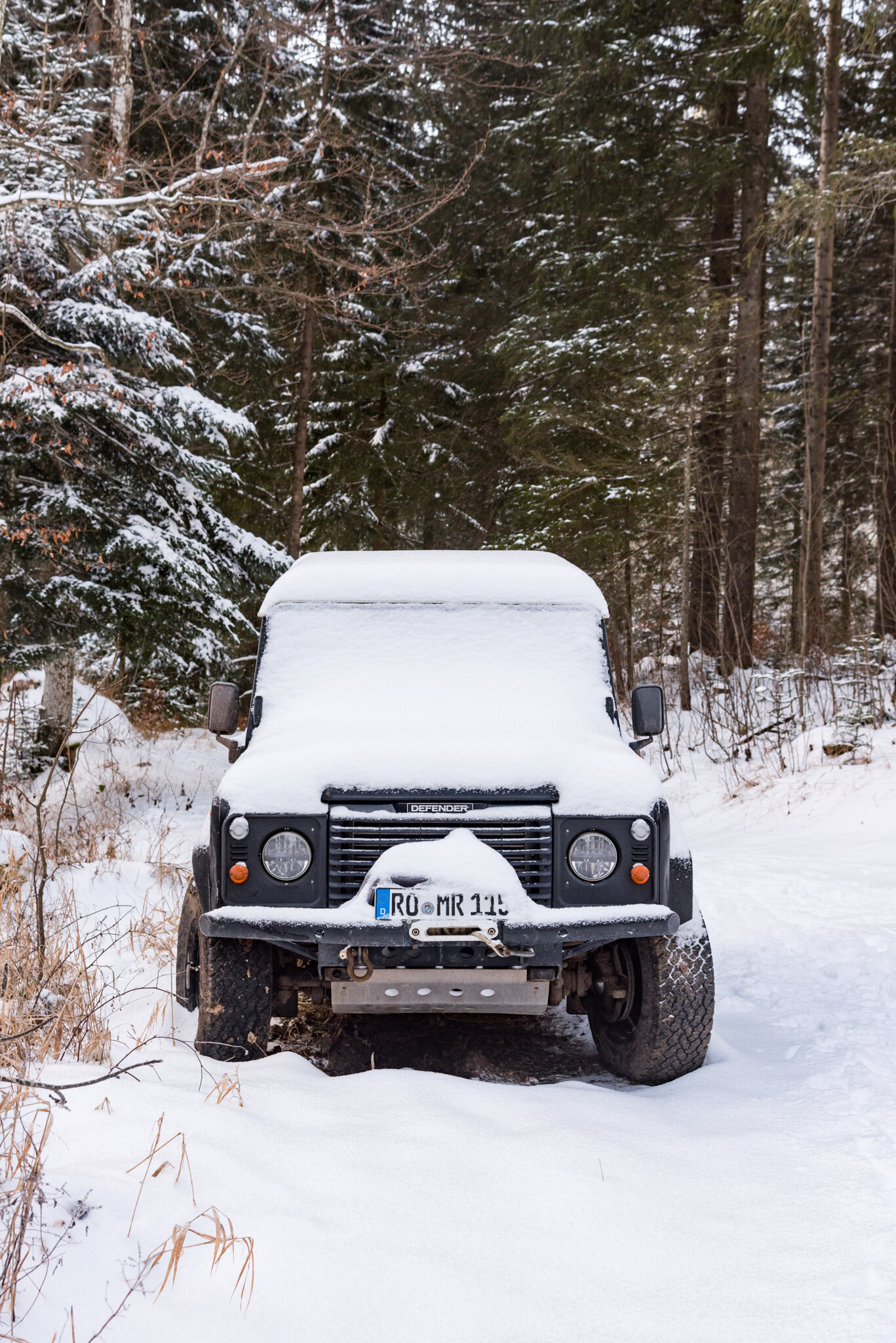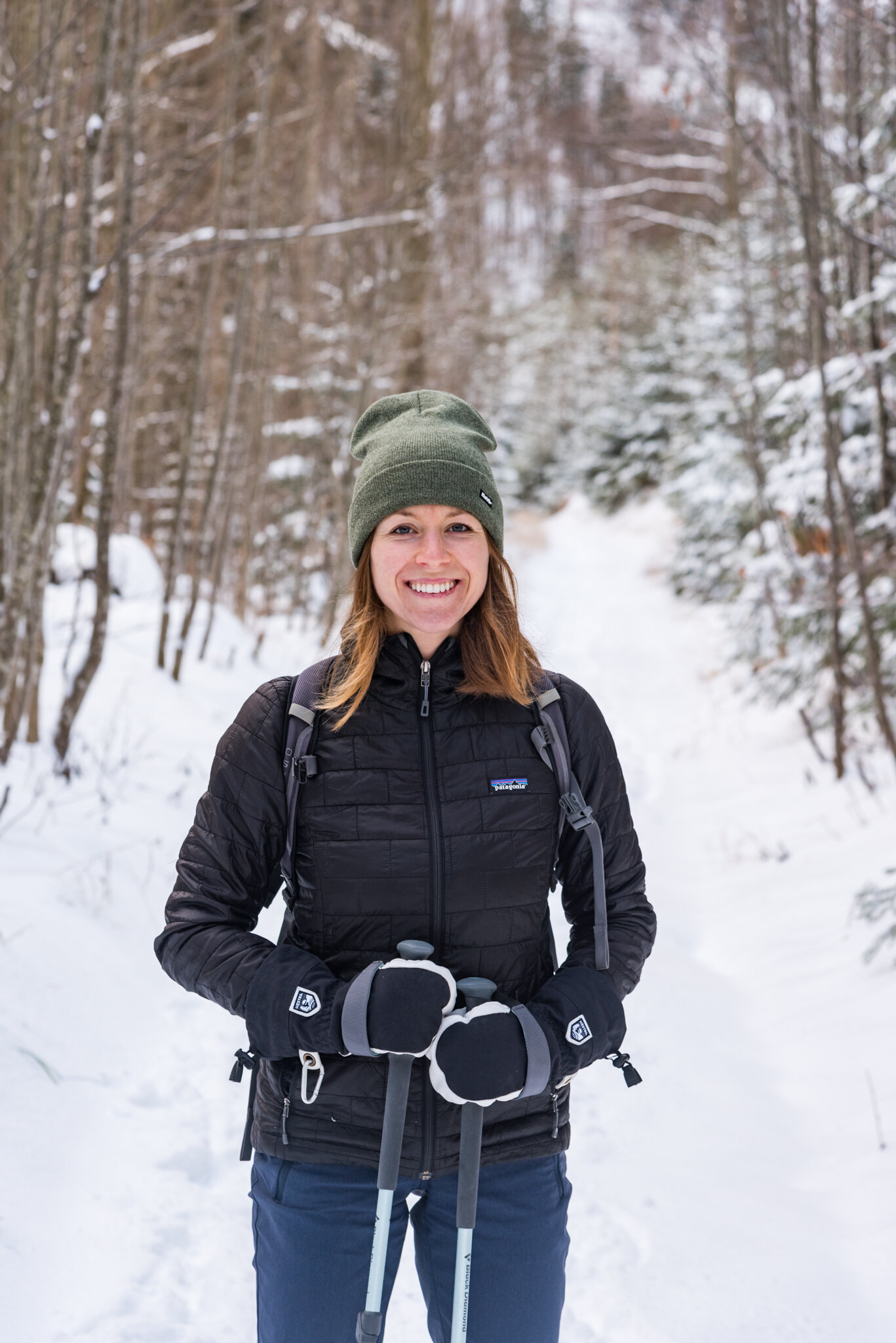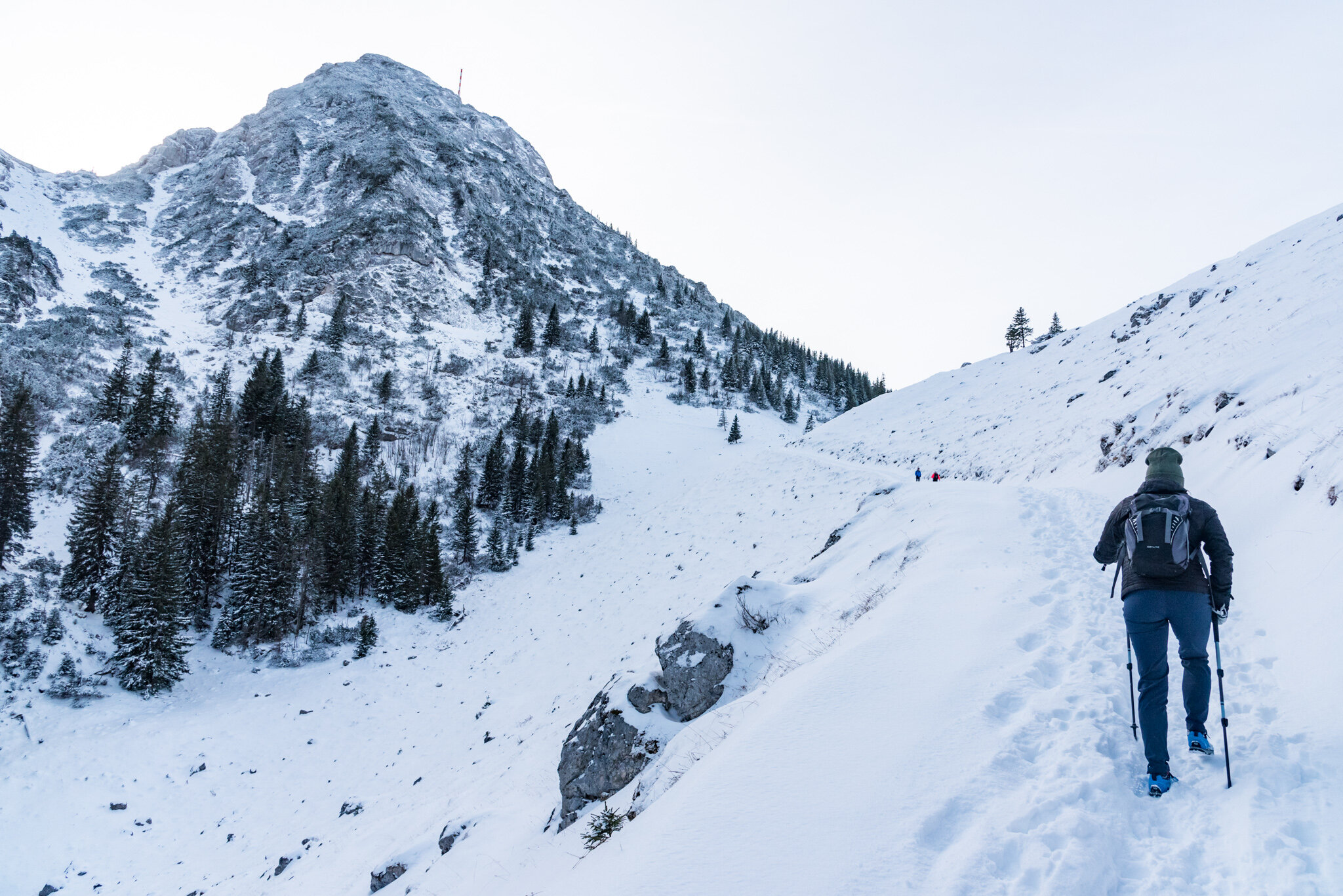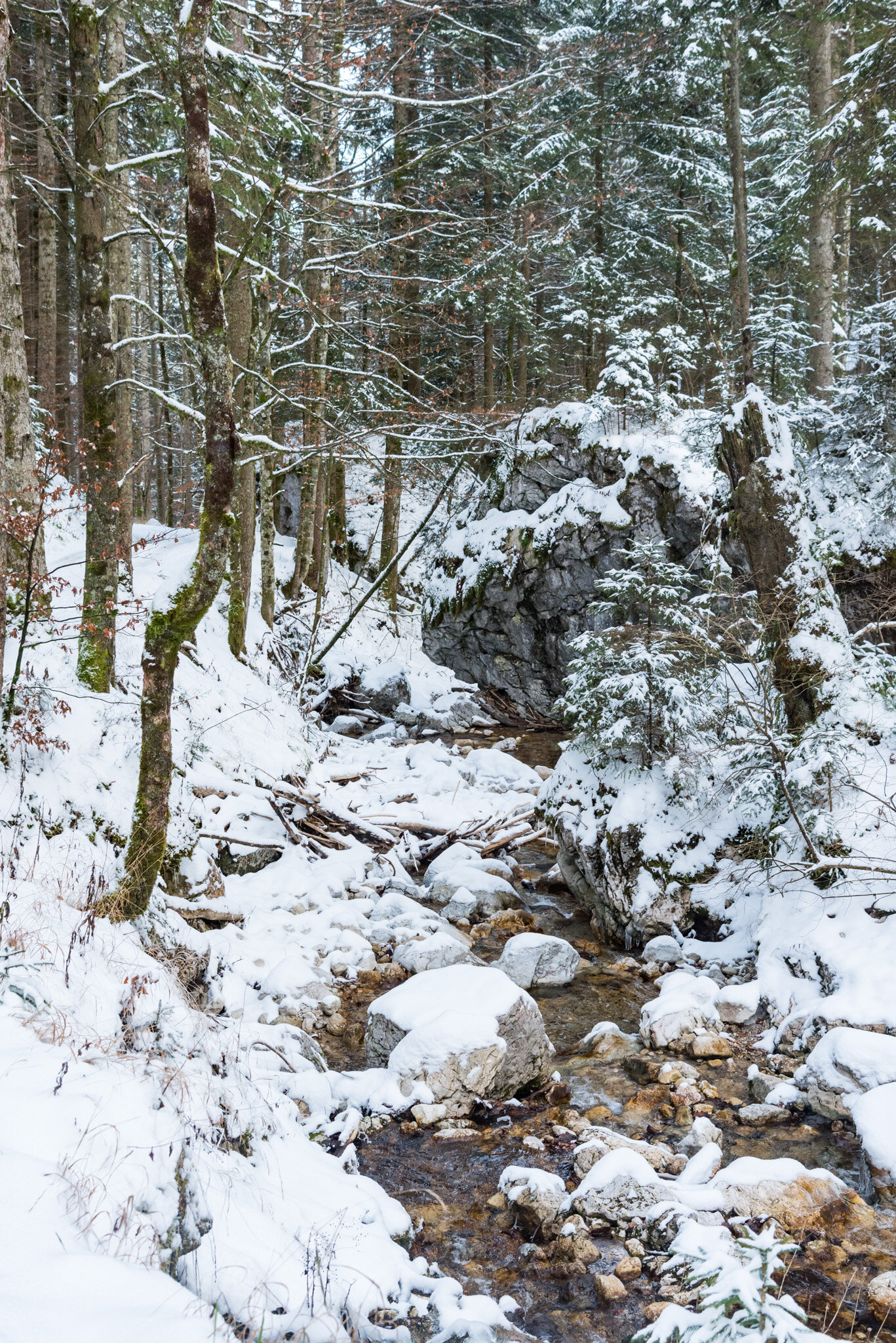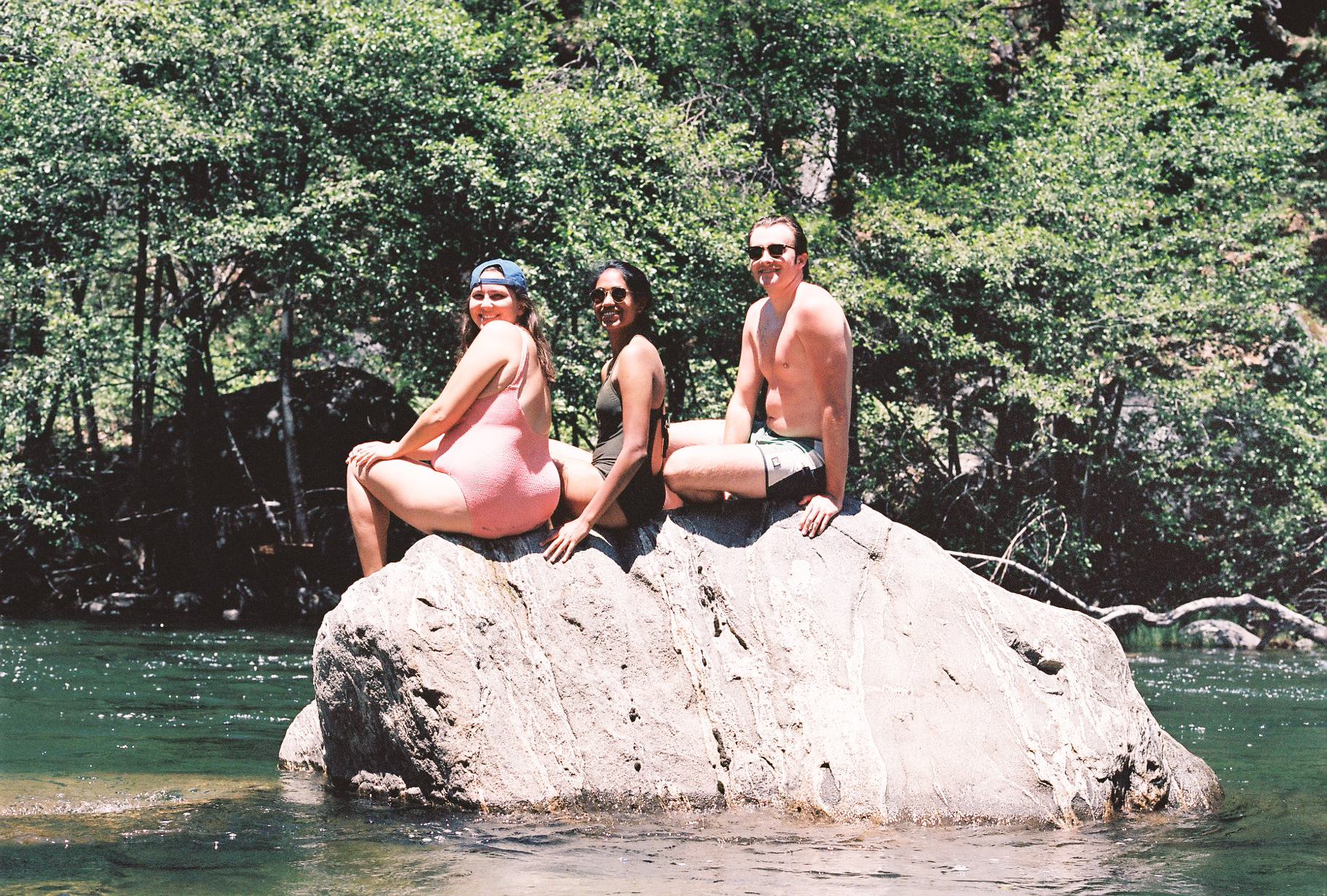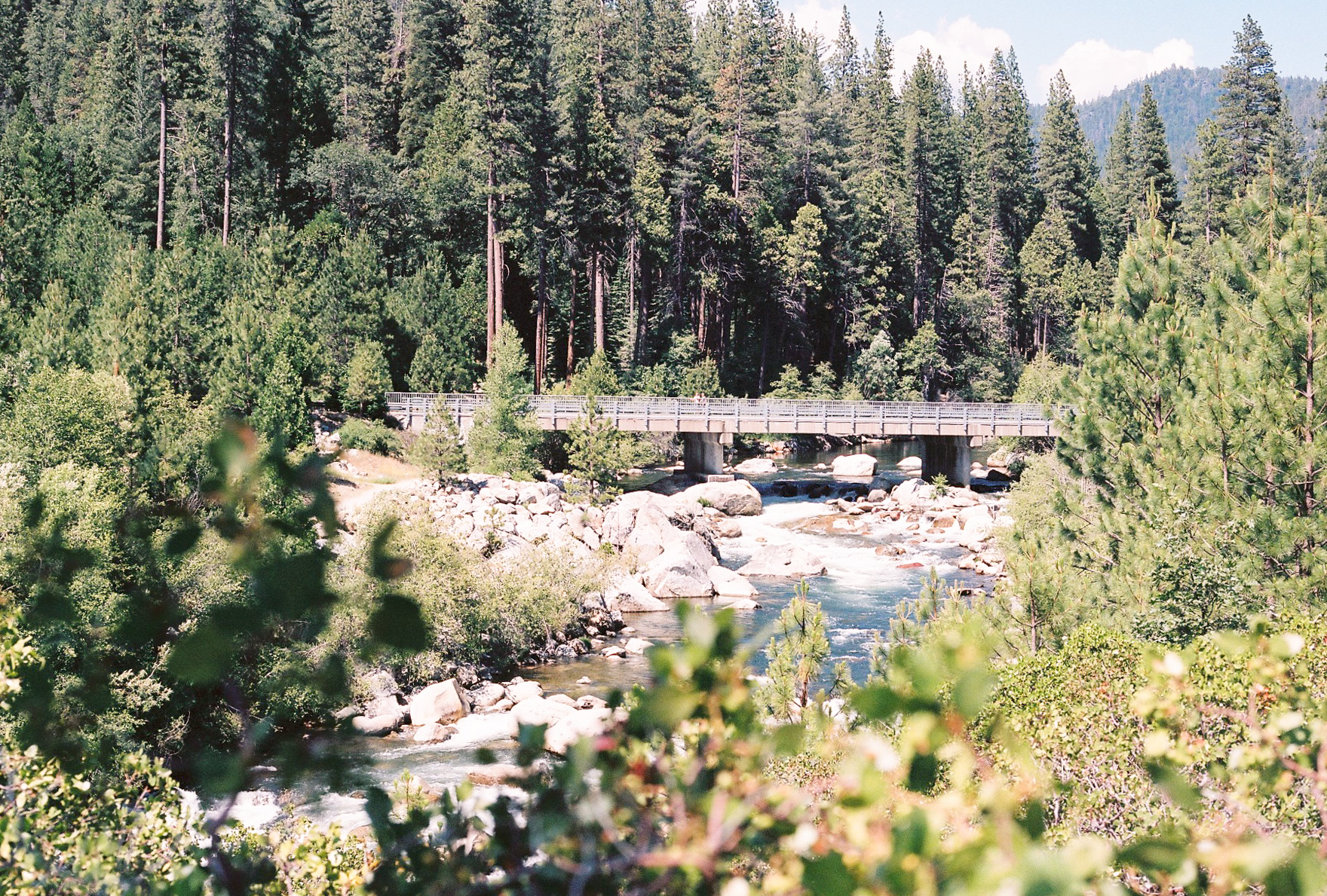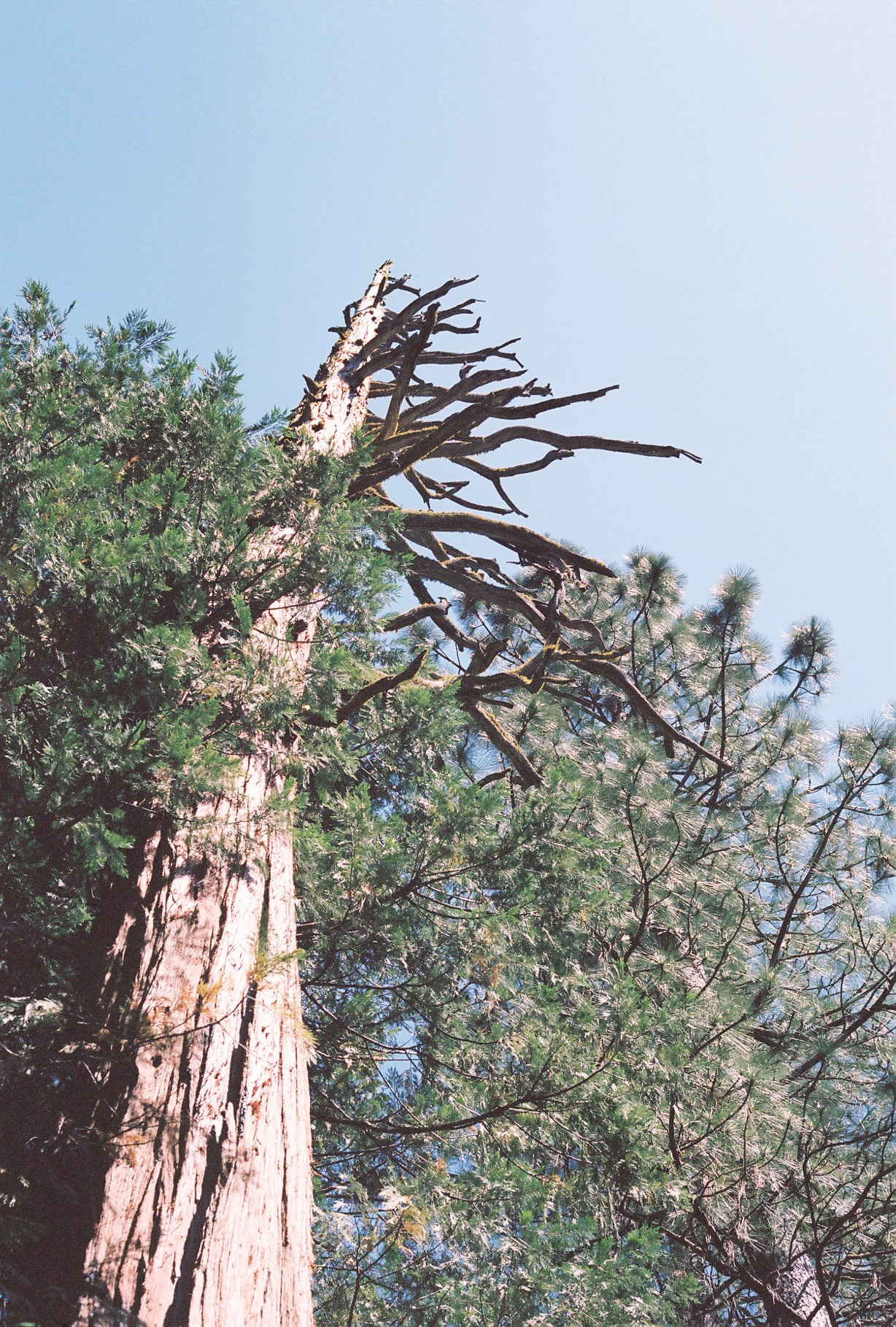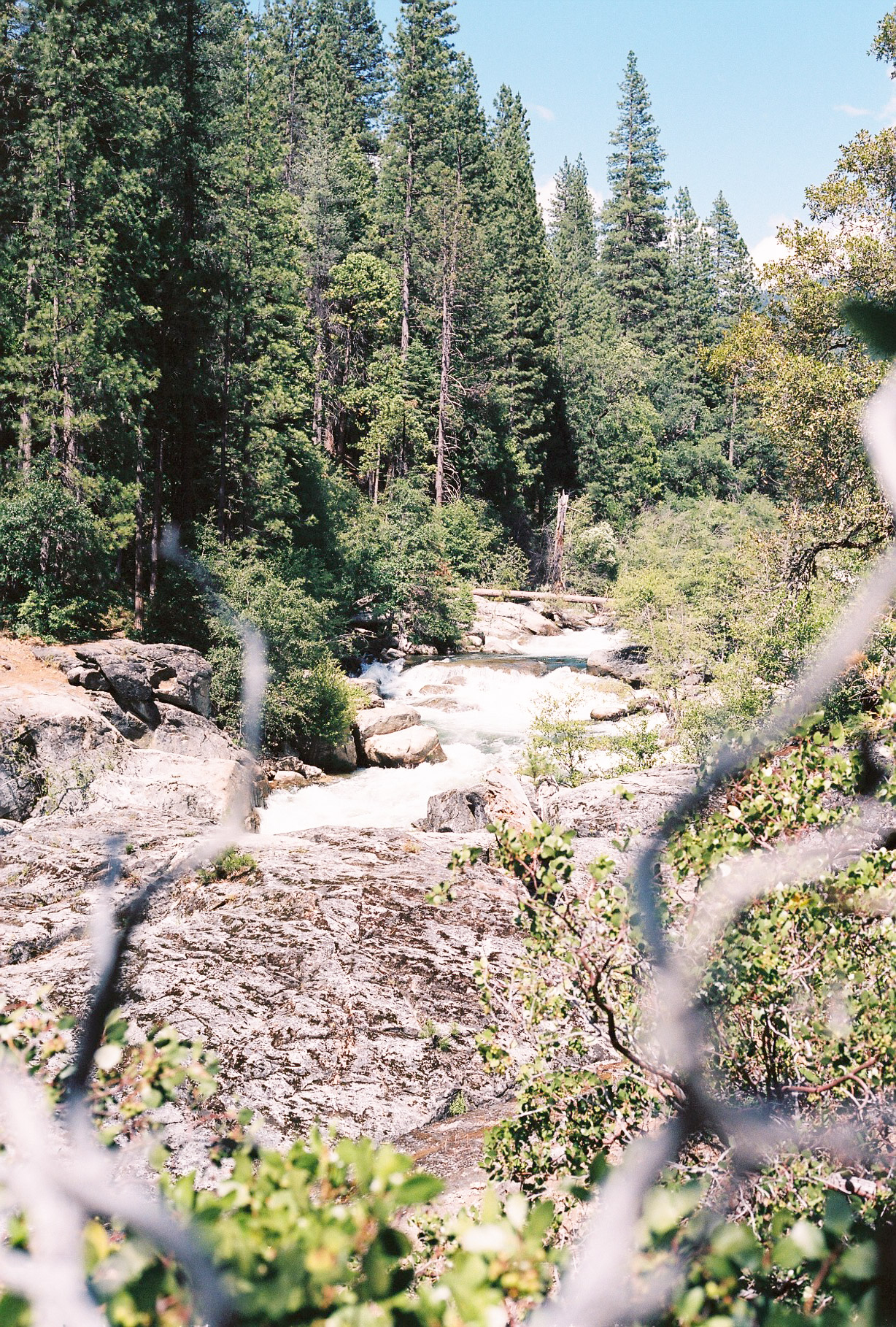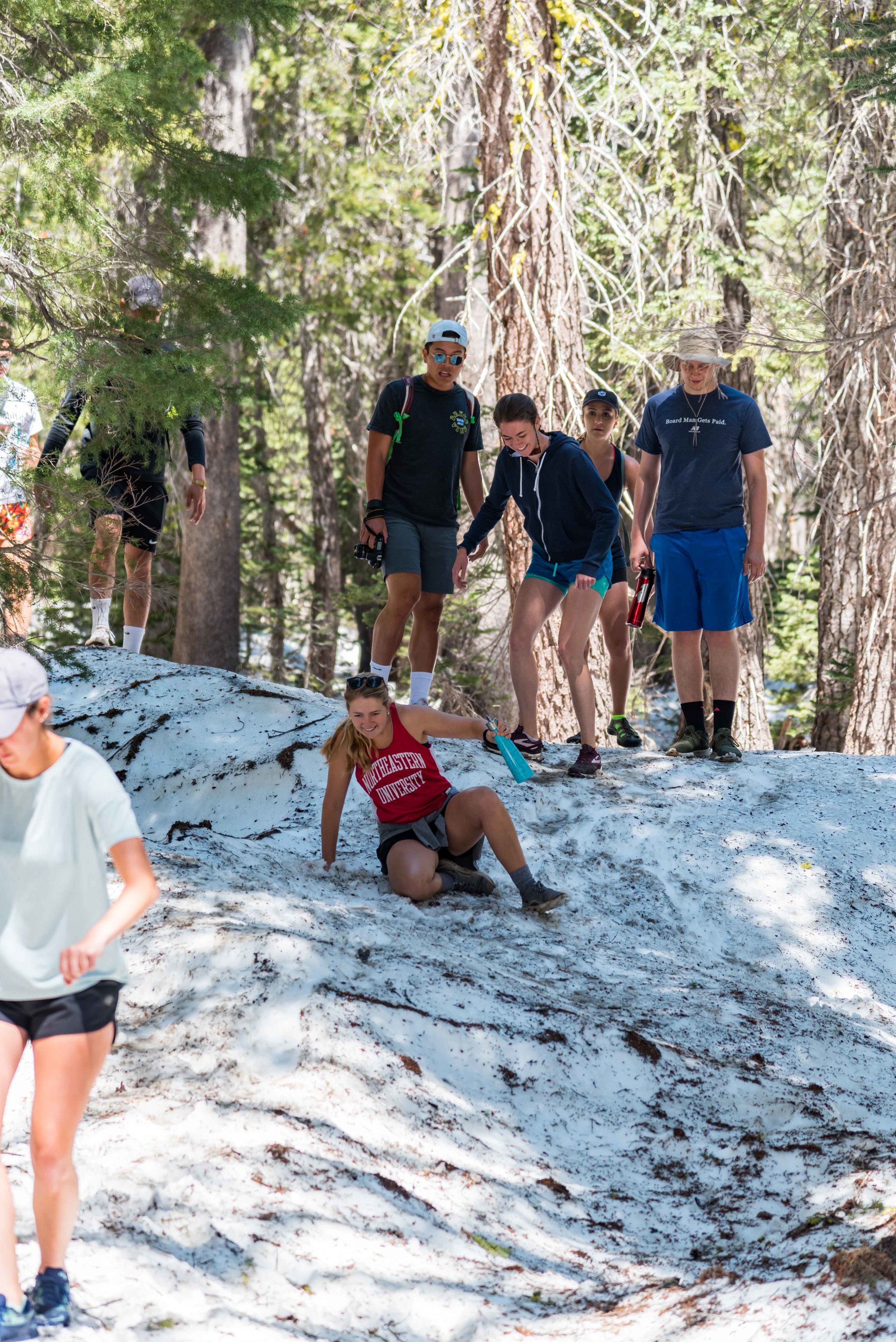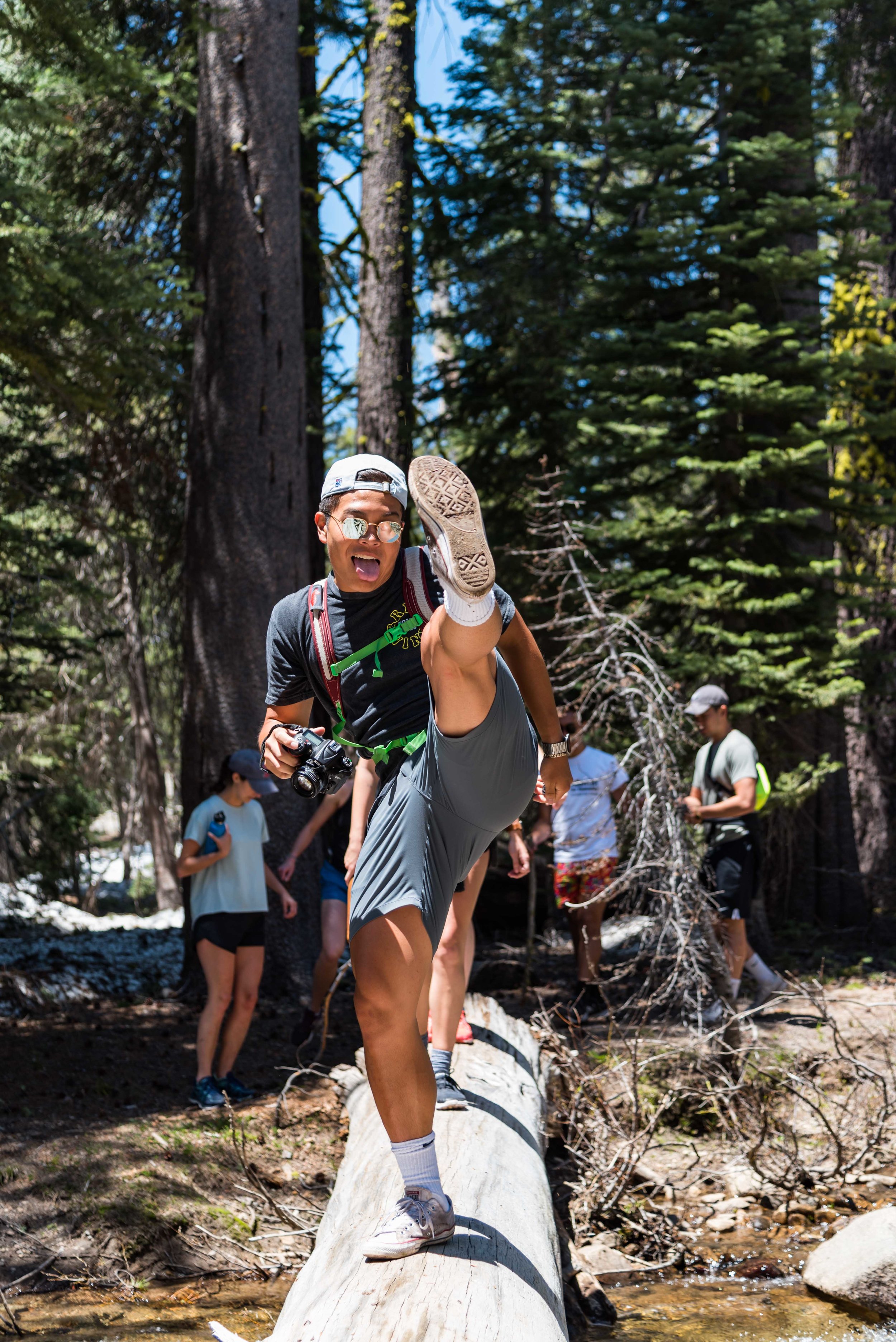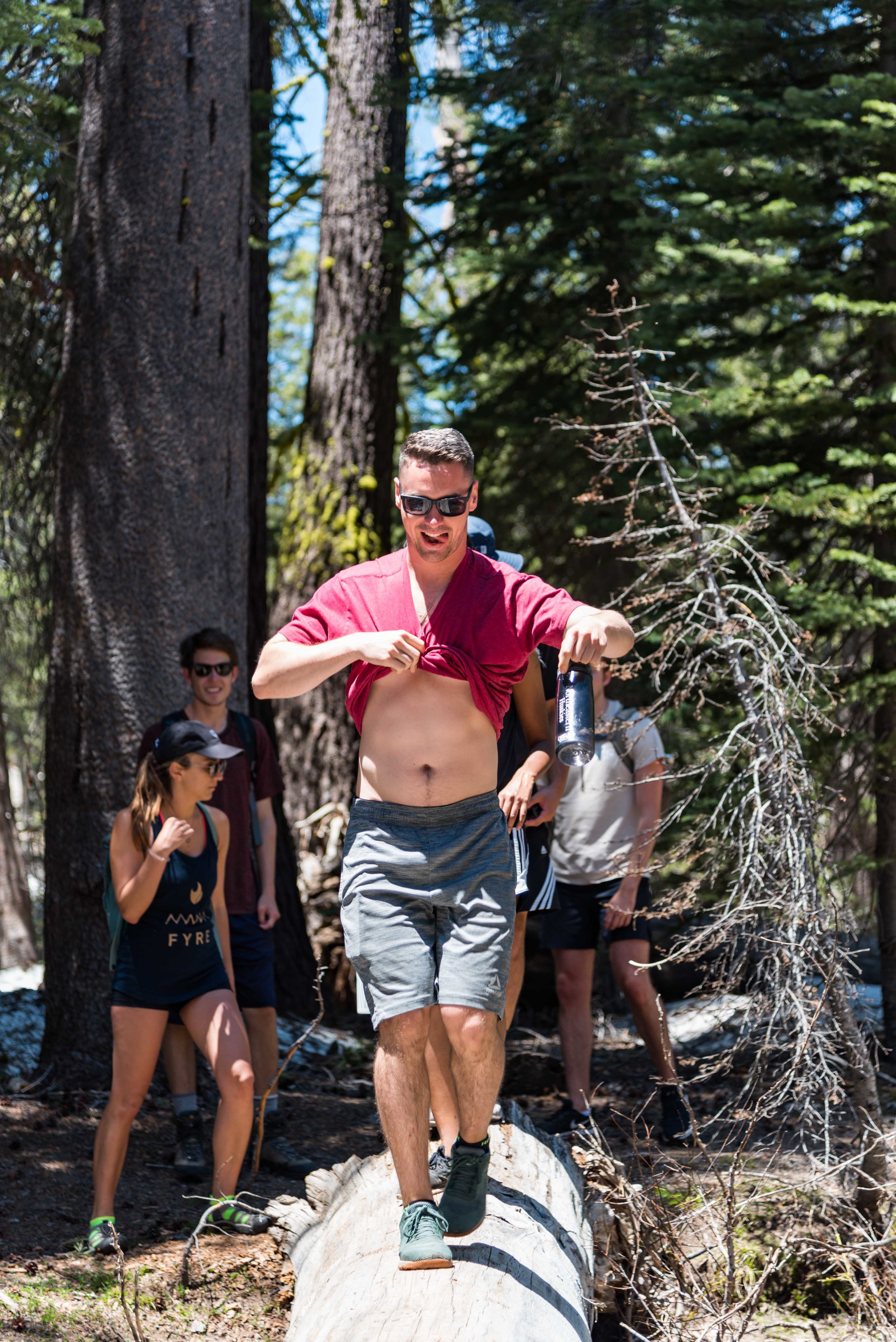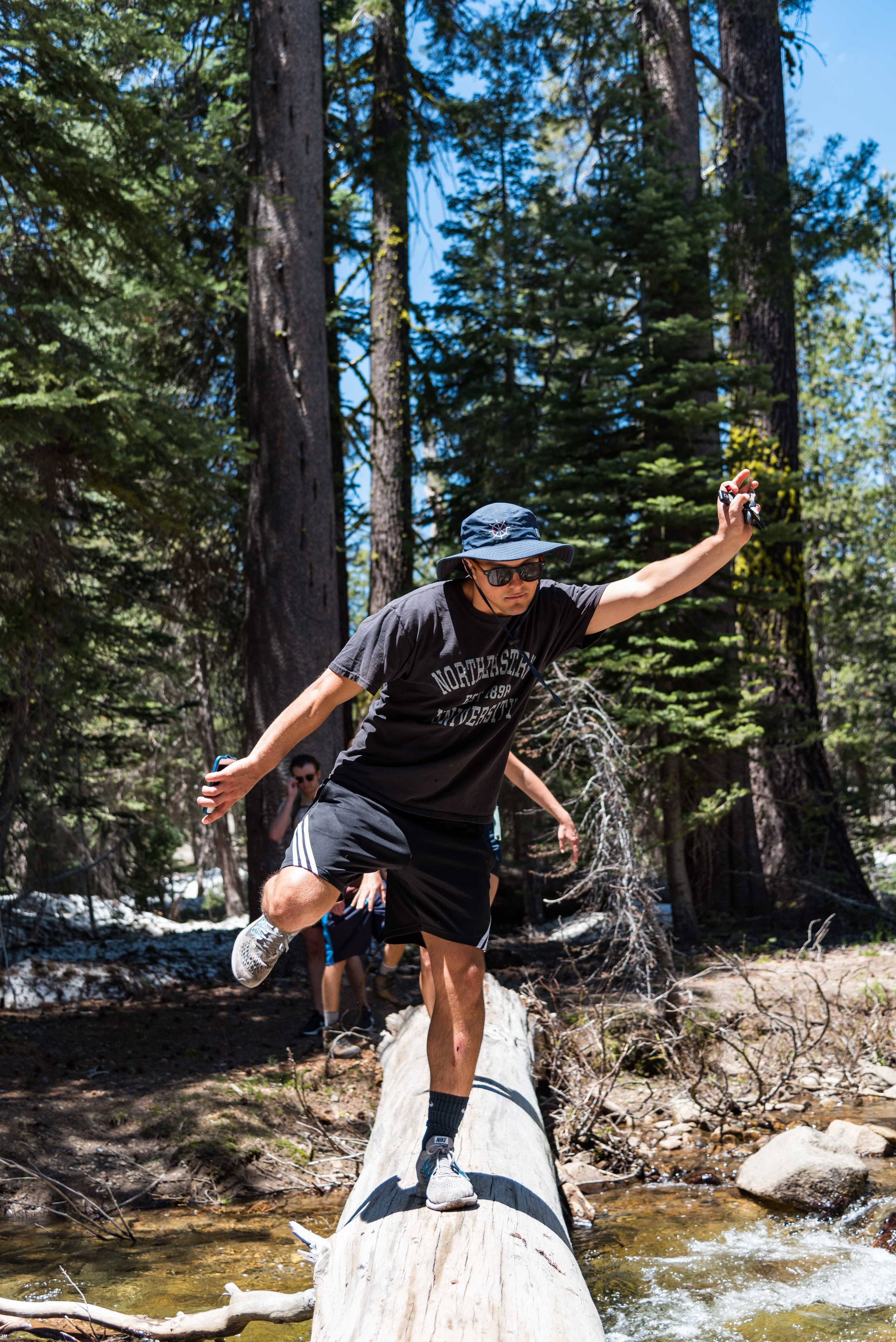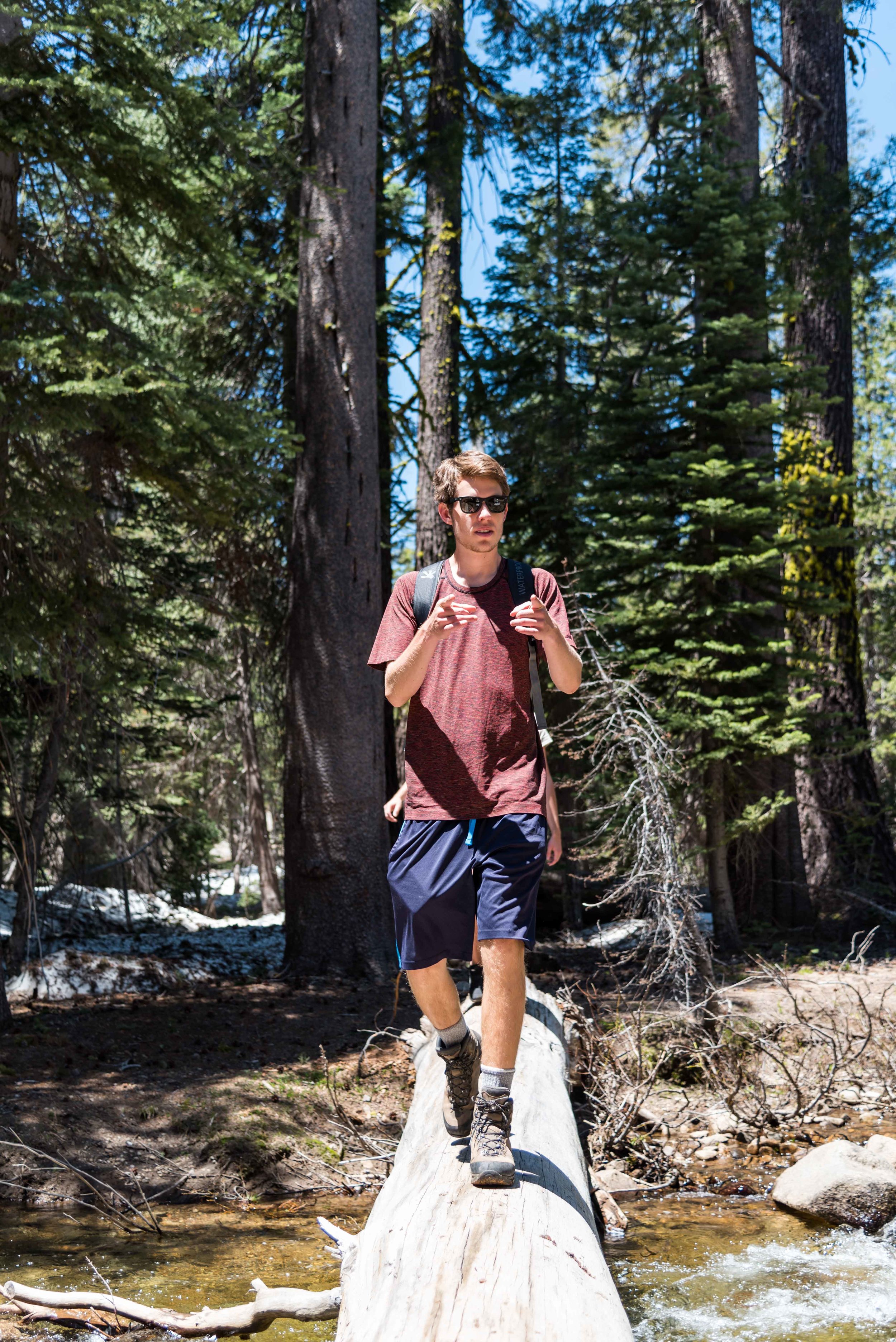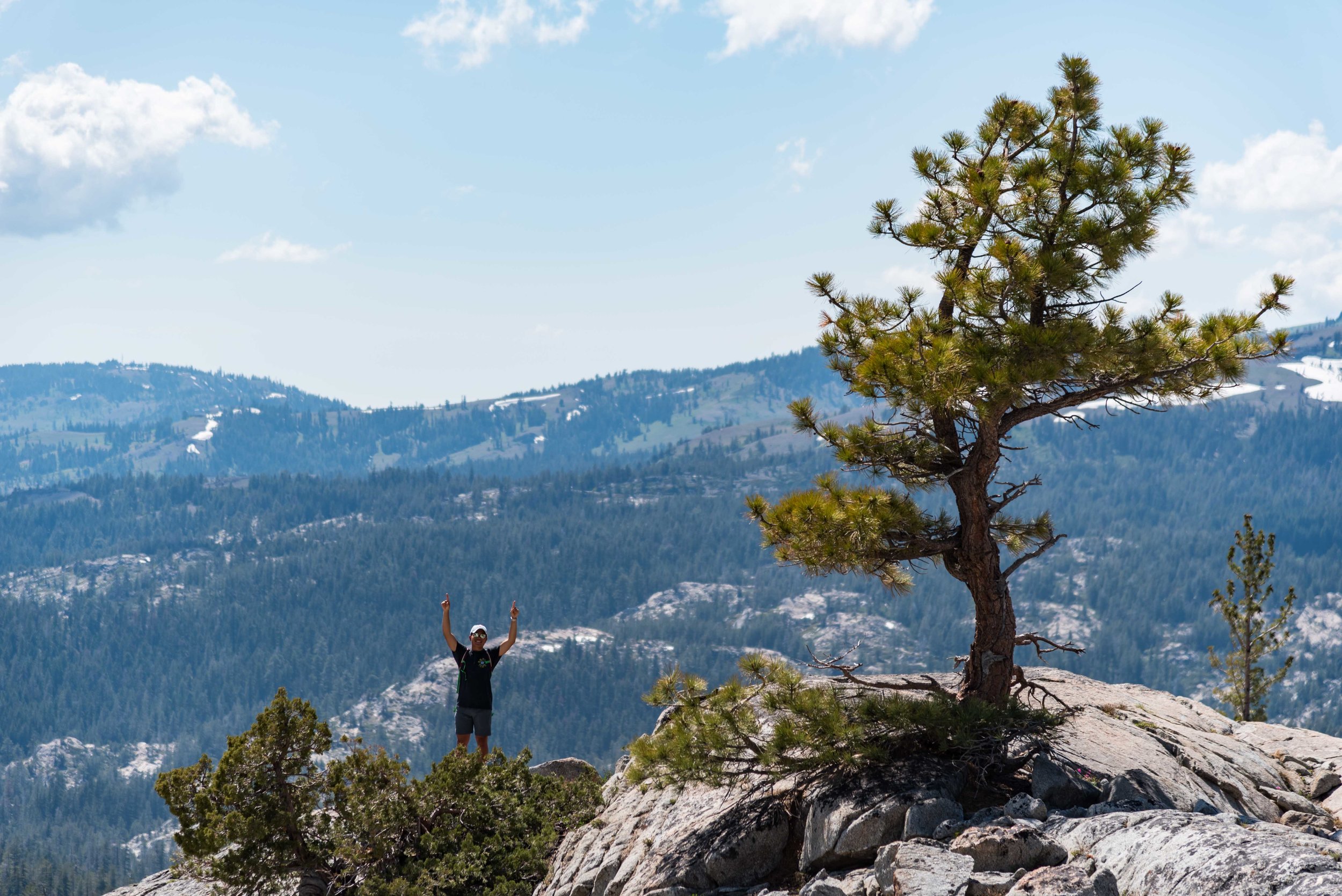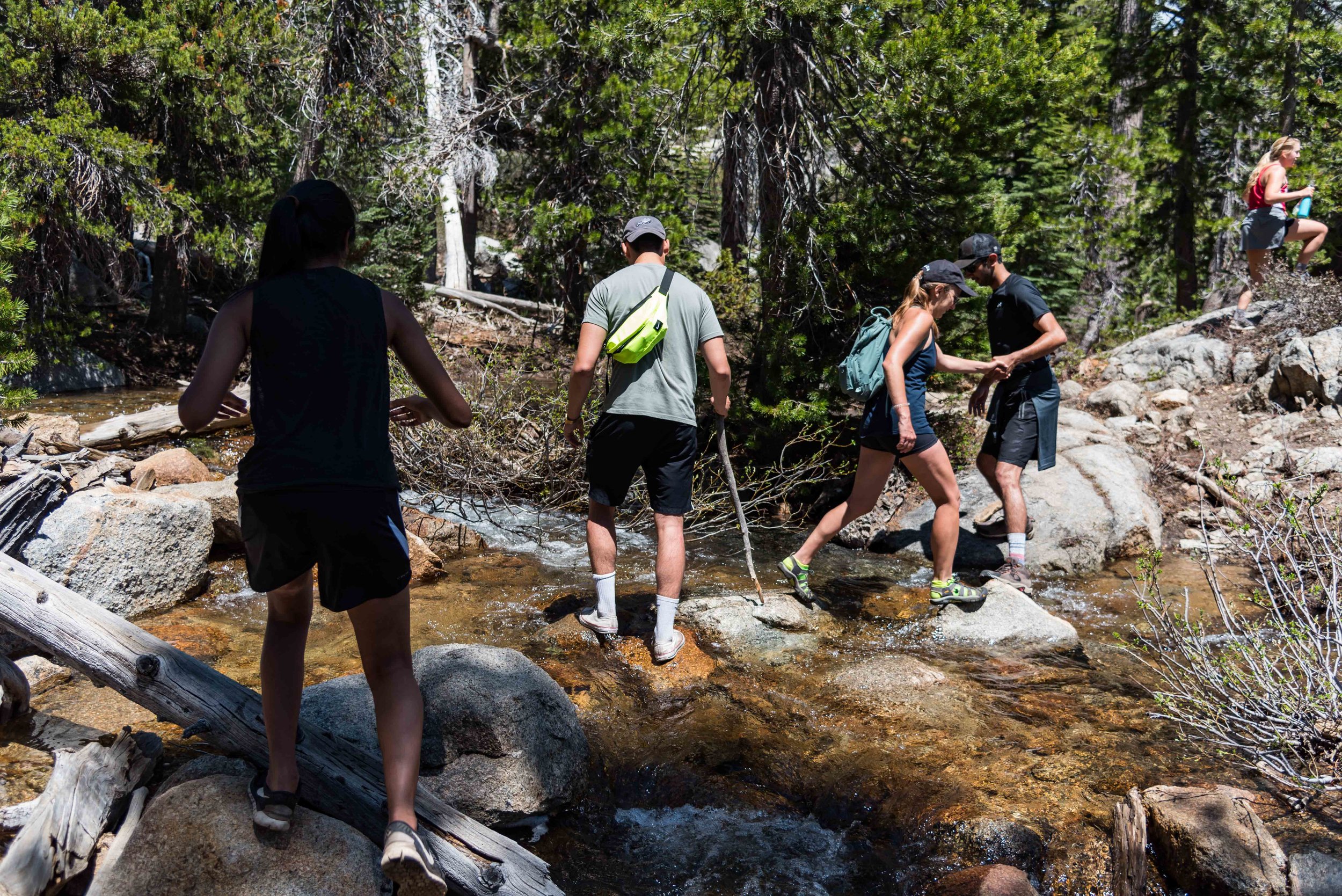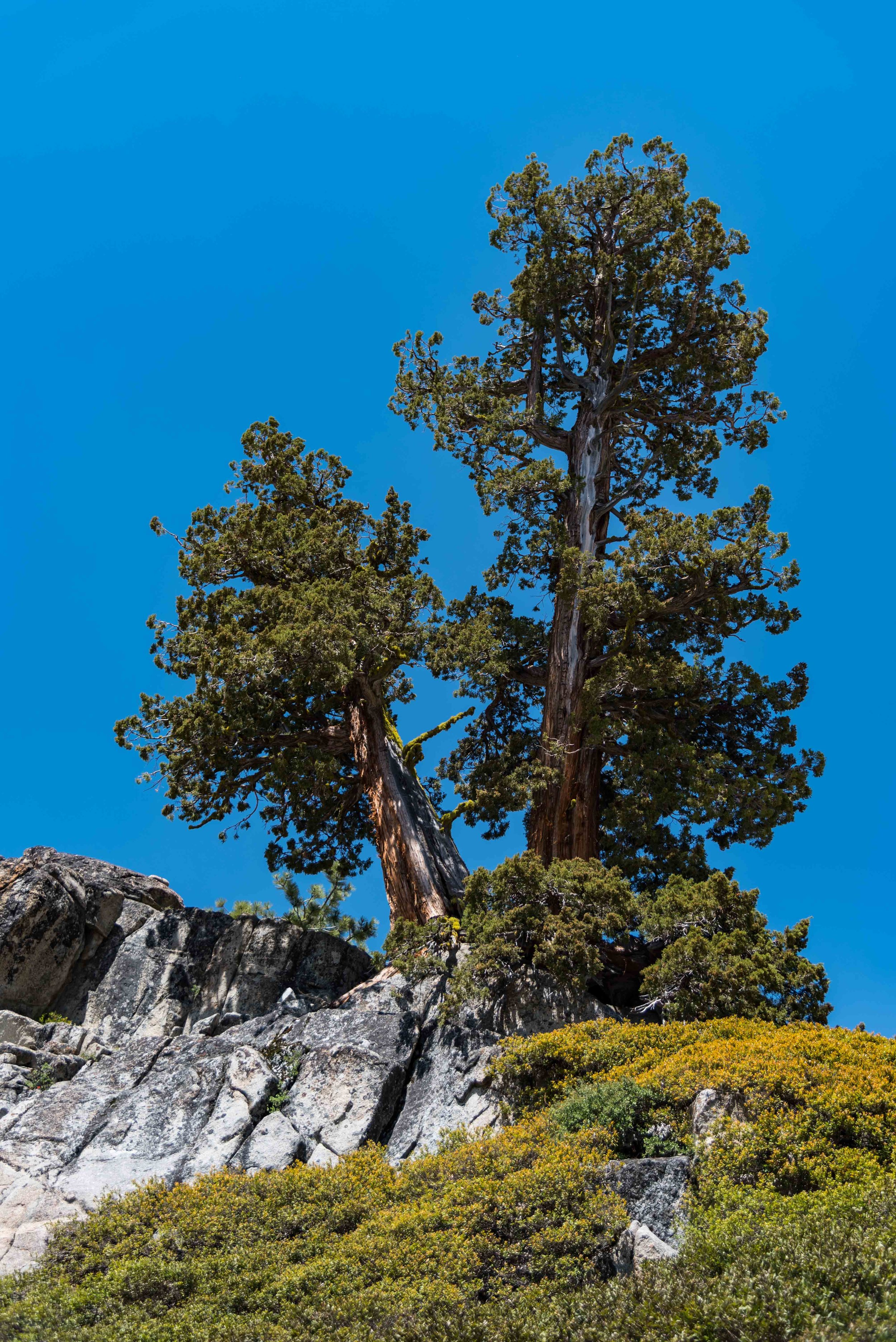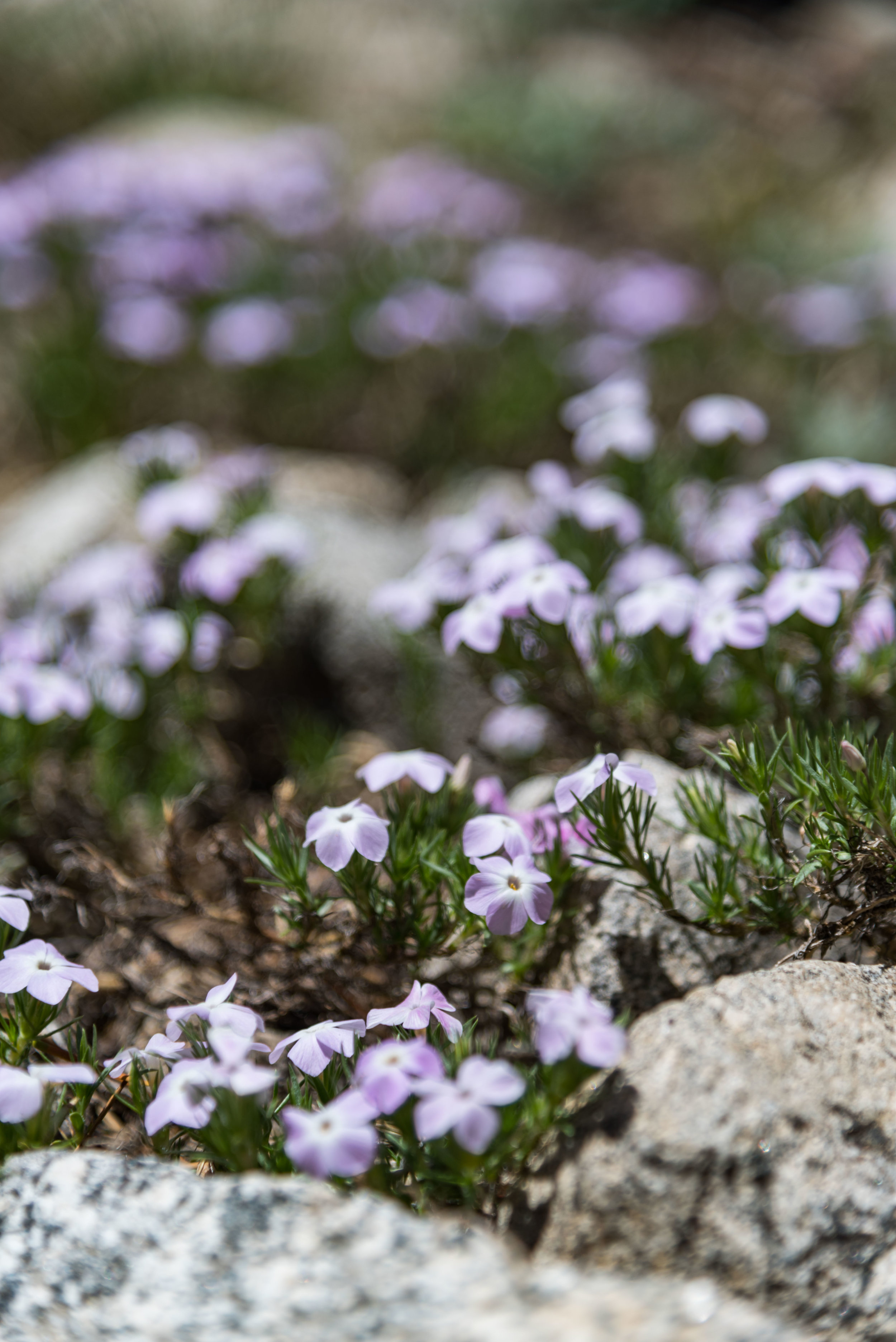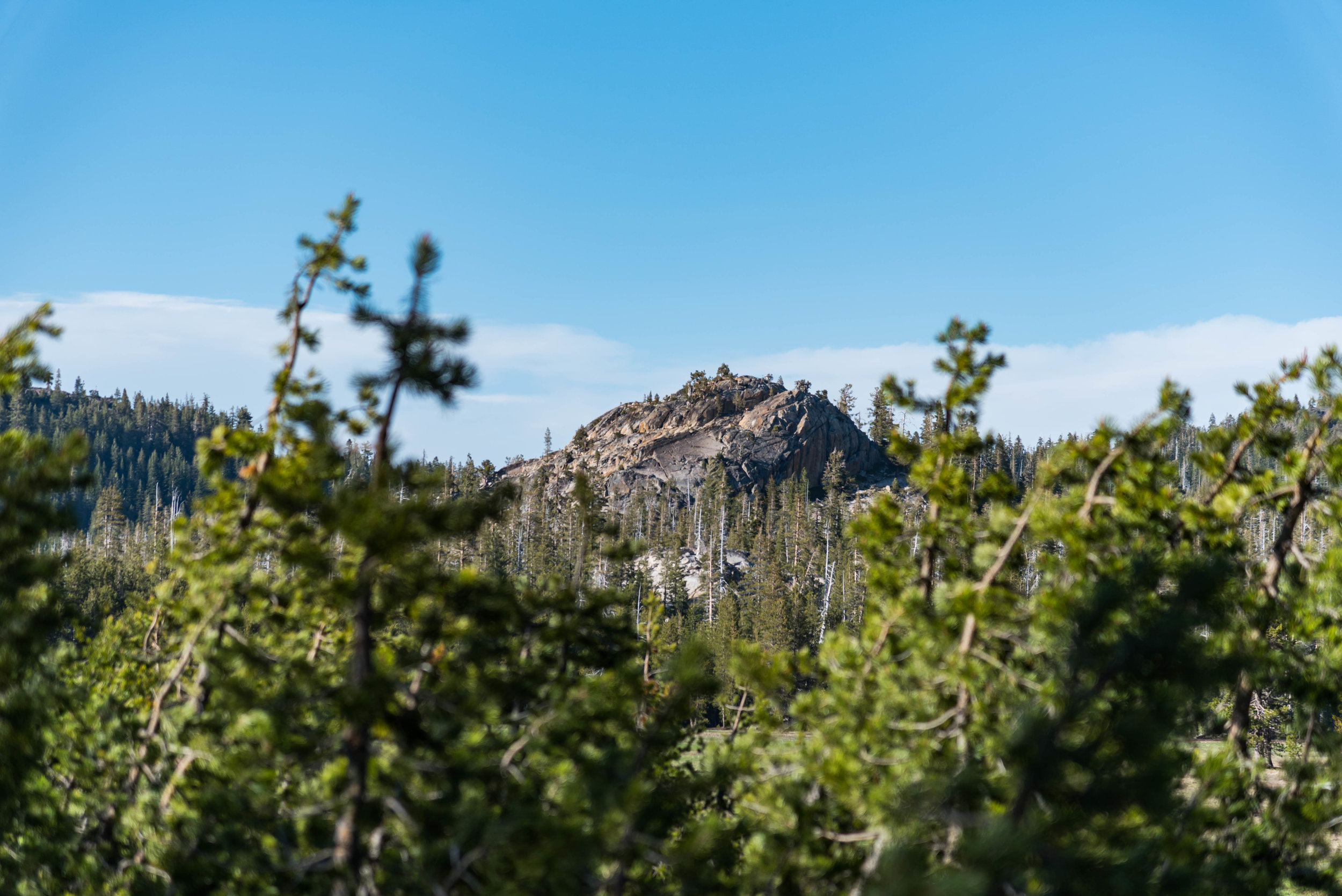Susie and I pushed off on our bikes bright and early from Kiefersfelden, around 9 a.m. Within three minutes we were over the border in Austria—her house is practically on the border, it’s not that we were biking really fast. It was sunny, our legs felt fresh, and the bags on our bikes didn’t feel all that heavy, yet. It was just the start of our four day bike touring adventure, after all. The plan was to wind our way south from Kiefersfelden in southern Germany over the border into Austria before turning west to cross Liechtenstein (which doesn't take long, even by bike). Once in Switzerland, we planned to wind our way through the lake country to Zürich where we’d catch a train home. About 400 kilometers in all. We didn’t have any time to spare so we didn’t build in rest days or touristy activities along the way. The trip was set to be Type 2.0 fun all the way and we were stoked.
Day 1
After crossing the border to Austria, Susie and I made good time to Innsbruck, where we stopped for a grocery store smorgasbord of ham, cheese, and bread. With 85 km behind us and another 65 km to go we hopped back on the bike in good spirits. Our elevation slowly started to increase as we made our way to Imst.
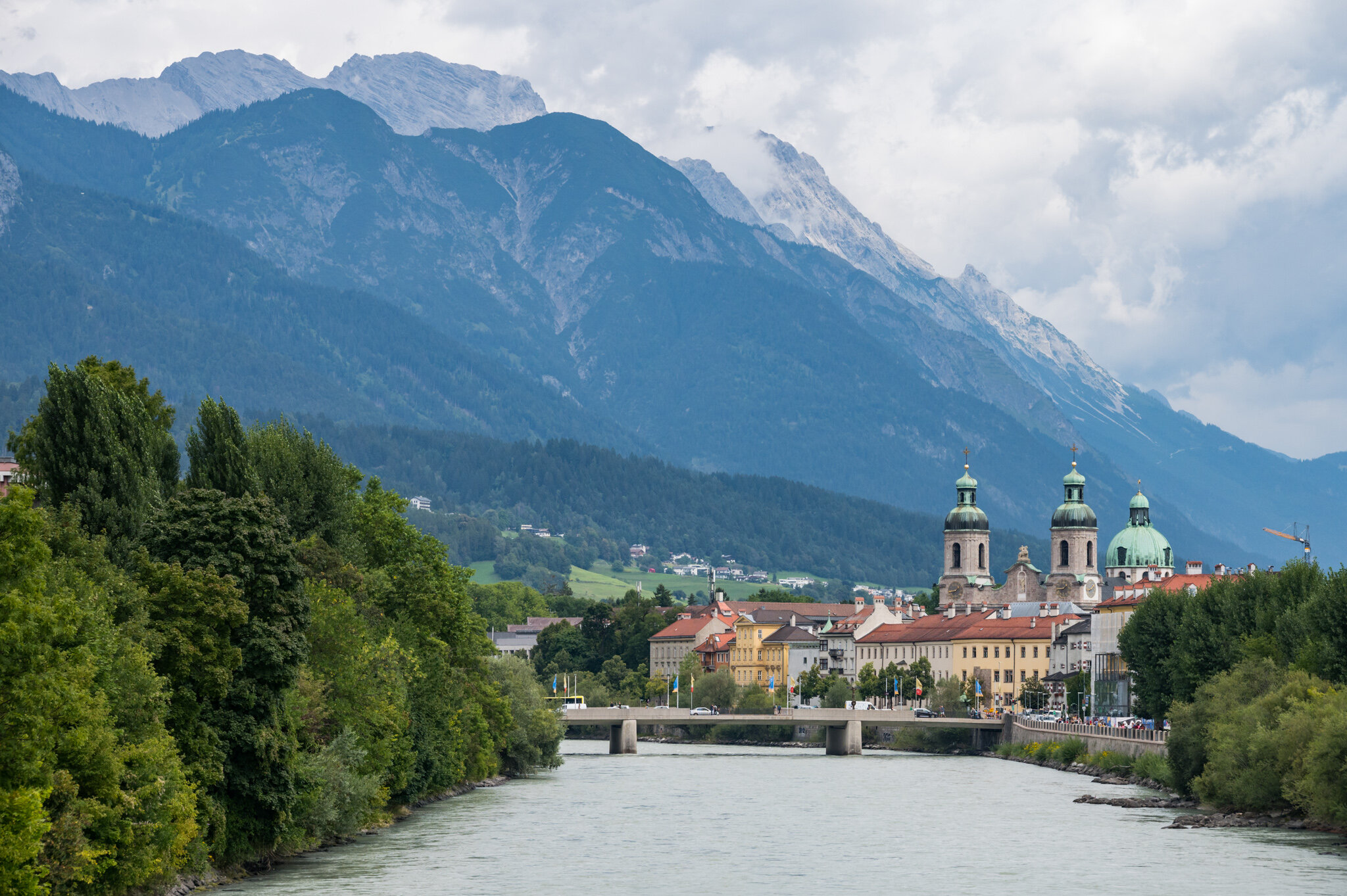


We climbed over a mountain pass with cars and trucks whizzing by us. Luckily this was one of the only parts of the ride with no bike lane. After descending into Imst I thought we were done, we were so close to our destination. But in the last 5 km we climbed straight up, sometimes at a 15% grade. We gained 400 meters (with many breaks in between) to our hotel in the mountains. I was huffing and puffing. It was already my longest ride ever, and now it included the most elevation I’d ever climbed as well, 1,296 meters. The effort seemed more worth it when the server at the hotel restaurant treated us with complimentary schnapps (which everyone got, it had nothing to do with us biking up the hill to the hotel).
I took a hot bath to ease my tired muscles but no position seemed comfortable for my legs so I gave up and dried off. We both climbed into bed and promptly passed out.
Day 2
Day 2 was set to be significantly easier than the first. A rest day, if you will. 68 kilometers from our hotel above Imst to a small hut in the mountain town of Stuben. We started off by descending the hill we’d worked so hard to climb the day before. Today, though, it was wet with morning dew and a sketchy route to ride. We didn’t spare a moment's thought for the alpine landscape spread out in front of us; or the charming town of Imst that we sped through on our way to the river at the bottom of the valley.

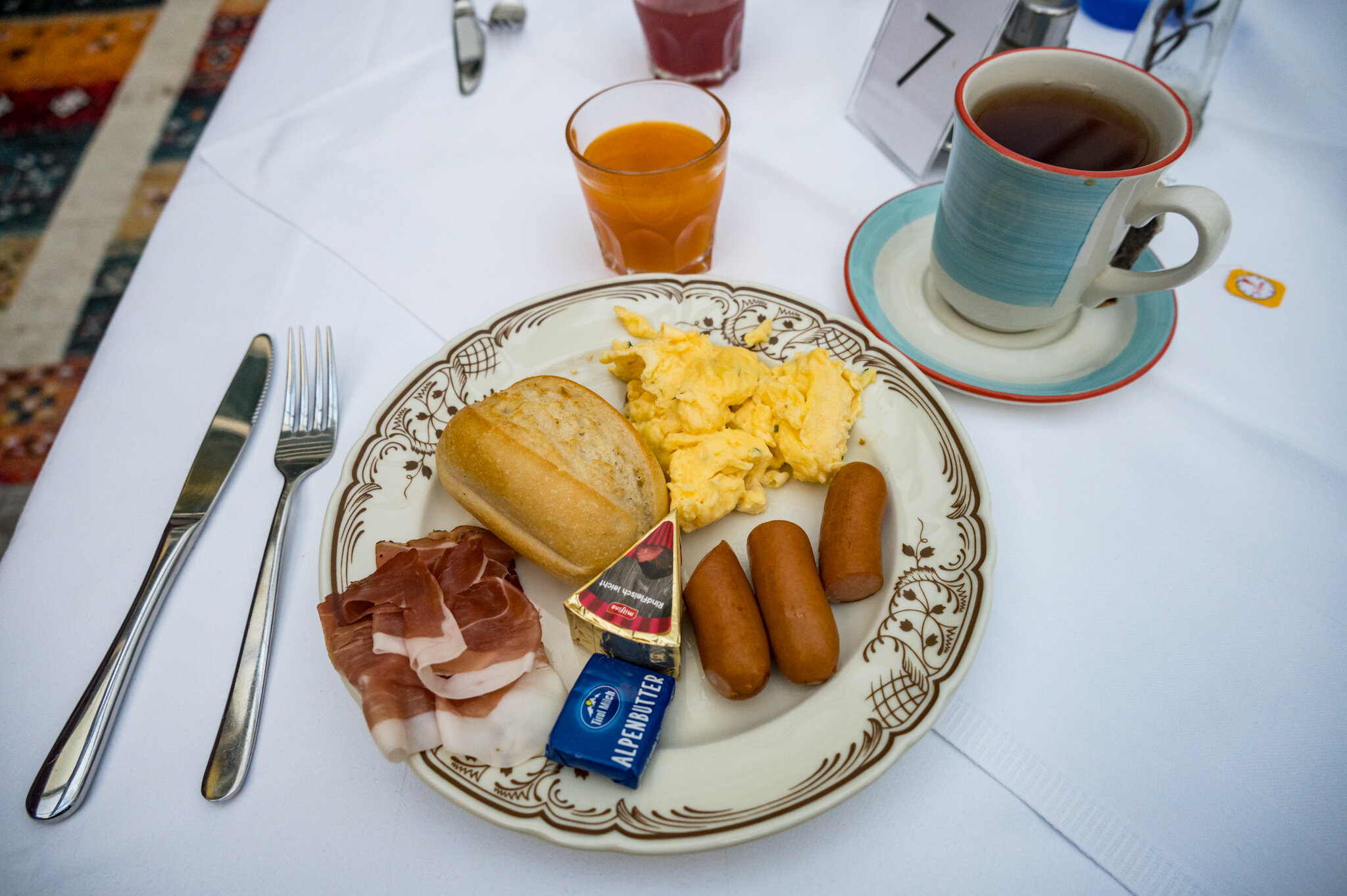
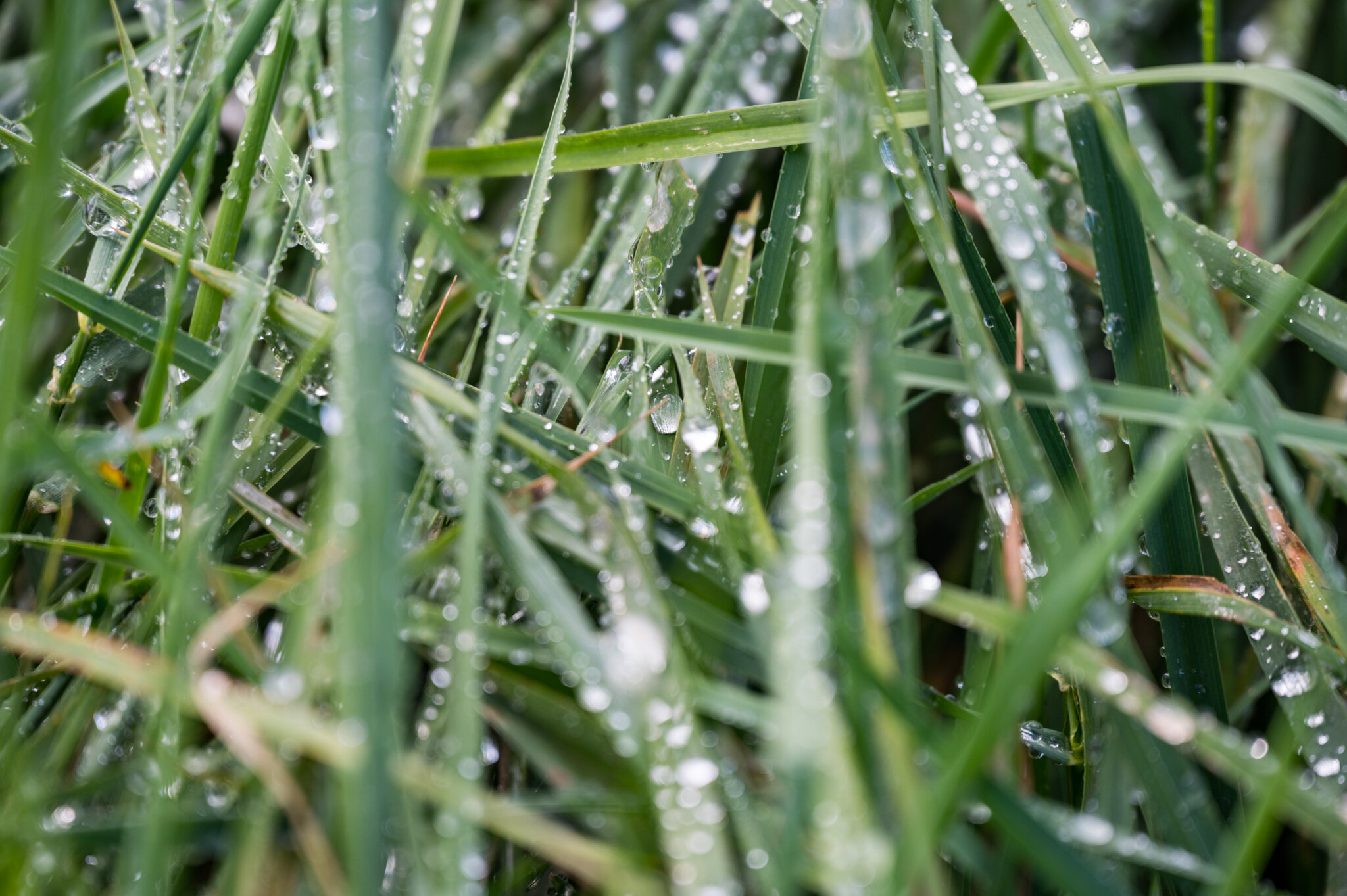
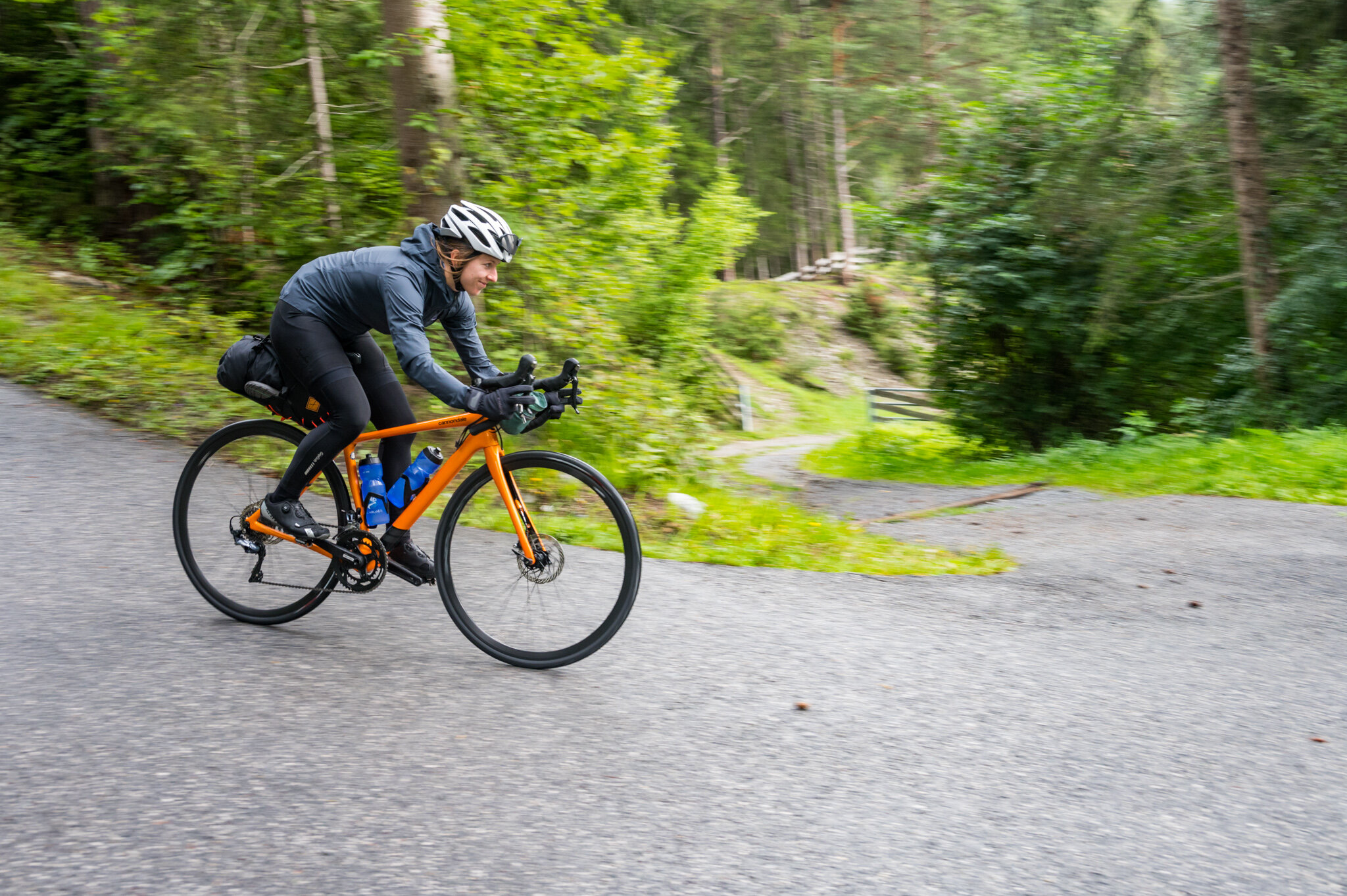
As we followed the river’s path up into the mountains we stopped and snacked on all manner of fruits from the local orchards. A local Oma (grandma) told me that as long as the branch hangs over the fence onto the road it’s fair game, so we enjoyed the apples, plums, and pluots guilt-free.
With the daring descent completed we breathed a sigh of relief, but Susie wouldn’t let me off too easily, even on a rest day. The route included a climb over the St. Anton am Arlberg pass, aka another 1,279 meters of climbing for the day. Our reward for the climb was another picturesque, speedy, and very chilly descent down to our hut in Stuben.
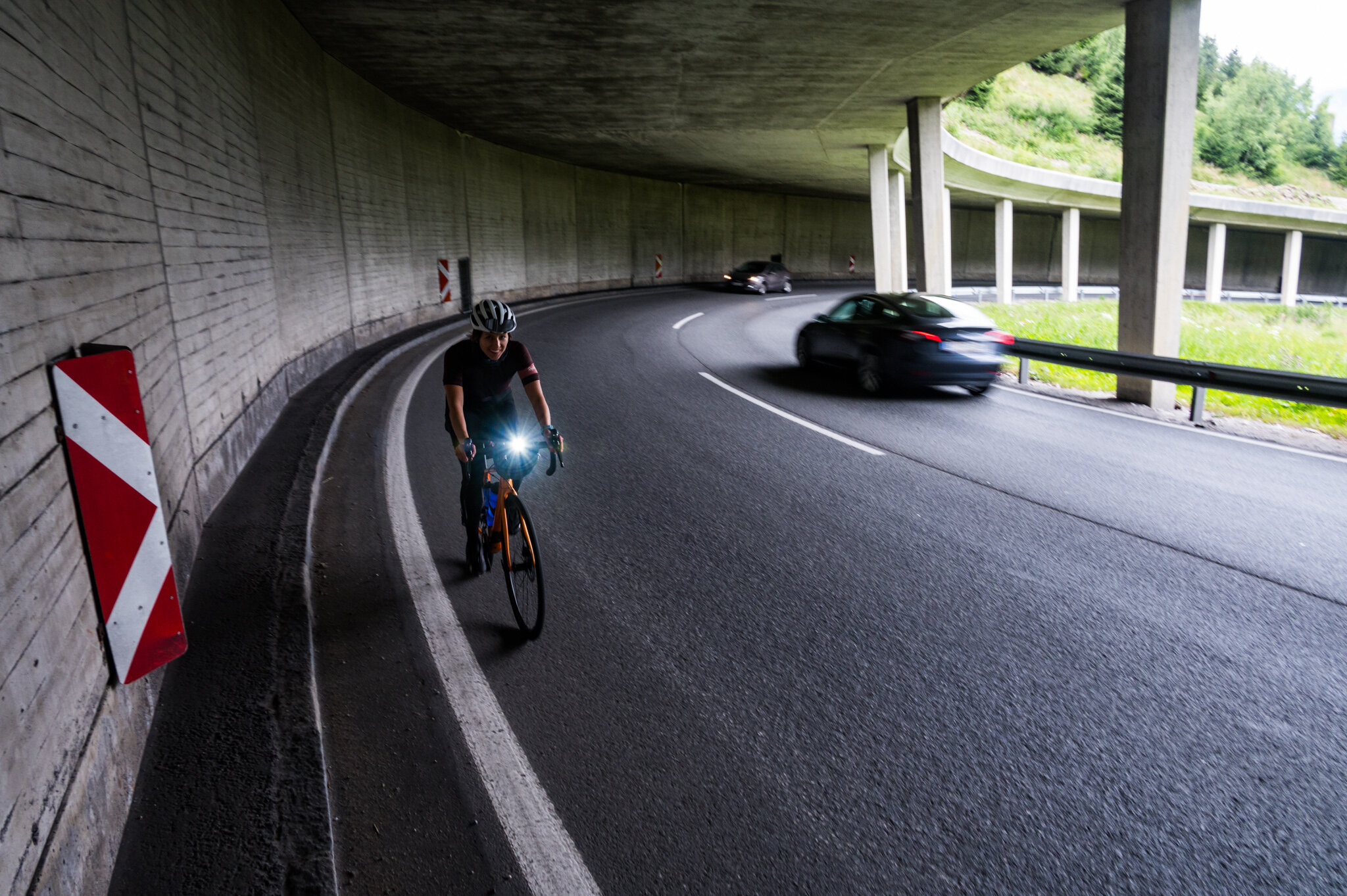
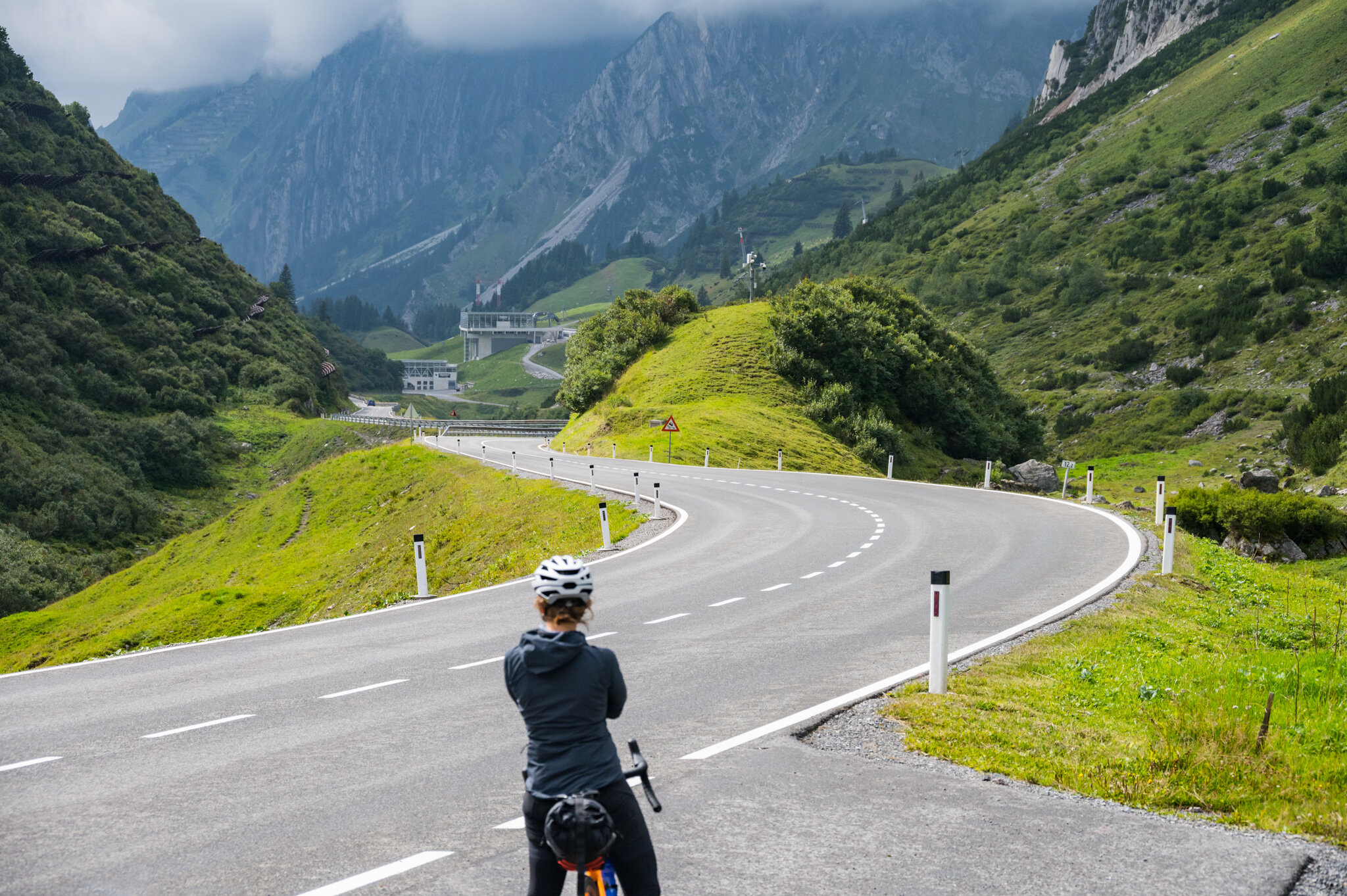
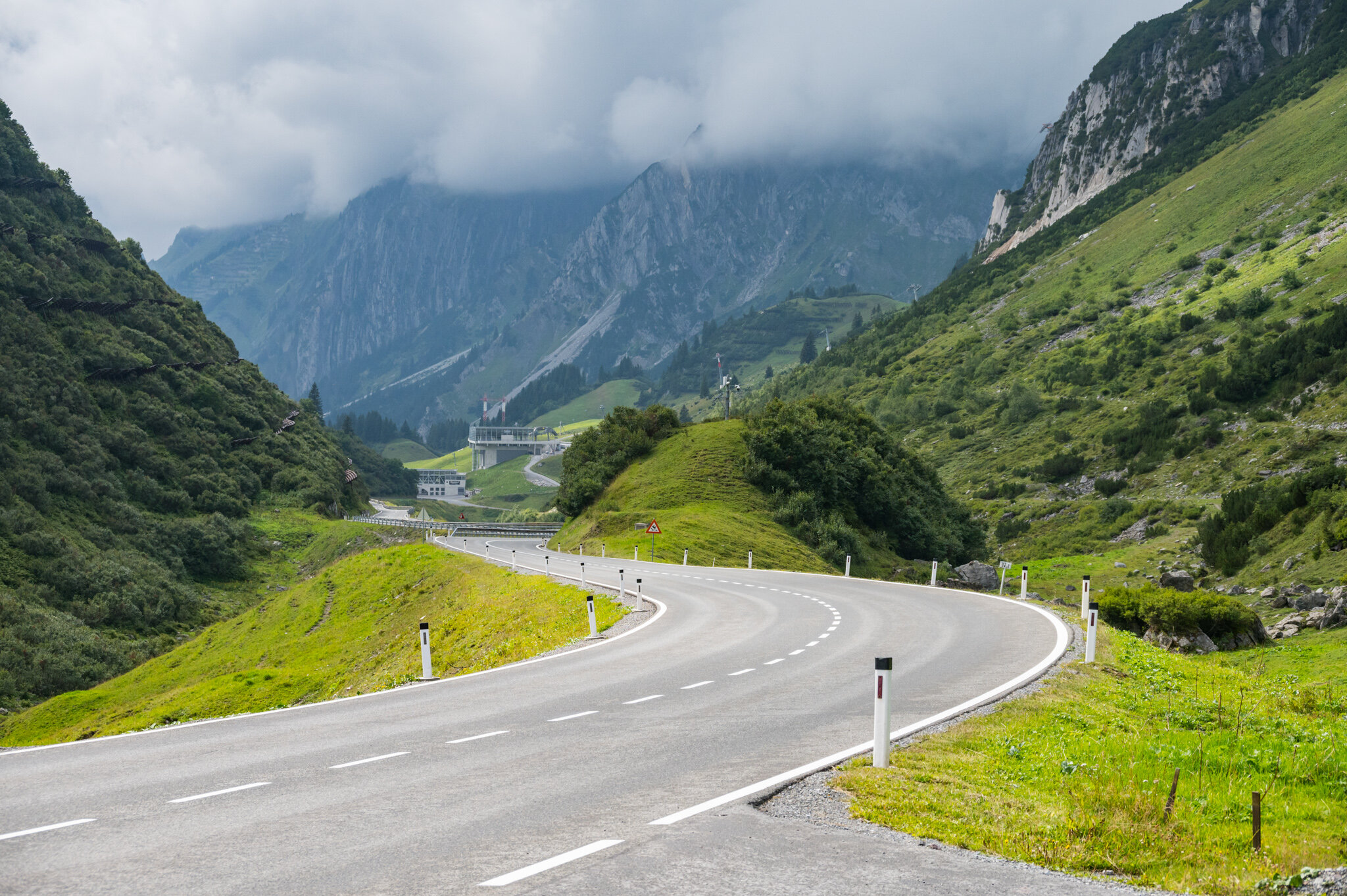
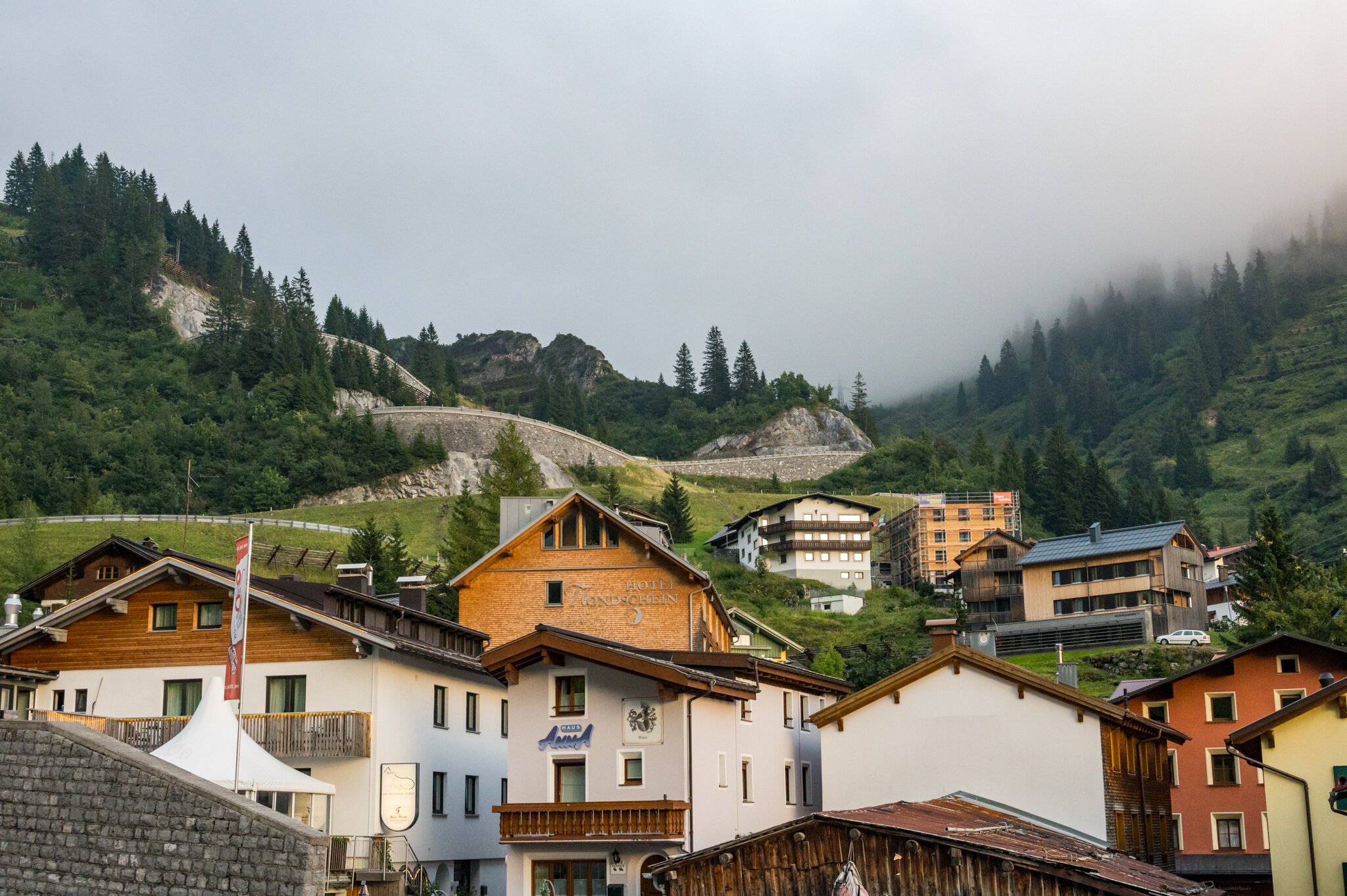
After a hot shower and thirty minutes curled up in our puffy jackets under the bed sheets we ventured out to one of only a handful of restaurants open in town that night. We stuffed ourselves to the brim and then rolled out and back into bed.
Day 3
The next morning we woke up early. We had a daunting 116 km to travel on our third day of riding, but luckily it was mostly downhill. Unfortunately, the weather was against us. We started by bundling up for a quick sprint down the hill to the nearest town with a bakery where we ate premade sandwiches and drank hot coffee and tea. As we sat there the rain started and we looked out the window nervously. Beginning a 116 km ride with rain was a recipe for wet feet the whole day. We put on every layer of clothing we had and made our way into the cold, wet mountain air. It was only a light dusting for now, so it wasn’t horrible. Before long, though, it became a downpour.
We wound our way down wet gravel paths with water soaking us from above and below. The downhill path was a blessing and a curse. We hardly had to pedal to keep up a good clip, but no peddling meant we weren’t warming ourselves up from the inside. My whole body was wracked with shivers so violent that I was worried I’d wrench the handlebars left or right and end up in the bushes. We got soaked through. And we laughed about it, mostly. Susie very smartly suggested stopping in the next town for another hot drink but I was worried that if we stopped we wouldn’t have the fortitude to get back on the bikes. So we pressed on.
Before we knew it we had pedaled the first 50 km to Feldkirch and we decided it was high time to make a stop for warmth and sustenance. The rain picked up again while we sat inside, still soaking wet from the morning’s wind-chilled descent. We waited for the rain to subside a bit and then ventured back out.
Not long after, Susie—thinking out loud—asked if we might already be in Liechtenstein. I hadn’t even thought about it, because Susie was in charge of mapping. While riding through a residential neighborhood we looked around and saw signs telling us we were in fact already in Liechtenstein: “FL” license plates, LIEmobil bus stop signs, and slightly different infrastructure accents (aka the cobble stones and curbs looked different).
We laughed that we’d almost missed it and talked about how small of a country it is for five minutes and before we knew it we were leaving already. We passed over the Rhine river on a wooden pedestrian bridge and stopped halfway to take pictures at the “border” before continuing on into Switzerland.
We were just over halfway to our destination and feeling strong when the rain and wind picked up again. It didn’t dampen our spirits but it definitely slowed us down. We wound our way around Walensee with whitecaps dotting the lake surface and the shore on the other side obscured by rain. It was definitely no picturesque Swiss getaway.
But we were making the most of it either way. The bike path which was rain-soaked but otherwise pristine snaked its way along the lake, up and down the cliffs until it spat us out in a new valley with an even heavier downpour. We’d been talkative and chatty all day but by this point we wanted to get there so little was said between us. We put our heads down and rode in the pouring rain along a gravel path that followed a canal up river towards Mollis.
When we finally made it to our Airbnb we removed our shoes and socks at the door to avoid making puddles on the floor and headed straight for the bathroom to wash up. We donned the same wet jackets we’d been wearing all day and set out for food, but there were few options. The only grocery store in town closed at 4 pm that Saturday, an hour and a half before we arrived. So we walked 20 minutes in the unceasing rain across the river to the slightly bigger town next door and walked into the only open restaurant, a burger joint.
In unintelligible Swiss-German, the waitress told us that they were full and we could only order to go. We sighed and looked forlornly outside at the sky. She didn’t budge, they were fully booked until closing. We ordered anyway, hoping that we might find a nice, covered, place to eat outside once our food was ready. Twenty minutes later the rain had lessened to merely a heavy mist, so we plopped our paper bag on the rock wall across the street and devoured our burgers and fries before heading home for sleep.
Day 4
The final day of our tour started early. Our train from Zürich back home to Susie’s apartment in Kiefersfelden would leave at 12:43 with or without us. We woke up at 6 and got on the road by 6:45 in order to give ourselves plenty of time to make the 70 km trip at a leisurely pace. I even insisted on building in extra time for emergencies.
6:15 a.m. Rain passing through the light made by a streetlamp outside our bedroom window.
And it’s a damn good thing I did. 45 minutes after leaving Mollis, Susie fell back behind me and looked down. Something was wrong with her bike. She had a flat tire. We groaned but quickly realized it could be a lot worse. It wasn’t raining, we had all the gear we needed to fix this kind of problem, and we had built in plenty of extra time for exactly this scenario. After a quick repair we were back on the road. No problem.
The rain stayed at bay for another few hours as we made our way across the valley and towards Obersee and Zürichsee. We stopped at a BP gas station for a late breakfast and continued on, crossing the lake before riding through the never ending neighborhoods around the lake. We arrived in Zürich with plenty of time to spare. In no rush, we picked up our tickets, grabbed some food and celebratory beer, and headed to our platform.
The train ride followed our bike route almost exactly, in reverse. In four hours we wound around the lakes and mountains that had taken us four days to conquer on our bikes. But we didn’t mind that it was so easy by comparison. It gave me a chance to see all of the sights without sweat running down my face or rain dripping from my knees. And it gave us greater appreciation for what we’d just accomplished.

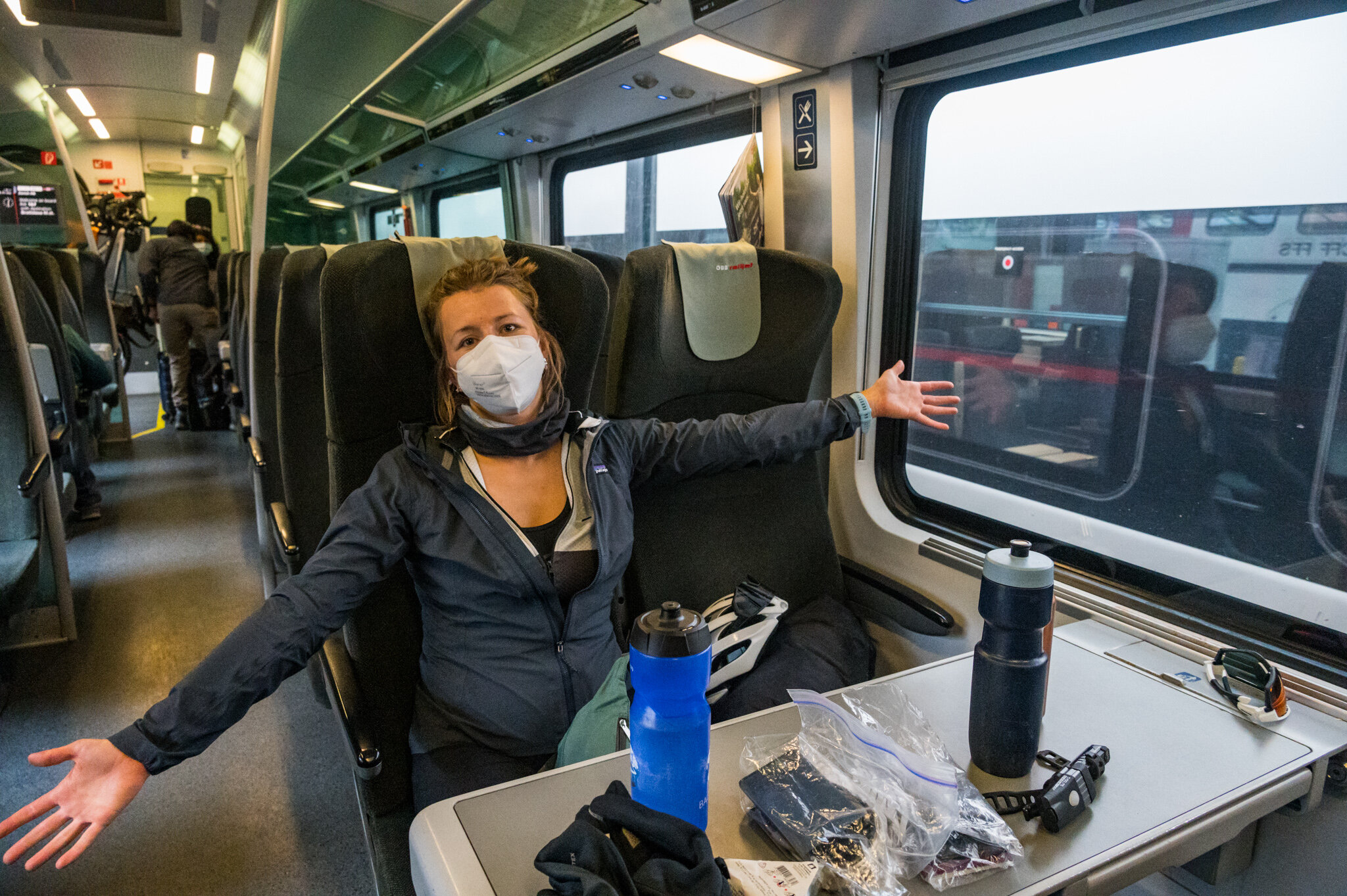
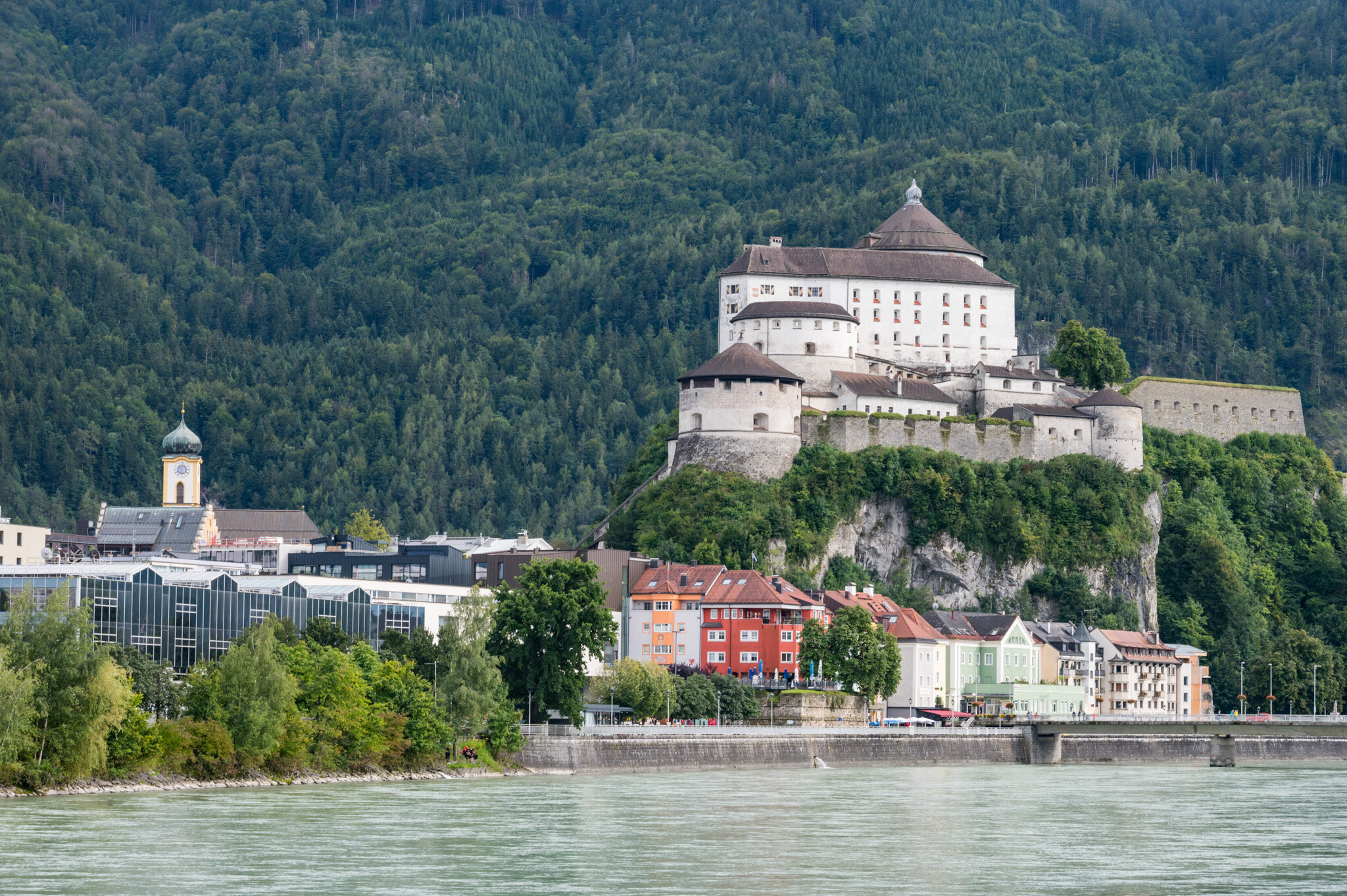
We rode 400 kilometers and 3,260 meters of elevation on our bikes over four days. When we made it back home I slapped the side of Susie’s building in victory and let out a sigh of relief.
